Posts Tagged therapy
Everything You “Know” About Life You Learned as a Fetus: Foundations of Myth and Mind and my Personal Involvement with This Research into Our Actual “Human Nature”
Posted by sillymickel in activism, authenticity, being yourself, Culture, globalrevolution, individualism, meaning, philosophy, psychology, spirituality on June 5, 2013
Your Map of Reality Was Written in the Womb: Falls from Grace, Chapter One — Prenatal and Perinatal Psychology and the Phenomenon of Re-Experience
Pre- and Perinatal Psychology and the Phenomenon of Re-Experience
Prenatal and perinatal psychology is the field that deals with the effects of events occurring prior to (prenatal) and surrounding (perinatal) the time of birth upon later life and personality. An ever increasing amount though certainly not all of the information we have about these periods of our lives and their effects is derived through the later and  vivid remembering of these events in a phenomenon known as re-experience. Correspondingly, the two most frequently asked questions about this relatively new field, put by those initially encountering it, are those concerning the specific meanings of the terms perinatal and re-experience.
vivid remembering of these events in a phenomenon known as re-experience. Correspondingly, the two most frequently asked questions about this relatively new field, put by those initially encountering it, are those concerning the specific meanings of the terms perinatal and re-experience.
At the outset, I wish to present an explanation of these two terms and of my unique personal relation to this topic as well as some of my background in exploring it. I will follow this with an historical overview of the field of prenatal and perinatal psychology, which will reveal the key concepts and understandings employed throughout this book.
Re-Experience and Reliving
For over forty years, beginning in 1972 when I was a senior undergraduate in college, I have been involved both personally and professionally in a comprehensive investigation into the phenomenon of re-experience. Also called reliving, this phenomenon is reported to consist of a full somato-cognitive remembering of previous events in a person’s life. Reliving involves experiential but also observable and measurable components, such as brain wave changes, characteristic physiological and neurological changes, and typical observable body movements.
This phenomenon can occur, to varying degrees, in many consciousness-altering modalities—including hypnosis, LSD psychotherapy, primal therapy, rebirthing, and holotropic breathwork; to a considerable degree in re-evaluation co-counseling and treatment for post-traumatic stress disorder; and, occasionally and spontaneously, even in mainstream forms of psychotherapy, counseling, and “growth seminars.”
to a considerable degree in re-evaluation co-counseling and treatment for post-traumatic stress disorder; and, occasionally and spontaneously, even in mainstream forms of psychotherapy, counseling, and “growth seminars.”
Re-experience is a more vivid and more completely somatic catharsis than what has been described in psychotherapy in terms of abreaction. It is in such contrast to normal abreaction that when these seemingly bizarre yet healing events have spontaneously erupted in traditional or mainstream Western contexts they have usually been mistakenly labeled psychotic, been intervened upon, and then aborted—via drugs and other highly coercive measures—by the attending therapeutic authorities.
.
However, with an increasing appreciation for their therapeutic value, these events are gradually becoming understood and accepted in therapeutic contexts and thus allowed to complete themselves and to instruct the participants and observers in their meanings. Therefore, they appear to represent something new in our culture in terms of both a way of approaching knowledge and in terms of the kinds of information that are discovered (Grof 1976, 1985; Hannig 1982; Janov 1971; Lake 1966/1986; Noble, 1993; Stettbacher, 1992).
My Relationship to the Phenomenon of Re-Experience
My interest in the phenomenon of reliving began forty-four years ago at Franklin and Marshall College in Lancaster, Pennsylvania. As an undergraduate there I was most inspired by a course in religious studies titled “Religious and Psychological Approaches To Self-Understanding.” I was so inspired by the course that I constructed my major around its topic and initially even used the same title for my program’s name. This major in “self-understanding” would lead me, in a few years, to a profound interest in and exploration of primal therapy, as presented by Arthur Janov (1970) in his much-publicized book, The Primal Scream: Primal Therapy: The Cure for Neurosis.
 By 1972, I had completed all but the one final semester for a B.A. That semester was to include the cumulative project—required of such a Special Studies (individually structured) major. However, since my project would focus on primal therapy and one of primal therapy’s basic premises is that knowledge cannot really be known except through experience, I could not in good conscience turn in a project describing primal therapy without first experiencing it. Consequently I withdrew from college, for what was supposed to be only a semester, with the intention of “going through” primal therapy and then returning to school to write my cumulative project on it. In those days, the entire process of primal therapy was reputed to take only three to six months.
By 1972, I had completed all but the one final semester for a B.A. That semester was to include the cumulative project—required of such a Special Studies (individually structured) major. However, since my project would focus on primal therapy and one of primal therapy’s basic premises is that knowledge cannot really be known except through experience, I could not in good conscience turn in a project describing primal therapy without first experiencing it. Consequently I withdrew from college, for what was supposed to be only a semester, with the intention of “going through” primal therapy and then returning to school to write my cumulative project on it. In those days, the entire process of primal therapy was reputed to take only three to six months.
But a lot was unknown about that modality in those early days. As it turned out, I would not return to school to complete that final project until 1978—at which point I had five years’ experience of primal therapy behind me and was living in Denver, Colorado.
In addition to these experiences, I have amassed a broad array of other experience and training over the years that have contributed to my understanding of re-experience and of this field in general. Besides my two decades and more of primal therapy … both formally and in “the buddy system” … I have received training as a primal therapist. I am also a trained rebirther, having explored that modality since 1986. I have been experientially exploring the modality of holotropic breathwork since 1987 and did training with Stanislav and Christina Grof in that technique.
Finally, I have been facilitating people in their journeys into deep inner primal and holotropic states since 1975. I’ve given individual sessions in all three modalities of primal therapy, rebirthing, and holotropic breathwork. And with my wife, Mary Lynn Adzema, I conducted three day workshops in something we called primal breathwork. I’ve conducted two-day group workshops in this modality at conferences, which were attended by as many as sixty experiencers at a time.
Thus, I have experience in my own process in these modalities; but in addition I have facilitated for others on many occasions, and at times, it was my main profession—though most of my life I have spent in writing, teaching, and research.
Pre- and Perinatal Re-Experience
Re-experience of birth and of the events immediately prior to and after birth are termed perinatal—from the Greek, literally “surrounding birth.” It has been widely described at this point by a number of authors but is most closely associated with the work of Stanislav Grof, Arthur Janov, and Frank Lake.
However, one significant and as yet little explored or understood phenomenon, arising also from the modalities mentioned, is that of prenatal re-experience. In this case, the experiencer reports … and observationally appears to be … experiencing events that happened en utero, sometimes going back as far as sperm, egg, and zygote states (Buchheimer 1987; Farrant 1987; Grof 1976, 1985; Hannig 1982; Janov 1983; Lake 1981, 1982; Larimore 1990a, 1990b; Larimore & Farrant, 1995).
These reports of remembering experiences that occurred before birth are at such variance with Western professional and popular paradigms that they are met with near-universal incredulity and, too often, premature dismissal. Yet the evidence from the mounting numbers of experiential reports and empirical studies attests that something which is at least unique and interesting is going on here.
Nevertheless, much of this prenatal information is thus far unformulated, untheorized, and unintegrated into a coherent structure for making sense of these experiences. This book will go a long way toward doing just that—making sense of prenatal experiences and exploring the implications and prospects of the knowledge gleaned from this fascinating new area of research and which arises from the vision that an exposure to this material induces.
The present work represents an attempt to bring this new information concerning our origins and our earliest experiences into such a coherent structure. After the initial overview of the field to be presented in this chapter, I deepen that review of the current understanding and findings in this area in making a case, in Chapter Two, for the legitimacy of prenatal spirituality.
First, let us take a closer look at what we know about the time before and around birth and what it means for us throughout our lives.
Overview of the Pre- and Perinatal Psychology Field—Early Theorists: Psychoanalysis and Birth
Sigmund Freud — Birth as Prototype for All Anxiety

 While Freud (1927) disregarded major effects of birth on personality, he still saw the birth experience as the prototype of all later anxiety. His overall disregard of birth, however, was largely influenced by the belief—although discredited (see Chamberlain, 1988), still common in mainstream psychology and medicine today—that a newborn does not possess the neurological capacity for consciousness at birth.
While Freud (1927) disregarded major effects of birth on personality, he still saw the birth experience as the prototype of all later anxiety. His overall disregard of birth, however, was largely influenced by the belief—although discredited (see Chamberlain, 1988), still common in mainstream psychology and medicine today—that a newborn does not possess the neurological capacity for consciousness at birth.
Otto Rank — Psychoanalysis, Birth Trauma, Foundations of Personality and Some Myth, Separation Anxiety
Other early psychoanalysts disagreed with Freud on this. Otto Rank is the most notable of these. Following Freud’s basic psychoanalytic reasoning for personality patterns in early infancy,  he asserted basic patterns of experience and ideas that are rooted in even earlier experience. Rank (1929) claimed the deepest, most fundamental patterns of these personality constructs originated at the time of birth, which Freud thought was not possible. Based upon the dream, fantasy, and other patterns of associations arising in his patients in psychoanalysis, Rank postulated a birth trauma, which he saw as a critical event in laying down in each of us particular patterns of thinking, motivation, and emotion for the rest of our lives. Notable among these prototypes was a feeling of a paradise once known but somehow lost, a separation anxiety caused by the separation at birth, and a resulting futile and lifelong struggle to re-unite with that golden age and that early beloved because of a desire to return to the womb.
he asserted basic patterns of experience and ideas that are rooted in even earlier experience. Rank (1929) claimed the deepest, most fundamental patterns of these personality constructs originated at the time of birth, which Freud thought was not possible. Based upon the dream, fantasy, and other patterns of associations arising in his patients in psychoanalysis, Rank postulated a birth trauma, which he saw as a critical event in laying down in each of us particular patterns of thinking, motivation, and emotion for the rest of our lives. Notable among these prototypes was a feeling of a paradise once known but somehow lost, a separation anxiety caused by the separation at birth, and a resulting futile and lifelong struggle to re-unite with that golden age and that early beloved because of a desire to return to the womb.
Nandor Fodor — Dreamwork, Birth and Prenatal Processing and Relivings, Prenatal Origins of Consciousness and Trauma
Also a psychoanalyst, Nandor Fodor (1949) focused on the reflections of birth and prenatal material in dreams. He also designed interventions in therapy to release the negative effects of birth and to process prenatal memories. He was the first to mention actual relivings of birth, in which veridical memories were recovered. He agreed with Rank on many points, but he stressed the origins of consciousness and of trauma being in the prenatal period.
Donald W. Winnicott — First Primal Therapist? Birth Relivings, Importance of Birth—Negative Imprints but Positive Effects, Too
 Another psychoanalyst, and pediatrician as well, Winnicott (1958) also held that birth is remembered and is important. He insisted that the birth trauma is real, but he disagreed with Rank and Fodor that it is always traumatic. He suggested that a normal, nontraumatic, birth has many positive benefits, particularly for ego development. Still, he contended that traumatic birth is permanently etched in memory and leaves a lifetime psychological scar. Winnicott (1958) also suggested the possibility of prenatal trauma.
Another psychoanalyst, and pediatrician as well, Winnicott (1958) also held that birth is remembered and is important. He insisted that the birth trauma is real, but he disagreed with Rank and Fodor that it is always traumatic. He suggested that a normal, nontraumatic, birth has many positive benefits, particularly for ego development. Still, he contended that traumatic birth is permanently etched in memory and leaves a lifetime psychological scar. Winnicott (1958) also suggested the possibility of prenatal trauma.
He has been called the first primal therapist in that he described the first birth primals—actual observable relivings of birth—spontaneously occurring by some of his patients during their sessions with him. Thus he was beginning the trend beyond mere talking association or dream analysis as ways of accessing and integrating this material.
Overview of the Pre- and Perinatal Psychology Field — Later Research and Theorists: Hypnosis, Primal Therapy, and Birth
David Cheek and Leslie LeCron — Hypnosis, Birth Memories and Imprints on Personality and Relation to Psychiatric Disorders
Cheek and LeCron (1968) used hypnosis to retrieve early memories in their patients. They discovered that memories earlier than what they expected, going back to birth, were possible. Importantly, a relief of symptoms seemed to follow from the re-experience of these birth memories. They came to the conclusion that a birth imprint occurs, which is induced by the extreme stress of that time and is resistant to fading from later experience. Further they asserted that this imprint could be the cause of a wide spectrum of psychiatric and psychosomatic disorders.
Importantly, a relief of symptoms seemed to follow from the re-experience of these birth memories. They came to the conclusion that a birth imprint occurs, which is induced by the extreme stress of that time and is resistant to fading from later experience. Further they asserted that this imprint could be the cause of a wide spectrum of psychiatric and psychosomatic disorders.
Leslie Feher — Psychoanalysis, Birth, Cutting of Umbilical Cord, Separation Trauma
Leslie Feher (1980) sought to extend the Freudian tradition farther back into areas that, she asserts, were until only recently unknowable.  Thus, she describes a natal theory and therapy that includes experiences of cutting the umbilical cord, birth, and even prebirth. In fact, she considers the cutting of the umbilical cord to be central in her theory of trauma, calling it the “crisis umbilicus,” and echoes Fodor in claiming that it is the true origin of the castration fears made so much of in psychoanalysis. This is so because, according to Feher, the cord and placenta is an object of security and is considered by the fetus to be part of him- or herself. Thus, this cutting represents a supreme threat in being a separation from a total life support system, a major organ, a part of oneself. In these ways, she also brings forward for renewed appreciation Rank’s speculations on the element of separation trauma as a crucial element of the birth trauma.
Thus, she describes a natal theory and therapy that includes experiences of cutting the umbilical cord, birth, and even prebirth. In fact, she considers the cutting of the umbilical cord to be central in her theory of trauma, calling it the “crisis umbilicus,” and echoes Fodor in claiming that it is the true origin of the castration fears made so much of in psychoanalysis. This is so because, according to Feher, the cord and placenta is an object of security and is considered by the fetus to be part of him- or herself. Thus, this cutting represents a supreme threat in being a separation from a total life support system, a major organ, a part of oneself. In these ways, she also brings forward for renewed appreciation Rank’s speculations on the element of separation trauma as a crucial element of the birth trauma.
Arthur Janov — Primal Therapy, Traumas of Birth and Early Life and Healing Them, Empirical Foundations and Neurophysiology of Early Events and Healing
 Perhaps the major theorist and popularizer of the phenomenon of re-experience (which he termed primaling), Janov was reluctant to acknowledge the pervasiveness of pre- and perinatal re-experience and trauma. Yet when he did, it was in a major work on birth trauma, which remains as a touchstone in the field in its depth and detail. Imprints: The Lifelong Effects of the Birth Experience, published in 1983, among other things places birth as the determining factor in creating basic personality constructs, called sympathetic and parasympathetic, which roughly coincide with the more common terms introversion and extroversion.
Perhaps the major theorist and popularizer of the phenomenon of re-experience (which he termed primaling), Janov was reluctant to acknowledge the pervasiveness of pre- and perinatal re-experience and trauma. Yet when he did, it was in a major work on birth trauma, which remains as a touchstone in the field in its depth and detail. Imprints: The Lifelong Effects of the Birth Experience, published in 1983, among other things places birth as the determining factor in creating basic personality constructs, called sympathetic and parasympathetic, which roughly coincide with the more common terms introversion and extroversion.
 This work is more empirical and neurophysiologically rooted than most in the field. While the book is recognized in the field, Janov and his work have not gotten anywhere near the respect and attention that they deserve. He remains the unfortunate kicking-boy of a movement that is itself scapegoated by the academy and the larger scientific community.
This work is more empirical and neurophysiologically rooted than most in the field. While the book is recognized in the field, Janov and his work have not gotten anywhere near the respect and attention that they deserve. He remains the unfortunate kicking-boy of a movement that is itself scapegoated by the academy and the larger scientific community.
Thomas Verny — Primal Therapy, Birth, Especially Womb Life and Relation to Personality … Prenatal Mother-Infant Bonding
![]() The actual stimulus for a new field of pre- and perinatal psychology and the Association for Pre- and Perinatal Psychology and Health—APPPAH was Thomas Verny’s (1981) The Secret Life of the Unborn Child.
The actual stimulus for a new field of pre- and perinatal psychology and the Association for Pre- and Perinatal Psychology and Health—APPPAH was Thomas Verny’s (1981) The Secret Life of the Unborn Child. His work brought together a good deal of the new empirical research that had opened the doors to us on the events in the womb. While himself a practitioner of “holistic primal therapy,” he integrated the accumulating data from the phenomenon of re-experience with the new information from the more traditional, “objective,” scientific research into the prenatal—made possible by the latest advances in technology.
His work brought together a good deal of the new empirical research that had opened the doors to us on the events in the womb. While himself a practitioner of “holistic primal therapy,” he integrated the accumulating data from the phenomenon of re-experience with the new information from the more traditional, “objective,” scientific research into the prenatal—made possible by the latest advances in technology.
One of his conclusions from this combination of lines of inquiry was that “birth and prenatal experiences form the foundations of human personality” (1981, p. 118).  His other conclusions center around the importance of intrauterine bonding in that his research strongly suggests that the prenate, via pathways hormonal and unknown, picks up on the thoughts, feelings, and attitudes of the mother. More importantly, he asserted, the imprint of these factors on the fetus predetermines the later mother-child relationship. He emphasized that positive thoughts and feelings toward the fetus—”maternal love”—acts to cushion the new individual against the normal stresses and unavoidable harshness inherent in birth and early infancy. Yet all of this cannot be completely avoided. “Birth is like death to the newborn,” writes Verny (1984, p. 48).
His other conclusions center around the importance of intrauterine bonding in that his research strongly suggests that the prenate, via pathways hormonal and unknown, picks up on the thoughts, feelings, and attitudes of the mother. More importantly, he asserted, the imprint of these factors on the fetus predetermines the later mother-child relationship. He emphasized that positive thoughts and feelings toward the fetus—”maternal love”—acts to cushion the new individual against the normal stresses and unavoidable harshness inherent in birth and early infancy. Yet all of this cannot be completely avoided. “Birth is like death to the newborn,” writes Verny (1984, p. 48).
David Chamberlain — Hypnosis, Confirmed Validity of Birth Memories
David Chamberlain (1988), for many years the president of APPPAH (the Association for Prenatal and Perinatal Psychology and Health), has further substantiated the claim of consciousness at birth and the accuracy of pre- and perinatal memory in the phenomenon of re-experience.  He reported one study he did in which he compared hypnotically retrieved memories of birth from mother and child and found an astonishing degree of conformity in their responses. Of note was the degree of inner consistency and originality in these memories as reported by the former neonate. They often contained technical details of the delivery and labor unlike what would be expected of the medically unsophisticated, a perceptive critique of the way the birth was handled, and other details of the event that could not have been known through normal conscious channels.
He reported one study he did in which he compared hypnotically retrieved memories of birth from mother and child and found an astonishing degree of conformity in their responses. Of note was the degree of inner consistency and originality in these memories as reported by the former neonate. They often contained technical details of the delivery and labor unlike what would be expected of the medically unsophisticated, a perceptive critique of the way the birth was handled, and other details of the event that could not have been known through normal conscious channels.
.
Overview of the Pre- and Perinatal Psychology Field — Later Theorists: Societal Implications, Psychohistory, Birth and Prenatal
Lloyd deMause — Psychohistory, Prenatal and Poisonous Placenta, Sociohistorical Implications of Gestational and Birth Events
 Lloyd deMause (1982, 1987) was instrumental in establishing the new interdisciplinary field of psychohistory. In his study of historical happenings he discovered that stages in the progression of events related to stages in the progression of gestation and birth … which stages happened to correspond, by the way, remarkably well with Stanislav Grof‘s four stages of birth, his Basic Perinatal Matrices.
Lloyd deMause (1982, 1987) was instrumental in establishing the new interdisciplinary field of psychohistory. In his study of historical happenings he discovered that stages in the progression of events related to stages in the progression of gestation and birth … which stages happened to correspond, by the way, remarkably well with Stanislav Grof‘s four stages of birth, his Basic Perinatal Matrices.
 He found that natal imagery especially predominates in societies during times of crisis and war, when national purpose and state of affairs are construed as a need to escape or break free from an enclosing and constricting force. He also noted the suffering fetus and the poisonous placenta as sources of these later metaphors and imagery. In fact, in studying the imagery in the national media of various countries he has been able to predict political, social, and economic events such as wars and invasions, recessions, and political downfalls.
He found that natal imagery especially predominates in societies during times of crisis and war, when national purpose and state of affairs are construed as a need to escape or break free from an enclosing and constricting force. He also noted the suffering fetus and the poisonous placenta as sources of these later metaphors and imagery. In fact, in studying the imagery in the national media of various countries he has been able to predict political, social, and economic events such as wars and invasions, recessions, and political downfalls.
His work begins to look at the prenatal influences and imprints and how they related to macrocosmic issues of politics, history, social movements, and issues of war and peace.
Later Theorists — Dream Analysis
Francis Mott — Conception and Gestational Basis of Myth, Archetype, all Patterns of Macrocosmic and Microcosmic Realities and the Nature of Reality, Devolutional Model of Development
Francis Mott’s work is less well known even by this field’s standards, yet it is undeniably impressive. Mott’s (1960, 1964) major contribution lies in his focusing on basic patterns of mind and cosmos that correlate with prenatal feelings and states. He traced consciousness back to events around conception and saw these events as instituting patterns affecting all later experience and conceptual constructions. Through dream analysis he elicited these “configurations,” and he demonstrated their manifestation as seemingly universal archetypes in myths and universal human assumptions about the nature of reality.
In fact, through his study of womb and conception patterns he claimed to have discovered patterns that underlie and unite all of reality at all levels of manifestation—astronomical, social, personal, cellular, and even nuclear. While this may seem rather grandiose, his work was highly regarded and admired by Carl Jung.
Mott also carried forward the intimations of earlier prenatal theoreticians, notably Rank and Fodor, on the gestational basis of archetypes. While he does not address or seek to discredit the range of, supposedly genetic, archetypes postulated by Jung, his work is highly suggestive of an experiential, specifically, pre- and perinatal, as opposed to genetic basis for many of these.
Denial and Incest Taboo
Mott (1960) also helped us to understand why if these prenatal memories are possible they are not more prevalent by suggesting denial is necessary in order to protect against incestuous feelings that might arise around feelings remembered from being inside one’s mother.
Devolutional Model of Consciousness Development
Finally, he made the postulation—hugely relevant to the theme of this work—that our original expanded capacity to feel is diminished, as he says, “divided,” by experience not increased by it. The idea is that there is a reduction in awareness as a result of early traumatic events, beginning around conception and then on, and not the buildup of consciousness and feeling that we assume from the mechanistic paradigm that sees consciousness as a byproduct of increasing physical, specifically brain, activity during our early years. (See, for example, The Doors of Perception: Each of Us Is Potentially Mind At Large… When Perception Is Cleansed, All Kinds of Nonordinary Things Happen and Occupy Science … A Call for a Scientific Awakening: In Tossing Away Our Species Blinders, We Approach a Truth Far Beyond Science.)
Later Theorists — Breathwork
Stanislav Grof — Breathwork, LSD, Birth and Prenatal, Myth and Archetype, Spiritual and Consciousness
![]() A pioneer in this prenatal area is Stanislav Grof (1976, 1980, 1985, 1990, to name a few). His many works, providing a framework for conceptualizing perinatal and transpersonal experiences, are a profound and useful starting point for an investigation into this area.
A pioneer in this prenatal area is Stanislav Grof (1976, 1980, 1985, 1990, to name a few). His many works, providing a framework for conceptualizing perinatal and transpersonal experiences, are a profound and useful starting point for an investigation into this area.
In his use of LSD beginning in 1956 for psychotherapy, called psycholytic therapy, he discovered four levels of experience of the unconscious: the sensory, the biographical, the perinatal, and the transpersonal. He noted a tendency for growth and healing to occur in a progressive way through these levels. The sensory band is the level of expanded sensory awareness and is usually initially encountered by participants. The biographical band is the realm of the personal unconscious wherein unintegrated and traumatic memories and material from childhood and one’s personal history are retrieved, often relived, and integrated. The perinatal level of experience usually follows after dealing with the biographical material and involves the remembering, re-experiencing, and integrating of material that is related to the time prior to and surrounding birth. The transpersonal band, the level of spiritual experience, is usually reached after dealing with the other three levels.
Four Modes of Experiencing—the Basic Perinatal Matrices
Grof has also delineated four matrices of experience, four general experiential constructs, which he called basic perinatal matrices (BPMs).  He discovered that experiences at all levels of the unconscious often group themselves in four general ways that are roughly related to the four stages of birth. Thus, Basic Perinatal Matrix I (BPM I) is related to the generally blissful or “oceanic” feelings that often characterize the fetus’s state in the womb in early and middle pregnancy. BPM II is characterized by “no exit,” hellish feelings that are related to the situation of the fetus in late pregnancy when the confines of the womb become ever more apparent but there is as yet no indication of any possibility of relief. BPM III relates to the birth process itself, the birth struggle, which is still characterized by feelings of compression and suffering but in which there is movement and change and thus hope of relief through struggle. If BPM II can be compared to hell, where there is no hope, BPM III is more like purgatory. Finally, BPM IV relates to the actual entry into the world, the termination of the birthing process, and is characterized by feelings of triumph, relief, and high, even manic, elation.
He discovered that experiences at all levels of the unconscious often group themselves in four general ways that are roughly related to the four stages of birth. Thus, Basic Perinatal Matrix I (BPM I) is related to the generally blissful or “oceanic” feelings that often characterize the fetus’s state in the womb in early and middle pregnancy. BPM II is characterized by “no exit,” hellish feelings that are related to the situation of the fetus in late pregnancy when the confines of the womb become ever more apparent but there is as yet no indication of any possibility of relief. BPM III relates to the birth process itself, the birth struggle, which is still characterized by feelings of compression and suffering but in which there is movement and change and thus hope of relief through struggle. If BPM II can be compared to hell, where there is no hope, BPM III is more like purgatory. Finally, BPM IV relates to the actual entry into the world, the termination of the birthing process, and is characterized by feelings of triumph, relief, and high, even manic, elation.![]()
In his descriptions of the levels of experience and the matrices of perinatal experience, Grof has provided useful maps of the unconscious and experience in nonordinary states, which have incredible heuristic value in our understanding of cross-cultural religious and spiritual experience, psychopathology, personal growth, and consciousness and personality in general.  And they have been utilized successfully in providing a context and guide for many tens of thousands of participants in his psycholytic and holotropic therapies.
And they have been utilized successfully in providing a context and guide for many tens of thousands of participants in his psycholytic and holotropic therapies.
However, while Grof is exhaustive in his descriptions of fetal and perinatal experience, he says less about the earlier experiences in the womb—the first trimester—and even less about conception and the experiences of sperm and egg—what is known as cellular consciousness. Still, this area is beginning to be discussed among his followers. And through his current nondrug modality, called holotropic breathwork, people are accessing these areas and beginning to give word to them (e.g., Carter, 1993).
Frank Lake—Breathwork, First Trimester, Early Experience as Foundation for Myths
 Frank Lake, though less well-known again, has probably been the premier theoretician on the topic of prenatal events during the first three months of gestation. Just prior to his death in the early eighties, he wrote a culmination of his thirty-year investigation into pre- and perinatal influence in two works titled Tight Corners in Pastoral Counselling and The First Trimester. In these works he goes beyond his other works (for example, 1966) in placing the roots of all later experience, and in particular, distress, at the first three months of physical existence.
Frank Lake, though less well-known again, has probably been the premier theoretician on the topic of prenatal events during the first three months of gestation. Just prior to his death in the early eighties, he wrote a culmination of his thirty-year investigation into pre- and perinatal influence in two works titled Tight Corners in Pastoral Counselling and The First Trimester. In these works he goes beyond his other works (for example, 1966) in placing the roots of all later experience, and in particular, distress, at the first three months of physical existence.
Lake began his investigation of re-experience in 1954. Like Stanislav Grof, he did this using LSD, initially, in the psycholytic therapy that was being developed at that time to facilitate therapeutic abreaction. Later he, again like Grof, developed a nondrug modality to accomplish the same thing.  His method of “primal therapy” employed a type of fast breathing—again, like Grof’s later technique—to access theta-wave brain levels, which are levels of consciousness that he saw as crucial to accessing and integrating these memories.
His method of “primal therapy” employed a type of fast breathing—again, like Grof’s later technique—to access theta-wave brain levels, which are levels of consciousness that he saw as crucial to accessing and integrating these memories.
His thirty-year research led him to the realization of the importance of ever earlier experience. Thus his earlier stress on the importance of birth gave way to his later emphasis on the first trimester in 1981 (Tight Corners in Pastoral Counselling) and in 1982 (The First Trimester).
 He stressed the maternal-fetal distress syndrome, beginning at around implantation, as a major time of trauma. He also described a blastocystic stage of relative bliss just prior to that.
He stressed the maternal-fetal distress syndrome, beginning at around implantation, as a major time of trauma. He also described a blastocystic stage of relative bliss just prior to that.
His one other major disagreement with Grof was his belief that the mythological and symbolical elements described by Grof were a product of LSD and that the first trimester events were the actual roots of much of such symbolism and supposed transpersonal/mythological scenarios (1981, p. 35).
Later Theorists — Myth and Sacred Text/Mysticism
S. Giora Shoham — Devolutional Model of Development, Falls from Grace
 While not strictly a pre- and perinatal psychologist, I include this too little-known theoretician and criminologist because of the close relationship and influence his work has had upon my own work regarding these Falls from Grace. Falls from Grace and other devolutional models of consciousness postulate that during life and over time, beginning at conception, we actually are reduced in consciousness and awareness, not increased in it, and it corresponds to a “brain as reducing valve” theory of consciousness. (Again, See The Doors of Perception and Occupy Science.)
While not strictly a pre- and perinatal psychologist, I include this too little-known theoretician and criminologist because of the close relationship and influence his work has had upon my own work regarding these Falls from Grace. Falls from Grace and other devolutional models of consciousness postulate that during life and over time, beginning at conception, we actually are reduced in consciousness and awareness, not increased in it, and it corresponds to a “brain as reducing valve” theory of consciousness. (Again, See The Doors of Perception and Occupy Science.)
 While I initially constructed and wrote down my devolutional theory of consciousness—Falls from Grace—without the benefit of Shoham’s work, upon discovering it I could not help but be both confirmed and reinspired by the astounding resonance his understanding has with my own.
While I initially constructed and wrote down my devolutional theory of consciousness—Falls from Grace—without the benefit of Shoham’s work, upon discovering it I could not help but be both confirmed and reinspired by the astounding resonance his understanding has with my own.
Shoham (1979, 1990) starts his devolutional model in the womb and carries it through birth, weaning, and the oedipal periods of development. Though, as I delineate in Part Two, I disagree with his model by beginning mine at the creation of sperm and egg—as does other devolutional theorists like Francis Mott and David Wasdell—in virtually all other major instances his model corresponds to my own if one simply … in keeping with a normal trend in child development in general as it begins to integrate the new pre- and perinatal evidence … places everything back a little farther in time—in this case, specifically, one stage back.
Later Prenatal Psychology Theorists — Cellular Memory and Conception, Foundations of Myth and Personality, Spirituality and Soul
Lietaert Peerbolte — Conception and Cellular Memory, Soul, Spirituality
Peerbolte (1954) was one of the earliest theorists to relate spirituality to conception and sperm/egg dynamics. In addition to claiming that a regression to conception is the inevitable result of all prenatal states, he traced the sense of “I” — the “I-function” — back to the egg, existing even in the mother’s ovaries. He further postulated that the spiritual self was invisibly present within the field of attraction between the egg and the sperm. Correspondingly, he was the first to point out that the existence of conception, preconception, and even ovulation symbolism in dreams indicates the existence of a soul. For, he asked, what mind records these events otherwise?
I wrote the article, “A Primal Perspective on Spirituality,” which later became the next chapter in this book before I knew about Peerbolte’s work. Yet, once again the conclusions I came to, especially about the existence of soul being established by the fact of these memories and especially those at the cellular levels of sperm and egg existence, are very much in line with his.
Michael C. Irving — Primal Therapy, Birth, Sperm, Egg, Myth, Dragon Symbolism, Prehistoric Cult and Ritual
 Michael C. Irving is a primal therapist whose contributions include his relation of these earliest events from sperm and egg through the birth experience to fundamental mythological motifs and images across cultures. The originator of a way of interpretation that he calls natalism, he has brought together a host of artistic and artifactual images from a wide range of time periods and cultures which relate, with an astonishing degree of accuracy, to actual pre- and perinatal events.
Michael C. Irving is a primal therapist whose contributions include his relation of these earliest events from sperm and egg through the birth experience to fundamental mythological motifs and images across cultures. The originator of a way of interpretation that he calls natalism, he has brought together a host of artistic and artifactual images from a wide range of time periods and cultures which relate, with an astonishing degree of accuracy, to actual pre- and perinatal events.
In particular, he has traced the universal serpent/dragon motifs and mythology to birth and sperm experience, noting, among other things, that the serpent/dragon shape represents the birth canal or tunnel, that the fire-spewing characteristics of dragons relate to consuming pain, and that the constricting characteristics of snakes correspond to the constriction of the birth canal. Of great interest is his deduction that the widely prevalent snake and dragon cults, which were especially popular in prehistory, indicate an attempt to deal with such unfinished birth trauma material as we are only now, in modern times, rediscovering the importance of doing.
Graham Farrant — Primal Therapy; Sperm, Egg, Cellular Consciousness; Soul and Spirituality
Graham Farrant (1987; Buchheimer 1987), a psychiatrist and primal therapist from Australia, is probably the most influential and well-known of those discussing the phenomena that occur at the earliest times of our lives. In addition to echoing Frank Lake in describing fetal, implantation, and blastocyst feelings, he has been able to elicit and describe sperm and egg imprints. He has found trauma from these earliest events to influence lifelong patterns of personality and behavior. He produced a notable video in which segments from the widely acclaimed movie “The Miracle of Life,” which shows actual footage of gamete and zygote events, are juxtaposed via a split-screen with actual footage of a person reliving the exact same events in primal therapy, which occurred before such cellular events were ever able to be seen and recorded. The effect is astounding in the detail in which the relivings replicate the actual cellular happenings.
In addition to echoing Frank Lake in describing fetal, implantation, and blastocyst feelings, he has been able to elicit and describe sperm and egg imprints. He has found trauma from these earliest events to influence lifelong patterns of personality and behavior. He produced a notable video in which segments from the widely acclaimed movie “The Miracle of Life,” which shows actual footage of gamete and zygote events, are juxtaposed via a split-screen with actual footage of a person reliving the exact same events in primal therapy, which occurred before such cellular events were ever able to be seen and recorded. The effect is astounding in the detail in which the relivings replicate the actual cellular happenings.
In addition to his emphasis on cellular consciousness, Farrant has stressed the spiritual aspects of these earliest events. He relates incidents of spiritual trauma at the cellular level in which the individual splits off from Divinity—thus setting up a lifelong feeling of loss and yearning and a desire to return to Unity and the Divine.
Paul Brenner — Sperm, Egg, Cellular Consciousness and Biological Foundations of Myths
Paul Brenner (1991), a biologist and obstetrician, has been presenting at conferences and in workshops on the idea of the biological foundations of myth. For example, he relates basic biological, cellular events to biblical events described in Genesis.
He also relates male and female adult behavior to basic patterns of sperm and egg behavior and to events prior to and surrounding conception. He has said that male and female behavior are just sperm and egg activity grown up!
Elizabeth Noble — Cellular Consciousness and Spirituality, Empirical Underpinnings
 Elizabeth Noble (1993) is an educator in the field of pregnancy and childbirth and is a student of Farrant’s. She published a comprehensive overview of this new field, titled Primal Connections, in which she doesn’t hesitate to stress the issues of cellular consciousness and the spirituality that appears to coincide with the re-experience of these earliest events. She provides empirical and theoretical avenues for understanding how memory can occur at such early times. Some of these are consistent with mainstream physicalist science while others coincide with the cutting-edge, new-paradigm discoveries in fields such as biology, physics, and neuroscience.
Elizabeth Noble (1993) is an educator in the field of pregnancy and childbirth and is a student of Farrant’s. She published a comprehensive overview of this new field, titled Primal Connections, in which she doesn’t hesitate to stress the issues of cellular consciousness and the spirituality that appears to coincide with the re-experience of these earliest events. She provides empirical and theoretical avenues for understanding how memory can occur at such early times. Some of these are consistent with mainstream physicalist science while others coincide with the cutting-edge, new-paradigm discoveries in fields such as biology, physics, and neuroscience.
David Wasdell — Sperm/Egg and First Trimester Imprints, Devolutional Model of Development, Social and Historical Implications
One of the more recent theoreticians in this area is David Wasdell. Wasdell’s (1979, 1985a, 1985b, 1990) major contribution lies in his relating these earliest events to social and cultural patterns. He describes a process of devolution of consciousness beginning at around conception and proceeding through other reductions caused by traumas at implantation, in the womb, and at birth.
Most importantly, he delineates how the result of this diminution of potentiality is projected outwards into the problems and crises of violence, wars, and the mediocrity of modern personality on the scale of the masses and the macrocosms of the group, society, and global events.
In describing the problems of “normality” as rooted in a deprivational and deformational series of traumas from our earliest biological history, Wasdell emphasizes that this gives us the possibility to change that tragic social and personality outcome by focusing on the prevention and healing of such traumas. Thus, he holds out the vision of a new person and new society as an outcome of the efforts directed at the earliest laying down of human experience.
The Importance of the Intrauterine for Understanding Our Times and the Goal of This Book
Despite this long legacy of work and thought in this pre- and perinatal area, much of it, especially the prenatal, remains ignored by mainstream psychology and is largely unavailable to the public. Within the field itself, in addition, the prenatal information, in relation to the more widely accepted and circulated perinatal evidence, seems to be analogous to Otto Rank’s (1929) ideas of birth trauma were to Sigmund Freud’s concerning early infancy in that they are cast under an extra cloud of suspicion and disbelief and disregarded accordingly. Yet, like Rank’s findings also, their main problem may lie with unfamiliarity and prejudice rather than validity or scientific viability; and these findings, like his were, may end up harkening the outlines of future endeavors and being confirmed by subsequent research.
Thus, I believe that this prenatal area in particular is ripe for reaping what it can teach us about what is human, about “human nature.”
Therefore, this book will put forth the possible relationship between our earliest ontogenetic experiences as humans and the structure of human consciousness and stages of human “development.”
I build a model that seeks an initial formulation of this information, teasing out its implications, and integrating it with relevant thinking and theoretical perspectives in anthropology, philosophy, psychology, and others.
However, before proceeding, it seems important to establish this pursuit within the logical-empirical framework that validates it. To do this, let us now turn to the re-experience movement I am most familiar with and feel to be the most important, primal therapy, and discuss its relation to the phenomenon of prenatal re-experience and spirituality.
Continue with How Valid Are Spiritual Experiences? Psychedelic Research and Deep Experiential Psychotherapy Have Intensified the Exploration of Spiritual Aspects of the Unconscious
Return to Falls from Grace, Introduction — The Radical Rational View of Us and It: “Normal” Truth Is Convenient Truth … and Is Anything But True
Invite you to join me on Twitter:
http://twitter.com/sillymickel
friend me on Facebook: https://www.facebook.com/sillymickel
Psychology of Generations —The Changing of the Generational Guard: Why There Is Less Violence but More Depression…. And What’s Good About That
Posted by sillymickel in activism, authenticity, being yourself, Class, Culture, economics, Generations, globalrevolution, History, individualism, life, meaning, nonconform, occupywallstreet, philosophy, Politics, psychology, spirituality on February 23, 2013
Consciousness Evolution from the WWII to the Millennial Generations: A Hierarchy of Healing, a Global Healing Crisis, and the Unseen Revolution 
Wounded Deer and Centaurs, Chapter Fourteen: Psychological History of Today’s Generations and Changing of the Guard 
Healing Crisis Means Needing to Get “Sicker” Before We Can Be “Weller” and Making It When You DON’T Fake It: Centaurs, Wounded Deer, and the Consciousness Revolution, Untold
What’s in Your Head, Zombie? Being Really Sick, But Denying It — WWII Generation, Nazis, KKK, Right Wing, Tea Party
Birth Woes ~ World Wars and Can’t Know What You Don’t Know … What’s in Your Head, Zombie? 
Getting Sick In Order to Get Well
What does this all mean? What does this portend? What might be the outcome of this emerging perinatal unconscious? In other words, consciousness evolution or apocalypse? And what is the meaning of this change in consciousness and of these wounded deer and centaurs? Is there hope in this development?
To answer what is the portent of these wounded deer and centaurs and what the emerging perinatal unconscious might mean on a macrocosmic or societal-global scale, it is helpful to look at what an emerging perinatal unconscious portends on the individual or microcosmic level.
What we have learned from the experiential modalities—holotropic breathwork™, primal therapy, rebirthing, vivation, and others like them—is that unerringly people need to get “sicker” before they can get well. This should not be news to psychoanalysts or any of the other mainstream psychotherapists or counselors either.
Healing Crisis

 Basically, the underlying repressed material must come to the “surface,” must become more conscious…and obviously when it becomes more conscious its accompanying symptoms are exacerbated. This can be called a healing crisis in that the symptoms get worse, more obvious, more blatant; and there is a period of acting them out before integration and resolution happens.
Basically, the underlying repressed material must come to the “surface,” must become more conscious…and obviously when it becomes more conscious its accompanying symptoms are exacerbated. This can be called a healing crisis in that the symptoms get worse, more obvious, more blatant; and there is a period of acting them out before integration and resolution happens.
One Must “Die” to One’s Sickness Before One Can Be “Born” Well

 When Grof talks about birth/death scenarios in the perinatal unconscious, he is including these sorts of healings, where one must “die” to one’s sickness before one can be “reborn” into another way of being, without those sick patterns or symptoms.
When Grof talks about birth/death scenarios in the perinatal unconscious, he is including these sorts of healings, where one must “die” to one’s sickness before one can be “reborn” into another way of being, without those sick patterns or symptoms.
Degrees of Disease
Dissociation – Completely Split Off
It’s YOU! YOU’re the f&^$#r!
 We see a progression over the last century in which there was complete dissociation from the perinatal unconscious by those of the Fifties, the World-War-Two, and previous generations—hence complete projection of it on The Other—to lesser dissociations from it by the generations since, baby-boomer and afterward, which involve more awareness of it as being a part of oneself and less projection of it on The Other.
We see a progression over the last century in which there was complete dissociation from the perinatal unconscious by those of the Fifties, the World-War-Two, and previous generations—hence complete projection of it on The Other—to lesser dissociations from it by the generations since, baby-boomer and afterward, which involve more awareness of it as being a part of oneself and less projection of it on The Other.
Wounded Deer

 In this latter instance, there is more suffering from it and more individual acting out of it, so that in a sense one appears “sicker”—the perinatal is more obvious in one’s behavior, taking more individual forms, and it is more easily recognized and seen to be a personal problem…a “sickness.” Earlier I described this consciousness as being the way of the centaur, for it reflects Chiron, in ancient myths, having an ongoing wound but eventually becoming a teacher and healer.
In this latter instance, there is more suffering from it and more individual acting out of it, so that in a sense one appears “sicker”—the perinatal is more obvious in one’s behavior, taking more individual forms, and it is more easily recognized and seen to be a personal problem…a “sickness.” Earlier I described this consciousness as being the way of the centaur, for it reflects Chiron, in ancient myths, having an ongoing wound but eventually becoming a teacher and healer.
To understand the ways the perinatal manifests depending upon one’s “closeness” to it, let us contrast the two extremes of being split off from it and being close to it.
Being Really Sick, But Denying It: WWII Generation, Nazis, KKK, Right Wing, Tea Party
Can’t Know That You Don’t Know
![clip_image010[3] clip_image010[3]](https://apocalypseknow.files.wordpress.com/2012/06/clip_image0103.jpg?w=306&h=217)
 First let us take a look at what the perinatal appears like when it is completely split off from one’s conscious personality. This complete splitting off from the perinatal entails
First let us take a look at what the perinatal appears like when it is completely split off from one’s conscious personality. This complete splitting off from the perinatal entails 
 a complete repression and denial of it. Consequently, one has absolutely no access to it, and thus one is in total ignorance of the underlying motivations of one’s actions. One unconsciously acts out perinatal elements and traumas and manifests them in one’s behavior, rationalizing all the while that one has really good—non-perinatal, “real world”—reasons for why one is doing the things one is doing.
a complete repression and denial of it. Consequently, one has absolutely no access to it, and thus one is in total ignorance of the underlying motivations of one’s actions. One unconsciously acts out perinatal elements and traumas and manifests them in one’s behavior, rationalizing all the while that one has really good—non-perinatal, “real world”—reasons for why one is doing the things one is doing.
What”s in Your Head, Zombie?
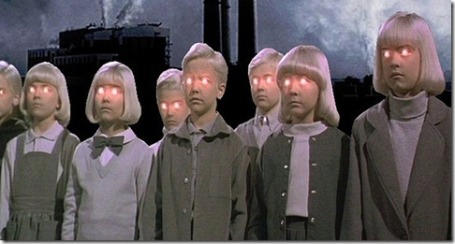 Psychohistorians deem this state to be such an oblivious one that they use the term trance-state for it, fully intending all the implications and connotations that term engenders. That is, they are saying that people who are this repressed and split off do their acting zombie-like and out of motivations completely hidden from themselves. [Footnote 1]
Psychohistorians deem this state to be such an oblivious one that they use the term trance-state for it, fully intending all the implications and connotations that term engenders. That is, they are saying that people who are this repressed and split off do their acting zombie-like and out of motivations completely hidden from themselves. [Footnote 1]
Birth Woes ~ World Wars

 In such total ignorance, and of course being totally ignorant that one is in ignorance, people in the past century have been able to act out their perinatal underbellies in ways to make such hideous and all-encompassing wars as World War I and World War II possible.
In such total ignorance, and of course being totally ignorant that one is in ignorance, people in the past century have been able to act out their perinatal underbellies in ways to make such hideous and all-encompassing wars as World War I and World War II possible.
![clip_image013[3] clip_image013[3]](https://apocalypseknow.files.wordpress.com/2012/06/clip_image0133.jpg?w=423&h=298) Leaving aside for a moment the myriad ways the perinatal has unconsciously been acted out in this century in creating the current situation in which we are on the brink of extinction—which can be considered the most serious consequences of this splitting off imaginable—simply focusing on this century’s major wars as evidence of perinatal acting-out alone is instructive.
Leaving aside for a moment the myriad ways the perinatal has unconsciously been acted out in this century in creating the current situation in which we are on the brink of extinction—which can be considered the most serious consequences of this splitting off imaginable—simply focusing on this century’s major wars as evidence of perinatal acting-out alone is instructive.
![clip_image014[3] clip_image014[3]](https://apocalypseknow.files.wordpress.com/2012/06/clip_image0143.gif?w=410&h=331) The Nazis, in particular, were extreme in their dissociation from their perinatal, in their projection of it onto the Jews, and their consequent ability to act it out in horrific ways on them and others. Alice Miller and Lloyd deMause have each detailed the psychodynamics of this projection of primal pain—both perinatal and childhood—in the creation of the people that Adolf Hitler and the Nazis became in their adulthood. [Footnote 2]
The Nazis, in particular, were extreme in their dissociation from their perinatal, in their projection of it onto the Jews, and their consequent ability to act it out in horrific ways on them and others. Alice Miller and Lloyd deMause have each detailed the psychodynamics of this projection of primal pain—both perinatal and childhood—in the creation of the people that Adolf Hitler and the Nazis became in their adulthood. [Footnote 2]
![clip_image016[3] clip_image016[3]](https://apocalypseknow.files.wordpress.com/2012/06/clip_image0163.jpg?w=479&h=359) The Nazis present us with the patterns of these processes of dissociation and projection in blatant and obvious relief. The way Nazis, especially in concentration camps, acted out perinatal trauma on their prisoners has been described in great detail by Grof as well. [Footnote 3]
The Nazis present us with the patterns of these processes of dissociation and projection in blatant and obvious relief. The way Nazis, especially in concentration camps, acted out perinatal trauma on their prisoners has been described in great detail by Grof as well. [Footnote 3]
Wounded Deer and Centaurs – Being “Weller,” But Appearing Sicker – Perinatal Awareness of Boomers and Beyond
Perinatal Boomers and Beyond—We Know THAT We Don’t Know…We Could Be Wrong.… But You Certainly Are
Being “Weller,” But Appearing Sicker—Generations Since
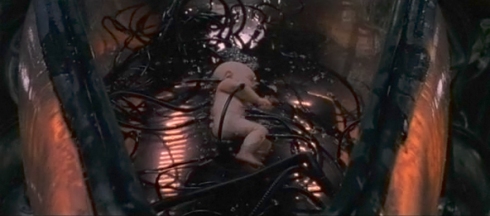 As I said, contrasted with being completely split off — dissociated — from one’s perinatal unconscious, as the Fifties and WWII Generation are predominantly, is being less cut off from it and having
As I said, contrasted with being completely split off — dissociated — from one’s perinatal unconscious, as the Fifties and WWII Generation are predominantly, is being less cut off from it and having  some access to its energies. This means that rather than being totally and blindly driven by these forces, which are acting on one indirectly,
some access to its energies. This means that rather than being totally and blindly driven by these forces, which are acting on one indirectly, one actually feels them somewhat: One has a sense of their being a part of one’s experience as opposed to living within them so thoroughly that one has not a clue of their existence.
one actually feels them somewhat: One has a sense of their being a part of one’s experience as opposed to living within them so thoroughly that one has not a clue of their existence.
This means that one has more options than to act them out, but it also means they make one aware of one’s perinatal sickness. One feels them, suffers from them, struggles with them.
On the other hand, one does not suffer or struggle from unconscious energies that one is compliant with and that are completely manifest and supported in one’s social and cultural environments (for example, the worlds of the WWII and previous generations), however destructive that makes one’s actions.
Trancing Vs. Suffering

 This difference may be likened to the difference between being a fish in water and totally oblivious to that fact versus living out of water and experiencing a downpour. When one is in less of a trance state, one is aware of alternative ways of being; in the example, that would be being dry. Consequently, one suffers and struggles amidst these forces and options…and one has at least some ability to choose one’s actions.
This difference may be likened to the difference between being a fish in water and totally oblivious to that fact versus living out of water and experiencing a downpour. When one is in less of a trance state, one is aware of alternative ways of being; in the example, that would be being dry. Consequently, one suffers and struggles amidst these forces and options…and one has at least some ability to choose one’s actions.
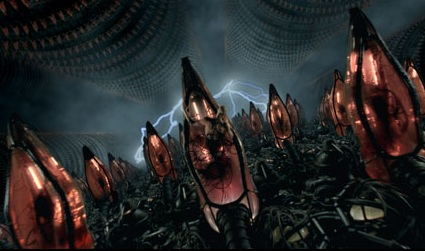 I do not believe it is simply coincidence that we are currently going from the Piscean Age — symbolized by fish in water — to the Aquarian Age — symbolized by a water bearer. This change was a big part of the consciousness during the Sixties,
I do not believe it is simply coincidence that we are currently going from the Piscean Age — symbolized by fish in water — to the Aquarian Age — symbolized by a water bearer. This change was a big part of the consciousness during the Sixties,  and I think we are beginning to see why: Going from a state where one is oblivious to the forces around one to a state where one can see the things one is dealing with (carrying the water) is no small thing.
and I think we are beginning to see why: Going from a state where one is oblivious to the forces around one to a state where one can see the things one is dealing with (carrying the water) is no small thing.
 It seems everything about evolution in humans has something to do with being between two mediums and the advance/the added perspective that comes with that,
It seems everything about evolution in humans has something to do with being between two mediums and the advance/the added perspective that comes with that,  going all the way back to being the only ape to take to the water so much as to become partly aquatic—placing our species between water and land, halfway between a dolphin and a chimpanzee. I think we are heading toward being like the fairies and angels we imagine—halfway between land and air—but that is a whole other post.
going all the way back to being the only ape to take to the water so much as to become partly aquatic—placing our species between water and land, halfway between a dolphin and a chimpanzee. I think we are heading toward being like the fairies and angels we imagine—halfway between land and air—but that is a whole other post.
Another analogy I’ve heard of this difference between the two modes of being completely oblivious and somewhat aware of one’s unconscious is that ![nomadic 382[9]](https://apocalypseknow.files.wordpress.com/2012/06/nomadic-3829.jpg?w=454&h=318) between living full-time in an arctic environment where one has to wear a heavy coat versus living in a milder climate. In the warmer climes, one is both aware of what it is like to not have a coat—one has capacity to feel better ways of being—as well as how bulky, obstructing, and uncomfortable it is to have the coat on—suffering
between living full-time in an arctic environment where one has to wear a heavy coat versus living in a milder climate. In the warmer climes, one is both aware of what it is like to not have a coat—one has capacity to feel better ways of being—as well as how bulky, obstructing, and uncomfortable it is to have the coat on—suffering  more from it, suffering from one’s perinatal memories. Finally one is better able to decide when to have it on and not—one has more options.
more from it, suffering from one’s perinatal memories. Finally one is better able to decide when to have it on and not—one has more options.  At some point I will discuss what this has to do with the increase of bipolar disorders, but not now.
At some point I will discuss what this has to do with the increase of bipolar disorders, but not now.
One analogy I find especially provocative is the difference between watching a movie and being fully engrossed in it so that one does not know it is a movie, which is equivalent to acting out unconsciously from one’s early imprints. Compare this to watching the same movie with equal interest, but being aware that one is in a theater. You can see where in the second instance one would feel there are more options; and one would feel that one could step back before finding oneself caught up in horrific actions.
Wounded Deer and Centaurs

 However, being aware of one’s discomfort (having “more access” to the perinatal), one suffers like the wounded deer—the innocent who feels things and so struggles with society’s sickness that many others are unconsciously perpetrating. But, with time and success in handling this pain, one can become the wounded healer—the Centaur.
However, being aware of one’s discomfort (having “more access” to the perinatal), one suffers like the wounded deer—the innocent who feels things and so struggles with society’s sickness that many others are unconsciously perpetrating. But, with time and success in handling this pain, one can become the wounded healer—the Centaur.
 Now, why and how would this occur? As I’ve said, some access to the perinatal and more blatant and direct acting it out is exhibited by many of the baby-boomer generation. This is in large part due to their having been raised in a way that required less in the way of ego defenses to keep their primal pain suppressed. Psychohistorians like Glen Davis and Lloyd deMause have detailed a slow advance of child-caring techniques, with generations since the WWII Generation being raised with more attention to their needs and less harshness and cruelty…increasingly more love.
Now, why and how would this occur? As I’ve said, some access to the perinatal and more blatant and direct acting it out is exhibited by many of the baby-boomer generation. This is in large part due to their having been raised in a way that required less in the way of ego defenses to keep their primal pain suppressed. Psychohistorians like Glen Davis and Lloyd deMause have detailed a slow advance of child-caring techniques, with generations since the WWII Generation being raised with more attention to their needs and less harshness and cruelty…increasingly more love.
“What the World Needs Now, Is…”
 Before anyone begins thinking “permissive” or “spare the rod, spoil the child,” let me point out that I will be continually stressing how this development is not only a good thing (why wouldn’t love be good?)
Before anyone begins thinking “permissive” or “spare the rod, spoil the child,” let me point out that I will be continually stressing how this development is not only a good thing (why wouldn’t love be good?) but is one of the few sources of hope for our future we really do have.
but is one of the few sources of hope for our future we really do have.
For less childhood pain and trauma means one is stronger and more able to face the even deeper perinatal pain.
Choosing Lesser Evils
 At any rate, the extreme acting-out and total dissociation from the perinatal exhibited by the World-War-Two Generation was followed, in the generations coming after, by less relative dissociation and less horrific forms of acting it out. Quite simply, generations as a whole had better ability to refrain from the more blatantly evil act outs—wholesale murders and world wars, pogroms and genocide,
At any rate, the extreme acting-out and total dissociation from the perinatal exhibited by the World-War-Two Generation was followed, in the generations coming after, by less relative dissociation and less horrific forms of acting it out. Quite simply, generations as a whole had better ability to refrain from the more blatantly evil act outs—wholesale murders and world wars, pogroms and genocide,
 inquisitions and witch-burning, racism and slavery. They were more able to choose seemingly milder forms of suffering and self-destruction — polluting the atmosphere, water, and food; population explosions and crowding of cities; and traffic jams.
inquisitions and witch-burning, racism and slavery. They were more able to choose seemingly milder forms of suffering and self-destruction — polluting the atmosphere, water, and food; population explosions and crowding of cities; and traffic jams.
 The common everyday traffic jam is especially instructive of perinatal dynamics as traffic congestions replicate asphalt birth tunnels where one not only breathes exhaust fumes from trucks and other autos—fetal malnutrition—but also can become gridlock at any moment, thus re-creating the intense frustration and no-exit hopelessness, and rage, of BPM II.
The common everyday traffic jam is especially instructive of perinatal dynamics as traffic congestions replicate asphalt birth tunnels where one not only breathes exhaust fumes from trucks and other autos—fetal malnutrition—but also can become gridlock at any moment, thus re-creating the intense frustration and no-exit hopelessness, and rage, of BPM II.
Baby-Boomer Perinatal Awareness
Other examples of the scenery of modern times where the perinatal is manifesting but is less projected onto another:
We Know THAT We Don’t Know…We Could Be Wrong.
 Many baby-boomers had enough access to their perinatal underbellies to question the absolute rightness of the Vietnam War and so they campaigned against it. This is indicative of closeness to the perinatal because it shows an ability to doubt one’s egocentric defenses—as given by society and family of origin—and to look at situations from the eyes of the Other.
Many baby-boomers had enough access to their perinatal underbellies to question the absolute rightness of the Vietnam War and so they campaigned against it. This is indicative of closeness to the perinatal because it shows an ability to doubt one’s egocentric defenses—as given by society and family of origin—and to look at situations from the eyes of the Other.
 So much was this evident in boomers that some were even able
So much was this evident in boomers that some were even able  to see the Vietnam War through the eyes of the enemy—exemplified by Jane Fonda’s trip to Hanoi, the waving of North Vietnamese flags at demonstrations, and the carrying of little red books of the sayings of Chairman Mao tse Tung.
to see the Vietnam War through the eyes of the enemy—exemplified by Jane Fonda’s trip to Hanoi, the waving of North Vietnamese flags at demonstrations, and the carrying of little red books of the sayings of Chairman Mao tse Tung.
But It’s Clear You’re Wrong.
 The baby-boomer—or Sixties—generation also indicate their closeness to their perinatal in their campaigns against some of the act-outs of the perinatal mentioned above: These include actions against pollution; a rejection of city life, with its gridlocks, pollution, and crowding , and a return to the country, in communes or otherwise; an awareness and rejection of polluted foods and creation of a natural and organic foods movement; and actions against global overpopulation including support for birth control, a pro-choice stance on abortion, and delaying of baby-making on their own parts along with a reduction in the size of their families.
The baby-boomer—or Sixties—generation also indicate their closeness to their perinatal in their campaigns against some of the act-outs of the perinatal mentioned above: These include actions against pollution; a rejection of city life, with its gridlocks, pollution, and crowding , and a return to the country, in communes or otherwise; an awareness and rejection of polluted foods and creation of a natural and organic foods movement; and actions against global overpopulation including support for birth control, a pro-choice stance on abortion, and delaying of baby-making on their own parts along with a reduction in the size of their families.
The sexual excess that is characteristic of the perinatal, specifically BPM III, was evident in boomers’ free love and promiscuous sexual behavior.
 Many more examples could be given. But the proof of their closeness to their unconscious dynamics lies not only in their actions—as mentioned above, in their more blatant acting them out or in their actual actions against the blatant acting out, both of which indicate closer access—but also
Many more examples could be given. But the proof of their closeness to their unconscious dynamics lies not only in their actions—as mentioned above, in their more blatant acting them out or in their actual actions against the blatant acting out, both of which indicate closer access—but also 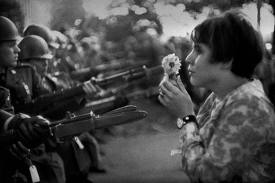 in the study of their unconscious dynamics.
in the study of their unconscious dynamics.  As mentioned in Chapter Twelve, Kenneth Keniston found in his study of the psychodynamics of the Sixties generation when they were in their youth an unusual amount of perinatal symbolism and self-analysis. (See “Raging to Reenter, Digging Under Ground.”)
As mentioned in Chapter Twelve, Kenneth Keniston found in his study of the psychodynamics of the Sixties generation when they were in their youth an unusual amount of perinatal symbolism and self-analysis. (See “Raging to Reenter, Digging Under Ground.”)
Boomer Rage, Perinatally So
We Shall Overcome.
We also see perinatal feelings in the focus of the baby-boomers on empowerment. This word appears to come up in every area of their lives. It can be seen as the natural focus of a generation that feels itself inside to be a helpless fetus facing an overpowering obstruction of a womb.
Hence baby-boomers are of course also closer to the frustration, rebellion, and yes, rage, that is part of the perinatal complex. We saw it exhibited by them in their anger at authority in the Sixties, their rebellion against the Vietnam War.
“Get the &%$ OFF Me!”
 Keep in mind that a huge aspect of the perinatal is feelings of restriction, thus frustration, and, consequently rage against large entities of obstruction—like the womb was in relation to the small and helpless fetus. In doing so, we see that the reason for their rage is simple and understandable.
Keep in mind that a huge aspect of the perinatal is feelings of restriction, thus frustration, and, consequently rage against large entities of obstruction—like the womb was in relation to the small and helpless fetus. In doing so, we see that the reason for their rage is simple and understandable.
Baby-boomers, characterized as being closer to their unconscious, especially the perinatal, have more access to their anger: This means they feel their anger and are less likely to act it out in more hidden, disguised, and dire ways such as war-making, racism, and anti-Semitism.
This does not mean their rage would not be troublesome. The perinatal lets no one get off scot free. We see lots of pre- and perinatal anger coming out in the last few decades in the phenomenon of the “angry electorate.” Let’s look at that next.
You Didn’t Really Believe Elections Had Anything to Do With Issues, Did You? Biting the Feeding Hand … Perinatal Rage and Panicky Electorate
Seriously? You Actually Think Elections Have Something to Do With Issues? Biting the Feeding Hand … Perinatal Rage and Panicky Electorate
More recently these baby-boomers have been coming into the triumphant phase of their lives. They make up the largest sector of the electorate, and their influence is reflected more as they come into positions of power in the media and elsewhere.
The Angry Electorate and Boomers

 But their influence has been diffused and confused because of the anger of some of them. Their irrational rage—combined with the reactionary consciousness of the Fifties Generation, many of the Fifties Gen children of Yuppies-Gen Xers, and the remaining WWII folks—has most often skewed election results against the Boomers interests and their true desires. Though not the majority of boomers, enough of them expressed their rage to swing election results in favor of the other side.
But their influence has been diffused and confused because of the anger of some of them. Their irrational rage—combined with the reactionary consciousness of the Fifties Generation, many of the Fifties Gen children of Yuppies-Gen Xers, and the remaining WWII folks—has most often skewed election results against the Boomers interests and their true desires. Though not the majority of boomers, enough of them expressed their rage to swing election results in favor of the other side.
1992 – “Mad as Hell”
Beginning in the 1992 and 1994 national elections, these baby-boomers exhibited their perinatal influences in contributing to the totally unexpected phenomenon of the “angry electorate.”

 At the time, pundits and media analysts were at a total loss to explain the rage of the electorate that was affecting these elections. In 1992, they were totally surprised by the showing of three men in particular—Jerry Brown, Pat Buchanan, and Ross Perot—who seemed to have one thing in common: the angry tones and rebelliousness that characterized their speeches, as compared to others. [Footnote 4]
At the time, pundits and media analysts were at a total loss to explain the rage of the electorate that was affecting these elections. In 1992, they were totally surprised by the showing of three men in particular—Jerry Brown, Pat Buchanan, and Ross Perot—who seemed to have one thing in common: the angry tones and rebelliousness that characterized their speeches, as compared to others. [Footnote 4]
 The demeanor of these candidates was at such odds with the other candidates that when Bill Clinton one night responded angrily to a comment by Jerry Brown about Hillary, Clinton’s wife, it was that part of the debate—of Clinton being angry, all issues aside—that made the news that night!
The demeanor of these candidates was at such odds with the other candidates that when Bill Clinton one night responded angrily to a comment by Jerry Brown about Hillary, Clinton’s wife, it was that part of the debate—of Clinton being angry, all issues aside—that made the news that night!
Though the rage of the electorate in 1992 caused the Brown, Perot, and Buchanan phenomena, it was split among them, so Clinton ended up winning.  This of course was also OK with the baby-boomers in that (1) Clinton and Gore were baby-boomers like themselves and (2) in the race against Bush, Clinton was the challenger, and thus the rebel; and Bush was the “bum to be thrown out.”
This of course was also OK with the baby-boomers in that (1) Clinton and Gore were baby-boomers like themselves and (2) in the race against Bush, Clinton was the challenger, and thus the rebel; and Bush was the “bum to be thrown out.”
However, this rage did not go away after the election, which highlights its having perinatal origins. In fact, after the shortest “honeymoon period” in history, by some accounts, it became directed at the most likely target/center—the President, Bill Clinton, himself.
We all know how despite the successes and progress of Clinton’s first year, he was especially singled out for ridicule and denigration by the media. He could not seem to do anything right, and the most incredibly outrageous behaviors were attributed to him.
1994 – “Throw the Bums Out … Again.”
 This rage spilled over into the next year and, sure enough, during the midterm election—the issues be damned—the angry electorate was in a mood to “throw the bums out” again. It did not matter the party….I do not claim that all those of my generation are always as politically astute as they are angry.
This rage spilled over into the next year and, sure enough, during the midterm election—the issues be damned—the angry electorate was in a mood to “throw the bums out” again. It did not matter the party….I do not claim that all those of my generation are always as politically astute as they are angry.
The Republicans called it a “revolution.” It was simply the acting out of an electorate in the throes of perinatal feelings—that is, feelings of frustration,  being “tied up” by red tape, an inability to go forward…that is, up the economic ladder—wages had been stagnating since the early 80s…being overcontrolled and pushed around by regulations…big government being the big mother womb keeping the fetus locked in and unable to move…and out of all this, the consequent anger and rage.
being “tied up” by red tape, an inability to go forward…that is, up the economic ladder—wages had been stagnating since the early 80s…being overcontrolled and pushed around by regulations…big government being the big mother womb keeping the fetus locked in and unable to move…and out of all this, the consequent anger and rage.
1996 and 1998 — “To Hell With You!”
 At any rate, succeeding elections bear out this analysis of an angry electorate. In 1996, despite the much ballyhooed “Republican Revolution,” sure enough, the electorate was spoiling to “throw the bums out” again—only this time it was the Republican Congress.
At any rate, succeeding elections bear out this analysis of an angry electorate. In 1996, despite the much ballyhooed “Republican Revolution,” sure enough, the electorate was spoiling to “throw the bums out” again—only this time it was the Republican Congress.  So there were Democratic gains at the time.
So there were Democratic gains at the time.
And in 1998, when everything pointed to a huge Republican landslide because of the Lewinsky scandal, the electorate again showed their rebellion and anger toward both the pundits and the Republicans who had been lambasting them with details of the scandal for nearly a year by giving the Democrats gains again! [Footnote 4]
2006, 2008, and 2010 — Panicky Electorate
In 2006, 2008, and 2010, it was an angry electorate reeling against oppression; and in the case of 2010, doing it mindlessly, against their own interests. If there were not perinatal charge to all this, Americans would not be so irrational about their choices.
Perinatal Rage
People have had good reasons to feel oppressed since the Eighties when Reagan began the giveaways to the rich and the budget cutbacks, continuing to this day, that have caused the masses to feel constricted and oppressed.
Yet, if this did not result in their being perinatally overloaded so that they cannot reason, they would not have been able to be led to fight their own interests as they were in 2010 and in an ongoing way as exemplified by the Tea Party and the success of right-wing agendas.
Reacting, Too Angry and Confused to Think
 Another aspect of this irrationality on both sides of the political spectrum has to do with this idea that there is no difference between the two major parties. Feeling oppressed perinatally is characterized by a pressure from all sides simultaneously.
Another aspect of this irrationality on both sides of the political spectrum has to do with this idea that there is no difference between the two major parties. Feeling oppressed perinatally is characterized by a pressure from all sides simultaneously.  There is an inability to distinguish or discriminate between forces that are helpful and those that are dire, as any and all developments seem threatening in situations of crisis. In a situation of overwhelm, further, there is an inability to think clearly. One just fights back, explodes, reacts. It’s no coincidence that righties are called reactionaries.
There is an inability to distinguish or discriminate between forces that are helpful and those that are dire, as any and all developments seem threatening in situations of crisis. In a situation of overwhelm, further, there is an inability to think clearly. One just fights back, explodes, reacts. It’s no coincidence that righties are called reactionaries.
Biting the Feeding Hand
 The upshot is an inability, under the pressure of perinatal feelings, provoked endlessly by actual oppression economically, environmentally, socially, and culturally, to rail against any authority, to bite the hand that feeds one. This is exactly like the panicked swimmer who in danger of drowning fights off his or her rescuer.
The upshot is an inability, under the pressure of perinatal feelings, provoked endlessly by actual oppression economically, environmentally, socially, and culturally, to rail against any authority, to bite the hand that feeds one. This is exactly like the panicked swimmer who in danger of drowning fights off his or her rescuer.
Can anyone at this point still maintain that the politics of the last few decades had anything at all to do with ideology or issues?
Millennials and Their Opposites – Fifties Generation Tea Partyers … How OWS and Tea Party Movements Are Generationally and Perinatally Different
Millennial Gen Occupiers and Eisenhower Gen Tea Partyers Are Perinatally As Well As Generationally Opposed
Right-Wing “Hate Groups,” the Tea Party, and the Fifties Generation: Perinatally Oblivious
![clip_image004[5] clip_image004[5]](https://apocalypseknow.files.wordpress.com/2012/06/clip_image0045.jpg?w=212&h=276)
 One might also note the rise of “hate groups” occurring at the same time as the phenomenon of the angry electorate. Hate groups fill their ranks from folks on the extreme right and their actions are exemplified in the Oklahoma bombing tragedy and more recently in the Tea Party.
One might also note the rise of “hate groups” occurring at the same time as the phenomenon of the angry electorate. Hate groups fill their ranks from folks on the extreme right and their actions are exemplified in the Oklahoma bombing tragedy and more recently in the Tea Party.
Perinatally Clueless
But notice again then that these hate groups are always on the extreme right of the political spectrum and thus exemplify a World-War-Two mindset in relation to their perinatal unconscious: Specifically, the mindset is one of being completely cut off from one’s unconscious dynamics and being in total denial of unconscious motivations so that one can have the complete certitude—lacking any access to the unconscious which would give rise to doubts—that makes violent actions possible.
![clip_image007[4] clip_image007[4]](https://apocalypseknow.files.wordpress.com/2012/06/clip_image0074_thumb.jpg?w=277&h=233) However the reason for bringing up the hate groups is to show how much their actions as well are dominated by
However the reason for bringing up the hate groups is to show how much their actions as well are dominated by  perinatal—in their case, totally unconscious—dynamics.
perinatal—in their case, totally unconscious—dynamics.
For without exception their reasons for rising up against the government—representing the overwhelming womb—has to do with frustrations, like the trapped fetus feels, in regards to “oppressive” taxes, governmental red tape, laws, and other regulations that they feel restrict their freedom…to move freely, as one wanted to but couldn’t, in the womb.
 Tea Party and hate group ranks are prevalent with Fifties Generation folks. The Eisenhower Generation — after the WWII Gen and before Boomers — were born just before or during WWII. They are mired in prenatal fears coming from the fact that their parents were living through such distressing times as WWII and the Great Depression when they were
Tea Party and hate group ranks are prevalent with Fifties Generation folks. The Eisenhower Generation — after the WWII Gen and before Boomers — were born just before or during WWII. They are mired in prenatal fears coming from the fact that their parents were living through such distressing times as WWII and the Great Depression when they were  inside their mothers. They were “marinated” in the womb with fear and insecurity. They also were not brought up with the societal advance in child-rearing the next generation of boomers, and those afterward, would be granted. So it is understandable they would be both cut off from perinatal access yet full of perinatal pushes and pulls to act out in confused and self-destructive ways.
inside their mothers. They were “marinated” in the womb with fear and insecurity. They also were not brought up with the societal advance in child-rearing the next generation of boomers, and those afterward, would be granted. So it is understandable they would be both cut off from perinatal access yet full of perinatal pushes and pulls to act out in confused and self-destructive ways.
Perinatal Access of Millennials
Being Boomer Kids, Wouldn’t You Kind of Expect That?
Now on the other end of this perinatal spectrum we have the most recent generational cohort to be making a mark. The Millennial, or Baby-Boomer Echo generation, show the same inner access as their Boomer parents. They demonstrate as well their parents’ consequent refusal to act it out on a larger scale: It has been said that the greatest concerns of those in this generation, now in their twenties and thirties, are the environment and racism-bigotry.
Activist, Progressive
![clip_image001[4] clip_image001[4]](https://apocalypseknow.files.wordpress.com/2012/06/clip_image0014_thumb.png?w=274&h=280) They show the progressive bent of their parents, also, in their having a lot to do with giving America its first African-American president. And to the environment and minority rights, we need to add classism, economic fairness, and human rights because of their phenomenal outpouring of support in the past year for Occupy Wall Street and for union rights in Wisconsin and other states. They are showing global strength in opposing fascism, economic injustice, political oppression, and human rights abuses in Occupy and Arab Spring movements. They’ve filled massive demonstrations against the draconian economic policies of Republicans in Wisconsin.
They show the progressive bent of their parents, also, in their having a lot to do with giving America its first African-American president. And to the environment and minority rights, we need to add classism, economic fairness, and human rights because of their phenomenal outpouring of support in the past year for Occupy Wall Street and for union rights in Wisconsin and other states. They are showing global strength in opposing fascism, economic injustice, political oppression, and human rights abuses in Occupy and Arab Spring movements. They’ve filled massive demonstrations against the draconian economic policies of Republicans in Wisconsin.
Climate Change and The Environment
We know how pollution and action against pollution indicates a closeness to one’s perinatal. To put it another way, it is clear that only a total denial and disconnect between one’s consciousness and one’s unconscious perinatal dynamics would allow one to act it out unconsciously in the creation of pollution and in the denial of it as a problem or a mindless neglect of it. So the fact that these Baby-Boomer children, the Millennials, are so cognizant, concerned, and active in relation to global pollution and climate change shows their lack of denial of this perinatal act-out.
Multicultural, Resisting Racism and Oppression
But what of racism and bigotry? How is this an indication of a closeness to the perinatal. There are several ways in which this is so. As mentioned, a closeness to the perinatal allows one to doubt one’s given defenses and to glimpse alternate perspectives—in particular to look at things from the eyes of The Other.
 In this way, the baby-boomer echo generation are able to see oppression, injustice, and unfairness as it is played out in the lives of minorities who don’t share their (predominantly) middle-class advantages. They simply don’t “get” racism, sexism, or bigotry of any kind; it is incomprehensible to them. They strongly oppose imperialism, colonialism, or oppression of any kind. Relatedly, they support animal rights and oppose animal abuse and cruelty. They don’t understand torture and violence against fellow planetmates.
In this way, the baby-boomer echo generation are able to see oppression, injustice, and unfairness as it is played out in the lives of minorities who don’t share their (predominantly) middle-class advantages. They simply don’t “get” racism, sexism, or bigotry of any kind; it is incomprehensible to them. They strongly oppose imperialism, colonialism, or oppression of any kind. Relatedly, they support animal rights and oppose animal abuse and cruelty. They don’t understand torture and violence against fellow planetmates.
![clip_image002[4] clip_image002[4]](https://apocalypseknow.files.wordpress.com/2012/06/clip_image0024.jpg?w=321&h=321) Naturally they were helped in that awareness by the gains of previous decades, beginning in the Sixties, which had them growing up with diversity of racial and ethnic heritages—seeing things multiculturally not narrowly—in their schools and in the omnipresent media. They grew up with the environmental awareness that was set in motion in the Sixties; they don’t know of a world before recycling and energy conservation. Activism, demonstrations, and political action have been a part of their lives since they were born, unlike the several generations that preceded them and even their Boomer parents who grew up in a politically castrated Fifties.
Naturally they were helped in that awareness by the gains of previous decades, beginning in the Sixties, which had them growing up with diversity of racial and ethnic heritages—seeing things multiculturally not narrowly—in their schools and in the omnipresent media. They grew up with the environmental awareness that was set in motion in the Sixties; they don’t know of a world before recycling and energy conservation. Activism, demonstrations, and political action have been a part of their lives since they were born, unlike the several generations that preceded them and even their Boomer parents who grew up in a politically castrated Fifties.
But there is another, stronger element. This is the factor of oppression and unfairness itself. We experience compression (oppression), and frustration at our attempts to go forward, and what feels like hopeless unfairness and injustice, when in the throes of BPM II birth trauma. To see these facets of the fates of minorities, as in racism, or gender or sexual bias, points to this echo generation’s closeness to their own perinatal oppression; hence their ability to empathize with oppressed minorities.
This ability to realistically sense and respond to oppression is also the reason they would throw themselves in heartily in defense of unions, an increasingly oppressed middle class, and public sector employees.
Of Goths, Gen X, Anti-Abortionists, Pacifiers, and a Hierarchy of Healing … You Make It When You DON’T Fake It
Flaunting One’s Sickness Is Healthier Than Hiding It … Gen X, Goths, Pacifiers, and The Hierarchy of Healing
A Hierarchy of Healing?
This idea that those close to their unconscious conflicts are more likely to act them out blatantly goes completely against one of DeMause’s tenets. He wrote, “The higher the psychogenic mode of the psychoclass, the less it is necessary for it to act out its conflicts.” [Footnote 5]
However this is exactly the crux of my difference with his theory and is a  central point I am making. For from my perspective, the higher the mode of child-caring equals the less the defenses. Hence, the more it is likely that that generation’s conflicts will be close to the surface, seeking resolution … like Maslow’s hierarchy of needs theory. We might want to call it a hierarchy of healing theory. [Footnote 6]
central point I am making. For from my perspective, the higher the mode of child-caring equals the less the defenses. Hence, the more it is likely that that generation’s conflicts will be close to the surface, seeking resolution … like Maslow’s hierarchy of needs theory. We might want to call it a hierarchy of healing theory. [Footnote 6]
 In other words, our observing the supposed “acting out” of an underlying trauma does not mean that the group or person in question is actually or, at least completely, “acting it out” and defending against it. It may be that that group is resolving, healing, or integrating it—taking it inward rather than acting it out…in the world, on others…whether to a small or great extent.
In other words, our observing the supposed “acting out” of an underlying trauma does not mean that the group or person in question is actually or, at least completely, “acting it out” and defending against it. It may be that that group is resolving, healing, or integrating it—taking it inward rather than acting it out…in the world, on others…whether to a small or great extent.  Using the analogy of Pandora’s Jar, described earlier, they are opening the jar, at least a little. And I disagree with deMause in that I wish to stress that it is healthier by far to do that. Let me explain:
Using the analogy of Pandora’s Jar, described earlier, they are opening the jar, at least a little. And I disagree with deMause in that I wish to stress that it is healthier by far to do that. Let me explain:
The difference between acting out and resolving is whether the actions are done in total dissociation from the unconscious dynamics, that is to say, in a trance state—as explained earlier in regard to the World War Two generation and the Tea Party—or whether there is at least a modicum of insight into it occurring as a result of things inside of oneself, not completely projected onto the outside.
 The attitude that leads to total dissociation and acting out was expressed in a recent 2012 military movie, Act of Valor, which depicted Navy Seals engaged in anti-terrorism activity. At the end, the manner of dealing with pain recommended for these American soldiers and “men of valor” was to (paraphrasing) put all the pain in a box, shut it tight, press it down till it is smaller and smaller, and never, under any circumstances, let it out!
The attitude that leads to total dissociation and acting out was expressed in a recent 2012 military movie, Act of Valor, which depicted Navy Seals engaged in anti-terrorism activity. At the end, the manner of dealing with pain recommended for these American soldiers and “men of valor” was to (paraphrasing) put all the pain in a box, shut it tight, press it down till it is smaller and smaller, and never, under any circumstances, let it out!
 However, in non-acting-out—“acting inward” or taking back the projection—there is a tad of insight, as, for example, in the “overexamined life” of the “uncommitted” and the “self-analysis” of the young radicals of the Sixties generation. Similarly, the rock concert revivication of all current generations except the Fifties and WWII ones, as I’ve mentioned, is
However, in non-acting-out—“acting inward” or taking back the projection—there is a tad of insight, as, for example, in the “overexamined life” of the “uncommitted” and the “self-analysis” of the young radicals of the Sixties generation. Similarly, the rock concert revivication of all current generations except the Fifties and WWII ones, as I’ve mentioned, is 
 about personal experience and growth, and it is not about acting out on another; whereas an example of the extreme other end of that would be engaging, trance-like, in a mass killing against a perceived political enemy, as Loughner did, and as we do as nations in wars.
about personal experience and growth, and it is not about acting out on another; whereas an example of the extreme other end of that would be engaging, trance-like, in a mass killing against a perceived political enemy, as Loughner did, and as we do as nations in wars.
Another example of complete dissociation are the anti-abortion folks. They don’t have a clue of the connection between their own unconscious prenatal pain and the feelings they have about unborn others. They are not wrestling with their feelings, they are trying to change the world to conform to their defenses around those feelings—that is, they want the world to suppress that womb time out of existence like they have done to it in their own minds. The proof that it is acting out is that it is all about changing others’ behavior, and it involves imposing one’s inner pain on others forcefully and aggressively—which we have seen in its extreme form with the murders of physicians committed by anti-abortionists
Flaunting One’s Sickness Beats Hiding It—Generation X
The self-analysis of the Sixties Generation was followed by a different mode of struggling with perinatal pain by Generation X, which continues in abated form with the Millennial Generation.  It was manifest rather strikingly with the Goth phenomenon and the vampire fascination that began in the Eighties, coincident with Gen X’s coming of age. Goth and vampirism show blatant perinatal dynamics that are not unfelt and completely repressed as in dissociation with its trance-state aggression against others. An example of Gen X perinatal acting out of these dynamics in total dissociation and trance state was given above in the anti-abortionists. But Goth and vampire culture show folks feeling and immersed consciously in these pushes and pulls and wrestling with them, trying to work them out as opposed to act them out.
It was manifest rather strikingly with the Goth phenomenon and the vampire fascination that began in the Eighties, coincident with Gen X’s coming of age. Goth and vampirism show blatant perinatal dynamics that are not unfelt and completely repressed as in dissociation with its trance-state aggression against others. An example of Gen X perinatal acting out of these dynamics in total dissociation and trance state was given above in the anti-abortionists. But Goth and vampire culture show folks feeling and immersed consciously in these pushes and pulls and wrestling with them, trying to work them out as opposed to act them out.
Hey, It Was Tough!
This is rather clearly shown in looking at the “regression” in Europe, described by psychohistorians, which occurred in the Nineties. This behavior showed a bit of insight…and resolution happening…in that the baby song being hummed was about the very real hardships of being a baby. Therefore, an actual truth about their own lives was being faced there by those singing along with it. The song was not being used to deny or defend against those traumas.
One might suspect that as well in carrying around such blatant examples of regression as a pacifier. For  someone in a more defended mode would be highly threatened by such an obvious symbol that they are really needy children inside. More defended folks would be terrified such overt behavior would make them look wussy or sissified—that is, look like that vulnerable, frightened baby that they
someone in a more defended mode would be highly threatened by such an obvious symbol that they are really needy children inside. More defended folks would be terrified such overt behavior would make them look wussy or sissified—that is, look like that vulnerable, frightened baby that they  really feel themselves to be but are doing their damnedest to hide from everyone. Imagine how those Navy Seals described above would feel walking around sucking on a pacifier, for example.
really feel themselves to be but are doing their damnedest to hide from everyone. Imagine how those Navy Seals described above would feel walking around sucking on a pacifier, for example.
So in actually carrying around a pacifier these youth were not only displaying an insight into their feelings of sometimes being needy babies, on the inside, but  are actually flaunting this awareness, as if to shame, or slap the face of, or be “in the face” of a generation of their parents—the Fifties Generation for the most part—who did not see their needs when they were babies—however effortfully and obviously they sought to demonstrate them. Thus the symbols needed to become more and more shocking and obvious.
are actually flaunting this awareness, as if to shame, or slap the face of, or be “in the face” of a generation of their parents—the Fifties Generation for the most part—who did not see their needs when they were babies—however effortfully and obviously they sought to demonstrate them. Thus the symbols needed to become more and more shocking and obvious.
Look at What You Did to Me!
For example: the jeans with requisite holes around the knees was screaming out, “You did not take care of me; you made me feel like a poor, orphaned, ragamuffin child.”
The piercing of mouths, nose, ears, and even tongues shouted,
“
I am in pain, dammit! Can’t you see that when you stick needles in me as a little baby that I hurt? How can you be so insensitive? Can’t you see that when you refuse to breastfeed and thus nurture me orally that I am forever damaged there, ever painful there? What does it take, my sticking pins—safety pins make the point even more that it was when I was in diapers—in myself to make you see that I hurt there?”
 And, of course, the black clothes, the hideous macabre makeup, and depressed, sullen expressions was exclaiming,
And, of course, the black clothes, the hideous macabre makeup, and depressed, sullen expressions was exclaiming,
“Look, you might think we’re a wonderful family and everything is hunky-dory here; but I wish I were dead! I’ve felt so much pain, from in the womb, at birth, and right after birth, that I wish I’d never been born.
“Also, somehow in courting death, I have the feeling
that I might somehow be reborn again into a good life, not like this place of torture and tears, right from the beginning, where my welcome into the world consisted of being drugged, handled like an object or piece of meat, blasted by bright lights, scrubbed by rough cloths, having needles and suctions stuck in me, blasted with noise, made to lie on cold stainless steel surfaces, and then bundled like a tamale so that I could not move…making me feel again
like I was back in the hellish womb where in the later stages, for a time that felt like an eternity, I felt unable to move and was suffocating for lack of sufficient oxygen…and the only action that was possible was for me to scream my bloody head off for long periods of time or go into a stupor—which is what I did, alternating between them.
“Can’t you see that I’d rather be dead than live in such a world of insensitive zombies like you. Hell, in fact, to
further drive the point home, I’ll even look and act like a zombie, I’ll try to appear as unfeeling and morose as you all seemed to me, especially at my birth. And I’ll go a step further and mirror yourselves back to you by becoming enamored of vampires….
“Can’t you see that you sucked my very life force, my blood, and turned me into an unfeeling vampire like you, by suffocating me in the womb, poisoning me with your toxic blood which you both sucked from me and then forced down my throat!”
The Consciousness Revolution They Don’t Want You to Notice. It’s Inconvenient for Them, Initially Hard for Us, and Hopefully Not Too Late
The “Inconvenient” Revolution – Unacknowledged Consciousness Evolution from the WWII Generation to the Millennials … More Suffering, Less Killing
Different Levels, Different Defenses

 It is instructive at this time to note that Arthur Janov once compared the defenses that characterized the youth of the time—the late Sixties, early Seventies—with those of their parents and older people in general and came up with findings that amplify my own assertions here.
It is instructive at this time to note that Arthur Janov once compared the defenses that characterized the youth of the time—the late Sixties, early Seventies—with those of their parents and older people in general and came up with findings that amplify my own assertions here.
“Mind’s Made Up, Don’t Confuse Me With the Facts!”
Specifically, Janov found that older people—clients of his as well as others of whom he was aware—were characteristically more repressed, more split off,  more prone to dissociation, more defended and, most importantly for our uses here, tended to use defenses of denial and obfuscation against inner information and impulses. Correspondingly, they tended to use drugs that repressed and blotted out reality, such as alcohol and nicotine; and they tended to be sexually repressed. They were also more compulsive. They tended to suppress their tension and hold it in for all their worth.
more prone to dissociation, more defended and, most importantly for our uses here, tended to use defenses of denial and obfuscation against inner information and impulses. Correspondingly, they tended to use drugs that repressed and blotted out reality, such as alcohol and nicotine; and they tended to be sexually repressed. They were also more compulsive. They tended to suppress their tension and hold it in for all their worth.
“How Can You Have Any Pudding if You Don’t Eat Your Meat?”
Truth was greatly feared, and all attempts were made to fend off incoming information that might threaten the delusional reality set of the conscious mind. This left them open to the characterization: “My mind’s made up! Don’t confuse me with the facts!” which was leveled at them by anti-Vietnam War protesters. In more recent years, it is no wonder they have engaged in a war against education and against Hollywood, as really they are at war with new information. Consequently, Janov found that the dominant mode of reaction, when threatened, was to act out aggressively against the supposed “oppressor.” Like prenates up against an overpowering womb, they are in constant war with overwhelm.
“Peace, Out.”
 On the other hand, he found that his youthful clients—under 30—tended to use defenses of excess, release, and addiction, or to be unusually lacking in defense mechanisms. They were more impulsive. They tended to have weak barriers to incoming information, to be open to negative unconscious content, even at the expense of their self-esteem, and to be tension expressers. They were therefore more likely sexually promiscuous than repressed, and they tended to drugs that opened them to information and unconscious knowledge – such as
On the other hand, he found that his youthful clients—under 30—tended to use defenses of excess, release, and addiction, or to be unusually lacking in defense mechanisms. They were more impulsive. They tended to have weak barriers to incoming information, to be open to negative unconscious content, even at the expense of their self-esteem, and to be tension expressers. They were therefore more likely sexually promiscuous than repressed, and they tended to drugs that opened them to information and unconscious knowledge – such as  marijuana and LSD.
marijuana and LSD.
Consequently they were less split off from their unconscious truth…though it made them uncomfortable…were less repressed, and, if anything, used defenses of masochism, self-denial, and self-inflicted aggression or depression. Truth was more important to them than emotional comfort. They tended to go out of their way to dig up negative information about themselves, and they accepted the low self-esteem and sense of self-worth that came with that kind of openness to truth.

 Their delusional reality set — if it could be called that — entailed taking on the worries and cares of the world as their own, since their openness to their own cares and worries allowed them to empathize with others in obviously
Their delusional reality set — if it could be called that — entailed taking on the worries and cares of the world as their own, since their openness to their own cares and worries allowed them to empathize with others in obviously 
 similar situations. When triggered into their pain, their dominant reaction was to take it inward and to take it out on themselves causing depression. In doing so they showed they would rather hurt themselves than hurt another.
similar situations. When triggered into their pain, their dominant reaction was to take it inward and to take it out on themselves causing depression. In doing so they showed they would rather hurt themselves than hurt another.
Generation Gaps … Again

 I don’t believe you need to be a rocket scientist to see that Janov was discovering an historical — one might say millennial — ”changing of the guard” as regards access to the unconscious, openness to personal truth, and lessening of the tendency to act out early trauma in
I don’t believe you need to be a rocket scientist to see that Janov was discovering an historical — one might say millennial — ”changing of the guard” as regards access to the unconscious, openness to personal truth, and lessening of the tendency to act out early trauma in 
 violent or belligerent ways. The older generation had more tendencies to blame others, to find scapegoats for their ills, and to act out violently on them. The younger generation had more tendencies to look inward and to blame and punish themselves … and to prefer to hurt themselves before hurting another. They would more likely cut themselves than cut another; they would more likely commit suicide than kill.
violent or belligerent ways. The older generation had more tendencies to blame others, to find scapegoats for their ills, and to act out violently on them. The younger generation had more tendencies to look inward and to blame and punish themselves … and to prefer to hurt themselves before hurting another. They would more likely cut themselves than cut another; they would more likely commit suicide than kill.
The youthful generation might also become alcoholic, addicted to drugs, or do something else to injure themselves…rather than act it out on another.
Less Wars, More Suicides

 And this “acting in,” as opposed to acting out, is indicated as well in the rise of teen suicides in recent decades. So you might say that the tradeoff we are currently getting is a reduction in the use of wars and racism to solve problems—that is, a reduction in the tendency to act out one’s Pain on others and to scapegoat. But, since the perinatal trauma is still there, and one is even more conscious of it, we have increased suicides. We have not had a world war or dropped a nuclear weapon on people since World War II; but we suffer unceasingly from relatively less loss of life in regional conflicts and the self-inflicted harm of air, water, and food contamination and from radiation poisoning from nuclear power plants. We have not had millions killed in genocides or purges since World War II, but we have suffered lesser loss of life in uprisings for democracy in China, Iran, Syria, Southeast Asia, and the Arab world. We have not had lynchings and racial riots have ceased, but we have suffered less lethal damage from culture and class wars, increased incarceration, creeping fascism, and struggles for economic justice.
And this “acting in,” as opposed to acting out, is indicated as well in the rise of teen suicides in recent decades. So you might say that the tradeoff we are currently getting is a reduction in the use of wars and racism to solve problems—that is, a reduction in the tendency to act out one’s Pain on others and to scapegoat. But, since the perinatal trauma is still there, and one is even more conscious of it, we have increased suicides. We have not had a world war or dropped a nuclear weapon on people since World War II; but we suffer unceasingly from relatively less loss of life in regional conflicts and the self-inflicted harm of air, water, and food contamination and from radiation poisoning from nuclear power plants. We have not had millions killed in genocides or purges since World War II, but we have suffered lesser loss of life in uprisings for democracy in China, Iran, Syria, Southeast Asia, and the Arab world. We have not had lynchings and racial riots have ceased, but we have suffered less lethal damage from culture and class wars, increased incarceration, creeping fascism, and struggles for economic justice.
Overall then, less death, more suffering. Less killing in wars, more suicides. Less large scale atrocities, more depression. On a collective level, we are taking our conflicts increasingly inward.
As deMause pointed out,
Those considered ‘neurotic’ in each age may often be a higher psychogenic mode than those considered ‘normal,’ only they must stand the anxiety of not sharing the group-fantasies of the age. [Footnote 7]
Away From Hubris: Nature Balances HerSelf
 In this part on healing crisis, we have seen how perinatal acting out can be of two kinds: totally unconscious and trance-like, or semi-conscious with at least some access. We have looked at how a progression to more access to one’s perinatal underbellies has led to more acting in than acting out. We have seen how it has led to less violence and more depression.
In this part on healing crisis, we have seen how perinatal acting out can be of two kinds: totally unconscious and trance-like, or semi-conscious with at least some access. We have looked at how a progression to more access to one’s perinatal underbellies has led to more acting in than acting out. We have seen how it has led to less violence and more depression.
Suffering Beats Dying.
At this point, one could make the point that the tradeoff is worth it: That individuals suffering more emotional pain and trauma is preferable to the horrors of world war and nuclear or genocidal holocaust…put bluntly, suffering beats dying.
 But we are still looking at the situation from the microcosmic scale. We are talking and acting here like we are the only ones on Earth that matter.
But we are still looking at the situation from the microcosmic scale. We are talking and acting here like we are the only ones on Earth that matter.
This is natural of course, in that this is always the way we have thought of things—that is to say, as if all things were to be considered around the concerns of humans. This is called anthropocentrism—a form of species-centrism—in which Homo sapiens is considered the reason for the existence of the rest of the Universe.
 With the Universe as awesomely and unimaginably large as it is, one might wonder at our hubris in our considering things in only this way—that is, from our perspective.
With the Universe as awesomely and unimaginably large as it is, one might wonder at our hubris in our considering things in only this way—that is, from our perspective.
Likewise, with a mind-boggling number of species living or having lived on this planet alone—species numbering in the hundreds of millions, if not trillions—again one might question the validity of choosing the perspective of our species alone in making our analyses.
How ‘Bout We Step Outside?
Yet this is the way we have always done it. And this is the way I have been slanting my perspective so far in this book.
 But now let us do something radically different. Let us walk out of ourselves — figuratively speaking — and seek to stand upon that Archimedean point from which we might view the events currently transpiring.
But now let us do something radically different. Let us walk out of ourselves — figuratively speaking — and seek to stand upon that Archimedean point from which we might view the events currently transpiring.
From such an attempted non-species-centric viewpoint let us view this emerging perinatal unconscious, with its wounded deer and centaurs, as it is currently manifesting in humans. However tenuous our attempt, let us at least try such a new-paradigm viewpoint. For certainly all old-paradigm ones—containing all the hubris of anthropocentrism that they do—have failed in their attempts to save our species and indeed have contributed to such a likelihood.
Let us attempt to see through the eyes of Gaia, now—from the viewpoint of Earth itself—as we look at how the current human predicament may in fact be an example of Nature balancing HerSelf. With both perspectives in mind, we can have a complete picture. We will return then to look at where there is cause for hope, what we are doing wrong as well as where there are positive trends and forces at work, and how we might let go of the self-defeating and instead apply ourselves to fostering the forces of good going on in global consciousness and the globe itself.
Continue with Eden Arise and a Message to All Wounded Deer and Centaurs: It’s a Consciousness Revolution, Aided by Gaia We Are Rediscovering Our Natural Self
Return to We Have Manifested a World That Mirrors and Re-Creates Our Traumatic Human Births: Life or Death Matters We Need to Face to Survive
Footnotes
1. “Zombie” by the Cranberries lyrics:
Another head hangs lowly
Time is slowly taken
And the violence causes silence
Who are we mistaken?
Let he see, it’s not me
It’s not my family
In your head, in your head
They are fightin!
With their tanks, and their bombs
And their bombs, and their guns
In your head, in your head
They are cryin!
In your head! In your head!
Zombie! Zombie! Zombie!
Whats in your head, in your head?
Zombie! Zombie! Zombie!
Another mother’s breaking
Heart is taken over.
When the violence causes silence
We must be mistaken.
It’s the same old theme
Since 1916!
In your head, in your head
They’re still fightin!
With their tanks, and their bombs
And their bombs, and their guns
In your head, in your head!
They are dyin!
In your head! In your head!
Zombie! Zombie! Zombie!
What’s in your head, in your head?
Zombie! Zombie! Zombie!
2. Alice Miller, For Your Own Good. New York: Farrar, Straus and Giroux, 1984; and Lloyd deMause, “Restaging Early Traumas in War and Social Violence.” The Journal of Psychohistory 23 (1995): 344-391. Reprinted, with permission, on Primal Spirit site as “Restaging Prenatal and Birth Traumas in War and Social Violence”)
3. Stanislav Grof, “Planetary Survival and Consciousness Evolution: Psychological Roots of Human Violence and Greed.” Primal Renaissance: The Journal of Primal Psychology 2(1): 3-26, p. 23. (Article reprinted, with permission, on this Primal Spirit website).
4. See “It’s the Attack on Privacy, Stupid! What Republicans and Pundits Don’t Get About Clinton’s Support,” on the Primal Spirit site, for more on the angry electorate and how it played out in the 1996 election.
5. Lloyd deMause, The Foundations of Psychohistory. New York: Creative Roots, 1982, p. 139. See also “Are Some ‘Sick’ People More Healthy Than Normals?”
6. See also “Are Some ‘Sick’ People More Healthy Than Normals?” on the Primal Spirit site.
7. Lloyd deMause, The Foundations of Psychohistory. New York: Creative Roots, 1982, p. 143.
Continue with Eden Arise and a Message to All Wounded Deer and Centaurs: It’s a Consciousness Revolution, Aided by Gaia We Are Rediscovering Our Natural Self
Return to We Have Manifested a World That Mirrors and Re-Creates Our Traumatic Human Births: Life or Death Matters We Need to Face to Survive
Invite you to join me on Twitter:
http://twitter.com/sillymickel
friend me on Facebook: https://www.facebook.com/sillymickel
We Are the Centaurs, My Friends: We Are the Necessary Heroes for Deluded Promethean “Fathers,” Open the Jar, Pandora, and Why the Gods Are LOL
Posted by sillymickel in activism, allegory, authenticity, being yourself, Class, Culture, economics, Generations, globalrevolution, History, individualism, life, meaning, nonconform, occupywallstreet, philosophy, Politics, psychology, spirituality on January 20, 2013
We’ve Fallen and We Can’t Get Up: Like Chiron, We Need to Take Inside Us the “Sins” of Promethean Fathers to Stop Millennial Cycles of Suffering
Wounded Deer and Centaurs, Chapter Seven: Return of the Centaur and How We Look to the Gods
Enter the Centaur: Wherein Lies Real Hope – Sixties and Millennial Generations Are Shamans for Deluded Promethean “Fathers”
Blind Hope vs. Real Hope … Chiron Is Martyr for The Sins of the Fathers
Prometheus Brought Us Blind Hopes
Another aspect of this is that Prometheus is said to have “caused blind hopes to live in the hearts of men.” Indeed, we are also now seeing how blind was our reliance on technology and the vaunted but vain “rational mind”—which has now been seen to be a rationalizing mind.
For we realize this self-congratulatory thinking has been keeping out uncomfortable truths and building illusory, manic Atman projects of escape from the consequences of our actions. None of which, we are now finding out, are capable of working.
Enter the Centaur: Real Hopes – Chiron

 But to jump ahead. There is hope in the Prometheus myth as well. There is shown a way forward for humanity, which at this particular time in history appears to have been prophetic. For Prometheus is saved from his sufferings by the Centaur, Chiron. Chiron sacrifices himself—Christ-like—taking on Prometheus’s suffering and dying in his stead.
But to jump ahead. There is hope in the Prometheus myth as well. There is shown a way forward for humanity, which at this particular time in history appears to have been prophetic. For Prometheus is saved from his sufferings by the Centaur, Chiron. Chiron sacrifices himself—Christ-like—taking on Prometheus’s suffering and dying in his stead.
Return to The Centaur
Earthy, Sensual, Noble

 The Centaur — half human, half animal — does not, like Icarus, paste on wings and try to separate from groundedness in the Earth. No.
The Centaur — half human, half animal — does not, like Icarus, paste on wings and try to separate from groundedness in the Earth. No.  Centaur qualities are earthy, sensual, sexual. They embrace the noble qualities of
Centaur qualities are earthy, sensual, sexual. They embrace the noble qualities of  the horse … reminding us that as primal beings, early humans, we were noble humans … as they say, a bit ethnocentrically, “noble savages.” We once stood, sure-footed and tall, and we walked confidently upon the Earth, knowing we belonged here.
the horse … reminding us that as primal beings, early humans, we were noble humans … as they say, a bit ethnocentrically, “noble savages.” We once stood, sure-footed and tall, and we walked confidently upon the Earth, knowing we belonged here.
Wounded Healers, Shamans, Gardeners of Consciousness, Poets … Brave and Foolhardy Journeyers Into the Unapproved and Hidden
 Traditionally associated with intoxicants and with the bacchanalian, centaurs can see into other realities, nonordinary ones. They are open to altered states of consciousness. They are not averse to looking into their deeper natures, their “undersides,” their unconscious; that is how they came to be
Traditionally associated with intoxicants and with the bacchanalian, centaurs can see into other realities, nonordinary ones. They are open to altered states of consciousness. They are not averse to looking into their deeper natures, their “undersides,” their unconscious; that is how they came to be 
 one with Nature in the first place.
one with Nature in the first place.
Indeed, Chiron is also known as the wounded healer and is associated with the shamanic. Being, like Chiron, healers, centaurs are skilled in both physical and mental health. Thus they are wholistic and psychotherapeutical. They are philosophical. Plato was one. Walt Whitman was one. They are poetic.
Mystics, Scapegoats, Natural … A-mused and A-musing Not Deluded and A-mazed

 They are scapegoated, like Chiron was, for the sins of society, and in modern times they have scornfully been referred to as “hippies” and
They are scapegoated, like Chiron was, for the sins of society, and in modern times they have scornfully been referred to as “hippies” and  “beatniks” — but they include the bohemian types of all times. Being rooted in a more fundamental nature or reality they are mystic. Jesus was one. Following a “different drummer,” as it were, they are the Wayseers.
“beatniks” — but they include the bohemian types of all times. Being rooted in a more fundamental nature or reality they are mystic. Jesus was one. Following a “different drummer,” as it were, they are the Wayseers.
 Connected to the real source of truth in Nature and the Divine,
Connected to the real source of truth in Nature and the Divine,  they are in touch with their muse … and are both a-mused and a-musing…but they are not into the maze of culture, the matrix, they are not fooled or a-mazed.
they are in touch with their muse … and are both a-mused and a-musing…but they are not into the maze of culture, the matrix, they are not fooled or a-mazed.
The Centaur is completely in tune with her  and his planetmate-nature, the Divine and Natural
and his planetmate-nature, the Divine and Natural  order—as in the Jungian and mystic understandings of individuation as being a re-uniting with a fundamental and earlier reality — returning home, humble and prodigal-son like.
order—as in the Jungian and mystic understandings of individuation as being a re-uniting with a fundamental and earlier reality — returning home, humble and prodigal-son like.
The Opposite of Ordinary Folks…Who Build Stairways to Heaven and Towers to Their Vanity

 This is the opposite of most folks who spend their lives seeking to vainly build stairways to heaven, Towers of Babel to the divine, to be muscular Nietzchian supermen, or to struggle up Wilberian ladder-style paths for imaginary achievements and to an understandably elusive “enlightenment.”
This is the opposite of most folks who spend their lives seeking to vainly build stairways to heaven, Towers of Babel to the divine, to be muscular Nietzchian supermen, or to struggle up Wilberian ladder-style paths for imaginary achievements and to an understandably elusive “enlightenment.”
We Are the Centaurs, My Friends
 This self-sacrificing tendency in humans I will be talking about at length at the end of this book where I point out how we need to stop acting out and begin taking back the projections we make onto the Unknown and
This self-sacrificing tendency in humans I will be talking about at length at the end of this book where I point out how we need to stop acting out and begin taking back the projections we make onto the Unknown and  thereby stop the Promethean cycles of
thereby stop the Promethean cycles of 
 suffering going on for millennia. We need to, like Chiron, take upon ourselves the “sins of the fathers.” As Tom Waits sang it, “I’m gonna take the sins of my father (mother, brother, sister), down to the pond…I’m gonna wash them.”
suffering going on for millennia. We need to, like Chiron, take upon ourselves the “sins of the fathers.” As Tom Waits sang it, “I’m gonna take the sins of my father (mother, brother, sister), down to the pond…I’m gonna wash them.”

 Exactly that. We must make the heroic sacrifice of taking inside ourselves those perennial urges to act out on others what was done to us. In environmental terms we must make the sacrifices of lowering our standard of living
Exactly that. We must make the heroic sacrifice of taking inside ourselves those perennial urges to act out on others what was done to us. In environmental terms we must make the sacrifices of lowering our standard of living 
 and cutting back on the lavish appetites and lazy indulgences fed
and cutting back on the lavish appetites and lazy indulgences fed  by excessive technology, cultural trinkets, and superfluous commercialism, which other generations were allowed to take to the limits of their times. For if we do not, then there will be very little left for future generations—assuming there’ll be any.
by excessive technology, cultural trinkets, and superfluous commercialism, which other generations were allowed to take to the limits of their times. For if we do not, then there will be very little left for future generations—assuming there’ll be any.

 These cultural “achievements” — wrought of burning of fossil fuels, release of fiery energy from the atom, and despoiling of natural resources — all of them in some way rooted in the theft of fire long ago,
These cultural “achievements” — wrought of burning of fossil fuels, release of fiery energy from the atom, and despoiling of natural resources — all of them in some way rooted in the theft of fire long ago,  which started it all, must be let go of. We
which started it all, must be let go of. We  must refrain from being driven by these addictions and substitutes for actual felt experience, take the “fire” within instead of burning it up without.
must refrain from being driven by these addictions and substitutes for actual felt experience, take the “fire” within instead of burning it up without.  So in
So in  physical terms we must bring those excessive urges home within ourselves and ground them in Nature, bring them back into our physical bodies, we must be Centaurs. And within our bodies experience the discomfort of such a monumental millennial turnabout.
physical terms we must bring those excessive urges home within ourselves and ground them in Nature, bring them back into our physical bodies, we must be Centaurs. And within our bodies experience the discomfort of such a monumental millennial turnabout.
So, no. This is not easy or comfortable.
No. Not easy or comfortable.
Real Hope Lies in Pandora’s Jar and Return of the Centaur … Since the Last Time Was 1961, It’s None Too Soon
Open the Jar, Pandora, and Return of The Centaur … Wherein Lies Real Hope
Open the Jar, Pandora
 In psychological terms, real change lies in peering deep into the Pandora’s jar of the
In psychological terms, real change lies in peering deep into the Pandora’s jar of the  unconscious to recover the real hope that is there. Remember, Zeus punished humanity for Prometheus’s theft by sending Pandora. Pandora opened the jar she was told never to look into—another broken law of the Divine, like that of Eve and Prometheus—and out came all the ailments that now plague humankind. It is said Pandora tried to close it but “it was too late.” Still, the legend tells us what was left inside was hope.
unconscious to recover the real hope that is there. Remember, Zeus punished humanity for Prometheus’s theft by sending Pandora. Pandora opened the jar she was told never to look into—another broken law of the Divine, like that of Eve and Prometheus—and out came all the ailments that now plague humankind. It is said Pandora tried to close it but “it was too late.” Still, the legend tells us what was left inside was hope.
 I don’t think you have a better description of the way most folks, including most psychologists, handle the discomfort of early pain:
I don’t think you have a better description of the way most folks, including most psychologists, handle the discomfort of early pain:  They can’t help but be affected by it…some of it does “leak out.” But they expend all kinds of efforts toward bottling it up as much as possible, suppressing, repressing, using all kinds of defenses—including what mainstream psychotherapists call “healthy” ones.
They can’t help but be affected by it…some of it does “leak out.” But they expend all kinds of efforts toward bottling it up as much as possible, suppressing, repressing, using all kinds of defenses—including what mainstream psychotherapists call “healthy” ones.
Well, There’s No Sense Going Half Way!
 Yet I can tell you as a primal therapist, breathworker, and primal person that is the exact wrong thing to do.
Yet I can tell you as a primal therapist, breathworker, and primal person that is the exact wrong thing to do.  From the perspective of deep experiential psychotherapy and Holotropic Breathwork one must open the “jar” all the way up. One must surrender to the discomfort within—not acting it out but acting it in…or rather, surrendering to the feelings that come up and expressing them (opening the jar wide).
From the perspective of deep experiential psychotherapy and Holotropic Breathwork one must open the “jar” all the way up. One must surrender to the discomfort within—not acting it out but acting it in…or rather, surrendering to the feelings that come up and expressing them (opening the jar wide).
 The jar is the personal unconscious, and what we find is that the only answer to all these troubles is to look deeply into them; for when we do we find the real hope that lies beneath the pain. Or as I have phrased it, there comes a time when one feels through the “negative grids” (the “pain grids”) to the “positive grids” (the “joy grids”). Therein is the hope.
The jar is the personal unconscious, and what we find is that the only answer to all these troubles is to look deeply into them; for when we do we find the real hope that lies beneath the pain. Or as I have phrased it, there comes a time when one feels through the “negative grids” (the “pain grids”) to the “positive grids” (the “joy grids”). Therein is the hope.
What we find is that when one has faced and integrated perinatal pain, then the blissful experiences from earlier in womb time opens up. In Grof’s terms referred to earlier in this book, when one allows oneself to experience the depression of BPM II (constricted womb) and the tribulations of BPM III (birth itself), then one is open to the euphoria of BPM I (early womb experience). Rather than seeing through a veil of perinatal negativity and illusion and acting out from the unreal self or ego, one is getting closer to one’s real self as a positive, truly creative being, .
This is not a fleeting experience, for it allows a completely new perception on one’s life, vastly different from what one normally thinks. One has access to positive patterns laid down at earlier and more fundamental times in one’s life. One can build a life that works, for once. One can make choices that trigger one into happiness, not ones that are self-destructive and conducive to unhappiness.
This is true in therapy and on the spiritual path but also in ordinary life. For any time one confronts or looks deeply into one’s discomforts there is a time when there is release from it, there is a time when one is in a better place for having faced it. As the Tao symbol indicates, there is a seed of light in the depths of darkness.

 Additionally I can tell you that opening up even more to the reality of consciousness, as opposed to constructing egoic “castles in the sky,” leads to uncovering the “spiritual grids” beyond even the “positive grids.” That is
Additionally I can tell you that opening up even more to the reality of consciousness, as opposed to constructing egoic “castles in the sky,” leads to uncovering the “spiritual grids” beyond even the “positive grids.” That is  when we go beyond even hope
when we go beyond even hope  to actual redemption, re-union with estranged divinity, faith, empathy, love, and finally compassion. And that is when we as Centaurs go from being just wounded and suffering to being, like Chiron, healers…and caring teachers.
to actual redemption, re-union with estranged divinity, faith, empathy, love, and finally compassion. And that is when we as Centaurs go from being just wounded and suffering to being, like Chiron, healers…and caring teachers.

 So, for centaurs, for those who take this path, it is more depressive than aggressive. And up to the euphoric culmination I described above, it is painful and ongoing as well, just as
So, for centaurs, for those who take this path, it is more depressive than aggressive. And up to the euphoric culmination I described above, it is painful and ongoing as well, just as  Chiron’s wound was incurable and tormenting. These become the shamans and wounded healers, like Chiron, throwing
Chiron’s wound was incurable and tormenting. These become the shamans and wounded healers, like Chiron, throwing  themselves into the fire, rather than shooting fire all about themselves at others. Centauric folks take on the suffering lest they end up being like all those before them who sheepishly and selfishly passed the burden down.
themselves into the fire, rather than shooting fire all about themselves at others. Centauric folks take on the suffering lest they end up being like all those before them who sheepishly and selfishly passed the burden down.
Return of the Centaur
In another part of this book I point out how there are, beginning with the Sixties, now generations who are doing just that—working out these pains, not acting them out.

 I just recently delineated the way these primal pains are emerging and how they are being worked through, not acted out, in younger generations and in alternative, rock music, and therapeutic cultures for a number
I just recently delineated the way these primal pains are emerging and how they are being worked through, not acted out, in younger generations and in alternative, rock music, and therapeutic cultures for a number  of decades now.
of decades now.
 Finally, in a related work of mine, Culture War, Class War, I have written how the Sixties Generation is a centaur generation and how the millennial generation is continuing that tradition. I’ve pointed out Sixties folk are centauric in standing upon (sitting upon) the achievements of previous generations but also reversing the perverse Promethean human direction by reuniting with our rootedness in Nature.
Finally, in a related work of mine, Culture War, Class War, I have written how the Sixties Generation is a centaur generation and how the millennial generation is continuing that tradition. I’ve pointed out Sixties folk are centauric in standing upon (sitting upon) the achievements of previous generations but also reversing the perverse Promethean human direction by reuniting with our rootedness in Nature.
Chiron Return…Every Fifty-One Years

 This humble and correct primal returning has been done, is continuing to be done, and will keep on being done as the Sixties generation continues working out its power struggle at the top, but now aided by a Millennial
This humble and correct primal returning has been done, is continuing to be done, and will keep on being done as the Sixties generation continues working out its power struggle at the top, but now aided by a Millennial  generation—comprised mainly of their
generation—comprised mainly of their  daughters and sons — who are rather centaur-like themselves … as this book and the related works continue to show.
daughters and sons — who are rather centaur-like themselves … as this book and the related works continue to show.

 And who, because of this, following different stars grounded in realities both deeper and higher, they boldly confront their societies, bringing about change, creating rapid evolution, revolution; and in doing this they have already created an
And who, because of this, following different stars grounded in realities both deeper and higher, they boldly confront their societies, bringing about change, creating rapid evolution, revolution; and in doing this they have already created an  Arab Spring and an Occupy Wall Street movement. They will bring about profound change in that they are opposed to the powers
Arab Spring and an Occupy Wall Street movement. They will bring about profound change in that they are opposed to the powers  that be, just as their parents were opposed to the “establishment” of their day and created a “counter” culture.
that be, just as their parents were opposed to the “establishment” of their day and created a “counter” culture.
The Chiron cycle is fifty-one years, meaning the last time we had energies like we do now in 2013 was in 1962.  If you lived through or know about that decade, you know that 1962 through 1972 were
If you lived through or know about that decade, you know that 1962 through 1972 were  among the most transformative, progressive, and revolutionary years in the history of the world…and it indeed was a worldwide phenomenon. Considering the dire developments and challenges being laid at our feet, as this book has been laying them out…and requiring as much social but personal change as well…the centaurs couldn’t have returned any too soon.
among the most transformative, progressive, and revolutionary years in the history of the world…and it indeed was a worldwide phenomenon. Considering the dire developments and challenges being laid at our feet, as this book has been laying them out…and requiring as much social but personal change as well…the centaurs couldn’t have returned any too soon.
How We Look to the Gods and Prometheus Redux … Building More Nukes and Drilling More Holes – Icarus Keeps Flapping and the Gods Can’t Stop Laughing
View From the Heavens and Prometheus Redux … Icarus Is Flapping and the Gods Are Laughing as We Build Nukes and Drill Holes
Prometheus Redux
Before leaving Prometheus for good, let us consider some other interesting  aspects of its rendering that provide insight into this book’s exploration of the deepest psychological—perinatal—roots of our apocalypse now:
aspects of its rendering that provide insight into this book’s exploration of the deepest psychological—perinatal—roots of our apocalypse now:
There are four legends of the Prometheus myth—all of them are reflected, coincidentally, in themes in this and its related books, Culture War, Class War and The Great Reveal. They are
- According to the first, he was clamped to a rock in the Caucasus for betraying the secrets of the gods to men, and the gods sent eagles to feed on his liver, which was perpetually renewed.
 “Betraying the secrets of gods to men” includes the biggest divine prerogative—dominion over death. Also, this implies that humans were given the forbidden knowledge which humans are incapable of controlling, which I dealt with at length in a previous section, using as modern examples our stirring up the forces of the atom and the secrets of the DNA.
“Betraying the secrets of gods to men” includes the biggest divine prerogative—dominion over death. Also, this implies that humans were given the forbidden knowledge which humans are incapable of controlling, which I dealt with at length in a previous section, using as modern examples our stirring up the forces of the atom and the secrets of the DNA.
- According to the second, Prometheus, goaded by the pain of the tearing beaks, pressed himself deeper and deeper into the rock until he became one with it.
 One of the results of Promethean hubris
One of the results of Promethean hubris  was control of Nature but therein also detachment from Nature. As I have been showing, our birth pain led us to the Promethean mistake of fire and meat. Both of these contribute to what I have called the thingification of humans, especially in
was control of Nature but therein also detachment from Nature. As I have been showing, our birth pain led us to the Promethean mistake of fire and meat. Both of these contribute to what I have called the thingification of humans, especially in  modern/postmodern times. By that I mean our extraordinary pain coming into the world and then in general in life causes us to split off from the feelings in our bodies. We objectify all of Nature: We remove all its feeling and spiritual components and leave Things as the only reality, including ourselves and other humans. We “thingify” our babies; and as adults we embrace thingification (repression, detachment, estrangement, suppression, alienation) as a way of defending against this pain.
modern/postmodern times. By that I mean our extraordinary pain coming into the world and then in general in life causes us to split off from the feelings in our bodies. We objectify all of Nature: We remove all its feeling and spiritual components and leave Things as the only reality, including ourselves and other humans. We “thingify” our babies; and as adults we embrace thingification (repression, detachment, estrangement, suppression, alienation) as a way of defending against this pain.
- According to the third, his treachery was forgotten in the course of thousands of years, forgotten by the gods, the eagles, forgotten by himself.
This separation from the pain creates the personal unconscious. But as a species, we have created a collective unconscious—what I have called the Unapproved and Hidden of all cultures. And as I have said, the truth became increasingly invisible over time…our real nature, what we did, and the true cost of our estrangement became ever more buried, obscure…eventually unknowable.
- According to the fourth, everyone grew weary of the meaningless affair. The gods grew weary, the eagles grew weary, the wound closed wearily.

 This refers to what happens when we face these uncomfortable truths and resolve them. Ultimately we leave behind these dramas when we have dealt with them so much they no longer have any charge for us… in other words, they become boring… we “weary.” The patterns are still there, but they contain no charge for us.
This refers to what happens when we face these uncomfortable truths and resolve them. Ultimately we leave behind these dramas when we have dealt with them so much they no longer have any charge for us… in other words, they become boring… we “weary.” The patterns are still there, but they contain no charge for us.
 So the first legend asserts that we are damaged and pained as karmic retribution
So the first legend asserts that we are damaged and pained as karmic retribution  for our defiance of Nature. And in these last three legends we have the ways we have reacted to the Promethean wound within us: ”We become unfeeling, detached, rock-like. We become one with our defenses, thingified.
for our defiance of Nature. And in these last three legends we have the ways we have reacted to the Promethean wound within us: ”We become unfeeling, detached, rock-like. We become one with our defenses, thingified.
The second says that we repress this information and it becomes increasingly hidden (“forgotten”) as our species has “evolved,” but also individually, as we get older in life. This is generally what is done with the Promethean wound of birth pain. The third says that some of us face and deal with the wounds. Eventually they are gone beyond, truly gone beyond, as eventually all the charge on them disappears, they have no more control over us or pull on us, as we just naturally weary of them…they dissipate.
- There remains the inexplicable mass of rock. The legend tried to explain the inexplicable. As it came out of a substratum of truth it had in turn to end in the inexplicable.[28]

 Finally, inexplicable substratum of truth is a pretty damn good description of the Unapproved and Hidden … also known as the Collective Unconscious… But in my rendering of it—dealing with our species unconscious, not just personal, “racial,” societal, or cultural—it contains much more than Jung imagined and because of that reverses many of the interpretations and meanings arising from it from what the Jungians, Joseph Campbell, or Freud understood.
Finally, inexplicable substratum of truth is a pretty damn good description of the Unapproved and Hidden … also known as the Collective Unconscious… But in my rendering of it—dealing with our species unconscious, not just personal, “racial,” societal, or cultural—it contains much more than Jung imagined and because of that reverses many of the interpretations and meanings arising from it from what the Jungians, Joseph Campbell, or Freud understood.
Finally – Futility… The Gods Are Laughing at Us
One final message can be taken from these ancient minings of unconscious Truth which is also a commentary on our current mainstream reactions to the dire developments which are now reaching an apocalyptic peak:
Icarus Flapping – LOL

 In the Icarus myth, “Icarus kept flapping his wings but soon realized that he had no feathers left and that he was only flapping his bare arms.” I don’t
In the Icarus myth, “Icarus kept flapping his wings but soon realized that he had no feathers left and that he was only flapping his bare arms.” I don’t  think there is a better image for the way we look in our actions in the face of apocalypse. The gods,
think there is a better image for the way we look in our actions in the face of apocalypse. The gods,  aliens, Titans, angels, and the planetmates must be laughing their asses off at the sight of
aliens, Titans, angels, and the planetmates must be laughing their asses off at the sight of  humans continued “flapping” about with ever more technology, pushing ever forward into the face of doom and apocalypse—the sun, the fire for Icarus—even as the Earth below us continues to fail, disintegrate, get polluted and poisoned, and no longer support our continued hubris.
humans continued “flapping” about with ever more technology, pushing ever forward into the face of doom and apocalypse—the sun, the fire for Icarus—even as the Earth below us continues to fail, disintegrate, get polluted and poisoned, and no longer support our continued hubris.
We’re Falling and We Can’t Get Up
Oh, yes, we’ve started the Icarus fall…our wings of technology are “melting” —literally in the case of Fukushima—but ever faster we “flap”—seeking to build more nuclear plants, hiding from the populace the extinction level events that are happening RIGHT NOW at Fukushima, seeking to drill ever more even with the BP spill clear as can be in the rear view mirror,
—literally in the case of Fukushima—but ever faster we “flap”—seeking to build more nuclear plants, hiding from the populace the extinction level events that are happening RIGHT NOW at Fukushima, seeking to drill ever more even with the BP spill clear as can be in the rear view mirror,  lining the Koch Brothers pockets in touting the benefits of coal as an energy source, melting the rocks around natural gas so that our tap water catches fire and poisons folks who drink it, and so much more. So, yes, even more furiously we flap, the harder for every increase in our fall.
lining the Koch Brothers pockets in touting the benefits of coal as an energy source, melting the rocks around natural gas so that our tap water catches fire and poisons folks who drink it, and so much more. So, yes, even more furiously we flap, the harder for every increase in our fall.
We furiously pick up litter as our organs rot from radiation poisoning. Oh, yes, we’ll die. But where we fall it will be tidy. We register voters and sign petitions as our organs rot from radiation poisoning. Oh, yes, we’ll die. But we’ll all be able to vote. [Footnote 1]
View From the Edge
 We’ve had a long journey through the world of ancient myths and prehistory in delving into the way our prenatal state of
We’ve had a long journey through the world of ancient myths and prehistory in delving into the way our prenatal state of  oxygen insufficiency has pushed us to make fire and polluted environments attractive to us. We’ve seen how these early pushes have set us apart from all other species and placed us on an inexorable slide—which we in good time embraced and claimed as a goal and achievement even—to the edge of an apocalyptic abyss.
oxygen insufficiency has pushed us to make fire and polluted environments attractive to us. We’ve seen how these early pushes have set us apart from all other species and placed us on an inexorable slide—which we in good time embraced and claimed as a goal and achievement even—to the edge of an apocalyptic abyss.
Next we look at how this unconscious state of an Oliver Twist style of oxygen deprivation affects us politically and socially…no matter any conscious or moral rearranging of “furniture” on the decks of our individual Titanics.
Continue with Prenatal Hunger Games and “Blood Wars”: The Fetal Fight About “Pure Blood” We Act Out in Politics, War, and Oppression … Class War, Culture War, Revolution….
Return to Will “Progress of Man” Be Humanity’s Epitaph? Apocalyptic Foretellings Hidden in Myth and a Re-Visioning of “Civilization” in Light of Impending Ecocide
Footnote
1. Every time I look at this, It looks worse than I thought. This one makes me think there’s no way any of us will survive this. And if we do, then our children won’t. It’s that bad. And what pisses me off is that progressives want to poo-poo this.
Continue with Prenatal Hunger Games and “Blood Wars”: The Fetal Fight About “Pure Blood” We Act Out in Politics, War, and Oppression … Class War, Culture War, Revolution….
Return to Will “Progress of Man” Be Humanity’s Epitaph? Apocalyptic Foretellings Hidden in Myth and a Re-Visioning of “Civilization” in Light of Impending Ecocide
Invite you to join me on Twitter:
http://twitter.com/sillymickel
friend me on Facebook: https://www.facebook.com/sillymickel
We Are a Fever, Part Two — The Evidence That Life’s Blueprint Is Written at Birth: Prenatal and Perinatal Psychology Overview — Early Theorists, Psychoanalysis, and Birth
Posted by sillymickel in activism, authenticity, being yourself, Culture, economics, Generations, globalrevolution, History, individualism, life, meaning, nonconform, occupywallstreet, philosophy, Politics, psychology, spirituality on November 13, 2012
The Template for All You Think Was Created at Birth: Overview of the Pre- and Perinatal Psychology Field — Early Theorists, Psychoanalysis, and Birth
Overview of the Pre- and Perinatal Psychology Field—Early Theorists: Psychoanalysis and Birth
Sigmund Freud — Birth as Prototype for All Anxiety

 While Freud (1927) disregarded major effects of birth on personality, he still saw the birth experience as the prototype of all later anxiety. His overall disregard of birth, however, was largely influenced by the belief—although discredited (see Chamberlain, 1988), still common in mainstream psychology and medicine today—that a newborn does not possess the neurological capacity for consciousness at birth.
While Freud (1927) disregarded major effects of birth on personality, he still saw the birth experience as the prototype of all later anxiety. His overall disregard of birth, however, was largely influenced by the belief—although discredited (see Chamberlain, 1988), still common in mainstream psychology and medicine today—that a newborn does not possess the neurological capacity for consciousness at birth.
Otto Rank — Psychoanalysis, Birth Trauma, Foundations of Personality and Some Myth, Separation Anxiety
Other early psychoanalysts disagreed with Freud on this. Otto Rank is the most notable of these. Following Freud’s basic psychoanalytic reasoning for personality patterns in early infancy,  he asserted basic patterns of experience and ideas that are rooted in even earlier experience. Rank (1929) claimed the deepest, most fundamental patterns of these personality constructs originated at the time of birth, which Freud thought was not possible. Based upon the dream, fantasy, and other patterns of associations arising in his patients in psychoanalysis, Rank postulated a birth trauma, which he saw as a critical event in laying down in each of us particular patterns of thinking, motivation, and emotion for the rest of our lives. Notable among these prototypes was a feeling of a paradise once known but somehow lost, a separation anxiety caused by the separation at birth, and a resulting futile and lifelong struggle to re-unite with that golden age and that early beloved because of a desire to return to the womb.
he asserted basic patterns of experience and ideas that are rooted in even earlier experience. Rank (1929) claimed the deepest, most fundamental patterns of these personality constructs originated at the time of birth, which Freud thought was not possible. Based upon the dream, fantasy, and other patterns of associations arising in his patients in psychoanalysis, Rank postulated a birth trauma, which he saw as a critical event in laying down in each of us particular patterns of thinking, motivation, and emotion for the rest of our lives. Notable among these prototypes was a feeling of a paradise once known but somehow lost, a separation anxiety caused by the separation at birth, and a resulting futile and lifelong struggle to re-unite with that golden age and that early beloved because of a desire to return to the womb.
Nandor Fodor — Dreamwork, Birth and Prenatal Processing and Relivings, Prenatal Origins of Consciousness and Trauma
Also a psychoanalyst, Fodor (1949) focused on the reflections of birth and prenatal material in dreams. He also designed interventions in therapy to release the negative effects of birth and to process prenatal memories. He was the first to mention actual relivings of birth, in which veridical memories were recovered. He agreed with Rank on many points, but he stressed the origins of consciousness and of trauma being in the prenatal period.
Donald W. Winnicott — First Primal Therapist? Birth Relivings, Importance of Birth—Negative Imprints but Positive Effects, Too
 Another psychoanalyst, and pediatrician as well, Winnicott (1958) also held that birth is remembered and is important. He insisted that the birth trauma is real, but he disagreed with Rank and Fodor that it is always traumatic. He suggested that a normal, nontraumatic, birth has many positive benefits, particularly for ego development. Still, he contended that traumatic birth is permanently etched in memory and leaves a lifetime psychological scar. Winnicott (1958) also suggested the possibility of prenatal trauma.
Another psychoanalyst, and pediatrician as well, Winnicott (1958) also held that birth is remembered and is important. He insisted that the birth trauma is real, but he disagreed with Rank and Fodor that it is always traumatic. He suggested that a normal, nontraumatic, birth has many positive benefits, particularly for ego development. Still, he contended that traumatic birth is permanently etched in memory and leaves a lifetime psychological scar. Winnicott (1958) also suggested the possibility of prenatal trauma.
He has been called the first primal therapist in that he described the first birth primals—actual observable relivings of birth—spontaneously occurring by some of his patients during their sessions with him. Thus he was beginning the trend beyond mere talking association or dream analysis as ways of accessing and integrating this material.
Overview of the Pre- and Perinatal Psychology Field — Later Research and Theorists: Hypnosis, Primal Therapy, and Birth
David Cheek and Leslie LeCron — Hypnosis, Birth Memories and Imprints on Personality and Relation to Psychiatric Disorders
Cheek and LeCron (1968) used hypnosis to retrieve early memories in their patients. They discovered that memories earlier than what they expected, going back to birth, were possible. Importantly, a relief of symptoms seemed to follow from the re-experience of these birth memories. They came to the conclusion that a birth imprint occurs, which is induced by the extreme stress of that time and is resistant to fading from later experience. Further they asserted that this imprint could be the cause of a wide spectrum of psychiatric and psychosomatic disorders.
Importantly, a relief of symptoms seemed to follow from the re-experience of these birth memories. They came to the conclusion that a birth imprint occurs, which is induced by the extreme stress of that time and is resistant to fading from later experience. Further they asserted that this imprint could be the cause of a wide spectrum of psychiatric and psychosomatic disorders.
Leslie Feher — Psychoanalysis, Birth, Cutting of Umbilical Cord, Separation Trauma
Feher (1980) sought to extend the Freudian tradition farther back into areas that, she asserts, were until only recently unknowable.  Thus, she describes a natal theory and therapy that includes experiences of cutting the umbilical cord, birth, and even prebirth. In fact, she considers the cutting of the umbilical cord to be central in her theory of trauma, calling it the “crisis umbilicus,” and echoes Fodor in claiming that it is the true origin of the castration fears made so much of in psychoanalysis. This is so because, according to Feher, the cord and placenta is an object of security and is considered by the fetus to be part of him- or herself. Thus, this cutting represents a supreme threat in being a separation from a total life support system, a major organ, a part of oneself. In these ways, she also brings forward for renewed appreciation Rank’s speculations on the element of separation trauma as a crucial element of the birth trauma.
Thus, she describes a natal theory and therapy that includes experiences of cutting the umbilical cord, birth, and even prebirth. In fact, she considers the cutting of the umbilical cord to be central in her theory of trauma, calling it the “crisis umbilicus,” and echoes Fodor in claiming that it is the true origin of the castration fears made so much of in psychoanalysis. This is so because, according to Feher, the cord and placenta is an object of security and is considered by the fetus to be part of him- or herself. Thus, this cutting represents a supreme threat in being a separation from a total life support system, a major organ, a part of oneself. In these ways, she also brings forward for renewed appreciation Rank’s speculations on the element of separation trauma as a crucial element of the birth trauma.
Arthur Janov — Primal Therapy, Traumas of Birth and Early Life and Healing Them, Empirical Foundations and Neurophysiology of Early Events and Healing
 Perhaps the major theorist and popularizer of the phenomenon of re-experience (which he termed primaling), Janov was reluctant to acknowledge the pervasiveness of pre- and perinatal re-experience and trauma. Yet when he did, it was in a major work on birth trauma, which remains as a touchstone in the field in its depth and detail. Imprints: The Lifelong Effects of the Birth Experience, published in 1983, among other things places birth as the determining factor in creating basic personality constructs, called sympathetic and parasympathetic, which roughly coincide with the more common terms introversion and extroversion.
Perhaps the major theorist and popularizer of the phenomenon of re-experience (which he termed primaling), Janov was reluctant to acknowledge the pervasiveness of pre- and perinatal re-experience and trauma. Yet when he did, it was in a major work on birth trauma, which remains as a touchstone in the field in its depth and detail. Imprints: The Lifelong Effects of the Birth Experience, published in 1983, among other things places birth as the determining factor in creating basic personality constructs, called sympathetic and parasympathetic, which roughly coincide with the more common terms introversion and extroversion.
 This work is more empirical and neurophysiologically rooted than most in the field. While the book is recognized in the field, Janov and his work have not gotten anywhere near the respect and attention that they deserve. He remains the unfortunate kicking-boy of a movement that is itself scapegoated by the academy and the larger scientific community.
This work is more empirical and neurophysiologically rooted than most in the field. While the book is recognized in the field, Janov and his work have not gotten anywhere near the respect and attention that they deserve. He remains the unfortunate kicking-boy of a movement that is itself scapegoated by the academy and the larger scientific community.
Thomas Verny — Primal Therapy, Birth, Especially Womb Life and Relation to Personality … Prenatal Mother-Infant Bonding
![]() The actual stimulus for a new field of pre- and perinatal psychology and the Association for Pre- and Perinatal Psychology and Health—APPPAH was Thomas Verny’s (1981) The Secret Life of the Unborn Child.
The actual stimulus for a new field of pre- and perinatal psychology and the Association for Pre- and Perinatal Psychology and Health—APPPAH was Thomas Verny’s (1981) The Secret Life of the Unborn Child. His work brought together a good deal of the new empirical research that had opened the doors to us on the events in the womb. While himself a practitioner of “holistic primal therapy,” he integrated the accumulating data from the phenomenon of re-experience with the new information from the more traditional, “objective,” scientific research into the prenatal—made possible by the latest advances in technology.
His work brought together a good deal of the new empirical research that had opened the doors to us on the events in the womb. While himself a practitioner of “holistic primal therapy,” he integrated the accumulating data from the phenomenon of re-experience with the new information from the more traditional, “objective,” scientific research into the prenatal—made possible by the latest advances in technology.
One of his conclusions from this combination of lines of inquiry was that “birth and prenatal experiences form the foundations of human personality” (1981, p. 118).  His other conclusions center around the importance of intrauterine bonding in that his research strongly suggests that the prenate, via pathways hormonal and unknown, picks up on the thoughts, feelings, and attitudes of the mother. More importantly, he asserted, the imprint of these factors on the fetus predetermines the later mother-child relationship. He emphasized that positive thoughts and feelings toward the fetus—”maternal love”—acts to cushion the new individual against the normal stresses and unavoidable harshness inherent in birth and early infancy. Yet all of this cannot be completely avoided. “Birth is like death to the newborn,” writes Verny (1984, p. 48).
His other conclusions center around the importance of intrauterine bonding in that his research strongly suggests that the prenate, via pathways hormonal and unknown, picks up on the thoughts, feelings, and attitudes of the mother. More importantly, he asserted, the imprint of these factors on the fetus predetermines the later mother-child relationship. He emphasized that positive thoughts and feelings toward the fetus—”maternal love”—acts to cushion the new individual against the normal stresses and unavoidable harshness inherent in birth and early infancy. Yet all of this cannot be completely avoided. “Birth is like death to the newborn,” writes Verny (1984, p. 48).
David Chamberlain — Hypnosis, Confirmed Validity of Birth Memories
David Chamberlain (1988), for many years the president of APPPAH, has further substantiated the claim of consciousness at birth and the accuracy of pre- and perinatal memory in the phenomenon of re-experience.  He reported one study he did in which he compared hypnotically retrieved memories of birth from mother and child and found an astonishing degree of conformity in their responses. Of note was the degree of inner consistency and originality in these memories as reported by the former neonate. They often contained technical details of the delivery and labor unlike what would be expected of the medically unsophisticated, a perceptive critique of the way the birth was handled, and other details of the event that could not have been known through normal conscious channels.
He reported one study he did in which he compared hypnotically retrieved memories of birth from mother and child and found an astonishing degree of conformity in their responses. Of note was the degree of inner consistency and originality in these memories as reported by the former neonate. They often contained technical details of the delivery and labor unlike what would be expected of the medically unsophisticated, a perceptive critique of the way the birth was handled, and other details of the event that could not have been known through normal conscious channels.
Overview of the Pre- and Perinatal Psychology Field — Later Theorists: Societal Implications, Psychohistory, Birth and Prenatal
Lloyd deMause — Psychohistory, Prenatal and Poisonous Placenta, Sociohistorical Implications of Gestational and Birth Events
 Lloyd deMause (1982, 1987) was instrumental in establishing the new interdisciplinary field of psychohistory. In his study of historical happenings he discovered that stages in the progression of events related to stages in the progression of gestation and birth … which stages happened to correspond, by the way, remarkably well with Stanislav Grof‘s four stages of birth, his Basic Perinatal Matrices, as we shall see.
Lloyd deMause (1982, 1987) was instrumental in establishing the new interdisciplinary field of psychohistory. In his study of historical happenings he discovered that stages in the progression of events related to stages in the progression of gestation and birth … which stages happened to correspond, by the way, remarkably well with Stanislav Grof‘s four stages of birth, his Basic Perinatal Matrices, as we shall see.
 He found that natal imagery especially predominates in societies during times of crisis and war, when national purpose and state of affairs are construed as a need to escape or break free from an enclosing and constricting force. He also noted the suffering fetus and the poisonous placenta as sources of these later metaphors and imagery. In fact, in studying the imagery in the national media of various countries he has been able to predict political, social, and economic events such as wars and invasions, recessions, and political downfalls.
He found that natal imagery especially predominates in societies during times of crisis and war, when national purpose and state of affairs are construed as a need to escape or break free from an enclosing and constricting force. He also noted the suffering fetus and the poisonous placenta as sources of these later metaphors and imagery. In fact, in studying the imagery in the national media of various countries he has been able to predict political, social, and economic events such as wars and invasions, recessions, and political downfalls.
His work begins to look at the prenatal influences and imprints and how they related to macrocosmic issues of politics, history, social movements, and issues of war and peace. His work is extremely relevant to the issues of this book and we will be returning to him again and again in this work.
Continue with Everything You “Know” About Religion You Learned as a Fetus: We Are a Fever, Part Three — Later Prenatal Psychology Theorists — Breathwork, Myth, and Consciousness
Return to We Are a Fever, Part One: Perinatal Psychology, the Phenomenon of Re-Experience, and my Personal Involvement with This Research into Our Actual “Human Nature”
Invite you to join me on Twitter:
http://twitter.com/sillymickel
friend me on Facebook: https://www.facebook.com/sillymickel
We Are a Fever, Part One: Perinatal Psychology, the Phenomenon of Re-Experience, and my Personal Involvement with This Research into Our Actual “Human Nature”
Posted by sillymickel in activism, authenticity, being yourself, Culture, nonconform, philosophy, psychology, spirituality, US on November 9, 2012
The Vision of Ourselves Arising from This New Research Is the Most Important One for Understanding Our Humanicidal, Ecocidal Plunge and for Doing Something to Reverse It
How do we go about changing the patterns of millennia? How do we change, and change radically … and soon? How do we bring about the consciousness transformation that will allow us to avert the humanicidal, indeed ecocidal, scenario we are currently bringing about at breakneck speed.
Well, it is pretty clear that it is ignorance pushing these trends, along with unconscionable doses of denial and ignore-ance. So, reversing this means learning why it is humans can be so self-destructive. Ignorance must be replaced with awareness and understanding. Looking at our problems must be happening more than our current denial is. And we must trace our current ecocidal tendencies to their roots, and we must do something about them there.
This is something I have been doing for over forty years. I sought the answers to our most important questions. I did not know that someday these questions would be as pressing as they are currently. I thought we would have turned the corner on these problems a long time ago, as indeed we should have done if we were to give ourselves any real chance.
Be that as it may, I have researched and studied in this area. I have undergone many years of deep experiential psychotherapy to trace the roots of these human tendencies within my own mind and psyche. (See, for example, Wounded Deer and Centaurs, Prologue: Sure It’s Hard).
And I have studied humanity—it’s mind and it’s culture—in depth.
What I have discovered is that our current humanicidal tendencies are rooted in a particular birth that characterizes humans. Elsewhere I have delineated how we humans, among all species, have come to be unique in this manner. In another book, I have laid out how and why these unconscious traumas from our birth—our perinatal unconscious—are rising more than ever before, whether to our detriment or in some uncanny method of healing.
In this book, Wounded Deer and Centaurs: The Perinatal Zeitgeist of Postmodern Times and the Necessary Hero, we look deeper. We trace those tendencies further, to even deeper roots. We find patterns even more profound; we see possibilities even more promising.
But before going deeper even than birth, in teasing out our patterns and predilections, we need understand birth. We must review the perinatal imprints on our personality and remember how we are affected, indeed, pushed and pulled by forces those early events have set in motion.
Pre- and Perinatal Psychology and the Phenomenon of Re-Experience
Pre- and perinatal psychology is the field that deals with the effects of events occurring prior to (prenatal) and surrounding the time of birth (perinatal) upon later life and personality. An ever increasing amount though certainly not all of the information we have about these periods of our lives and their effects is derived through the later and  vivid remembering of these events in a phenomenon known as re-experience. Correspondingly, the two most frequently asked questions about this relatively new field, put by those initially encountering it, are those concerning the specific meanings of the terms perinatal and re-experience.
vivid remembering of these events in a phenomenon known as re-experience. Correspondingly, the two most frequently asked questions about this relatively new field, put by those initially encountering it, are those concerning the specific meanings of the terms perinatal and re-experience.
At the outset, I wish to present an explanation of these two terms and of my unique personal relation to this topic as well as some of my background in exploring it. I will follow this with an historical overview of the field of prenatal and perinatal psychology, which will reveal the key concepts and understandings employed throughout this book.
Re-Experience and Reliving
For over forty years, beginning in 1972 when I was a senior undergraduate in college, I have been involved both personally and professionally in a comprehensive investigation into the phenomenon of re-experience. Also called reliving, this phenomenon is reported to consist of a full somato-cognitive remembering of previous events in a person’s life. Reliving involves experiential but also observable and measurable components, such as brain wave changes, characteristic physiological and neurological changes, and typical observable body movements.
This phenomenon can occur, to varying degrees, in many consciousness-altering modalities—including hypnosis, LSD psychotherapy, primal therapy, rebirthing, and holotropic breathwork; to a considerable degree in re-evaluation co-counseling and treatment for post-traumatic stress disorder; and, occasionally and spontaneously, even in mainstream forms of psychotherapy, counseling, and “growth seminars.”
to a considerable degree in re-evaluation co-counseling and treatment for post-traumatic stress disorder; and, occasionally and spontaneously, even in mainstream forms of psychotherapy, counseling, and “growth seminars.”
Re-experience is a more vivid and more completely somatic catharsis than what has been described in psychotherapy in terms of “abreaction.” It is in such contrast to normal abreaction that when these seemingly bizarre yet healing events have spontaneously erupted in traditional or mainstream Western contexts they have usually been mistakenly labeled psychotic, been intervened upon, and then aborted—via drugs and other highly coercive measures—by the attending therapeutic authorities.
However, with an increasing appreciation for their therapeutic value, these events are gradually becoming understood and accepted in therapeutic contexts and thus allowed to complete themselves and to instruct the participants and observers in their meanings. Therefore, they appear to represent something new in our culture in terms of both a way of approaching knowledge and in terms of the kinds of information that are discovered (Grof 1976, 1985; Hannig 1982; Janov 1971; Lake 1966/1986; Noble, 1993; Stettbacher, 1992).
My Relationship to the Phenomenon of Re-Experience
My interest in the phenomenon of reliving began forty-three years ago at Franklin and Marshall College in Lancaster, Pennsylvania. As an undergraduate there I was most inspired by a course in religious studies titled “Religious and Psychological Approaches To Self-Understanding.” I was so inspired by the course that I constructed my major around its topic and initially even used the same title for my program’s name. This major in “self-understanding” would lead me, in a few years, to a profound interest in and exploration of primal therapy, as presented by Arthur Janov (1970) in his much-publicized book, The Primal Scream: Primal Therapy: The Cure for Neurosis.
 By 1972, I had completed all but the one final semester for a B.A. That semester was to include the cumulative project—required of such a Special Studies (individually structured) major. However, since my project would focus on primal therapy and one of primal therapy’s basic premises is that knowledge cannot really be known except through experience, I could not in good conscience turn in a project describing primal therapy without first experiencing it. Consequently I withdrew from college, for what was supposed to be only a semester, with the intention of “going through” primal therapy and then returning to school to write my cumulative project on it. In those days, the entire process of primal therapy was reputed to take only three to six months.
By 1972, I had completed all but the one final semester for a B.A. That semester was to include the cumulative project—required of such a Special Studies (individually structured) major. However, since my project would focus on primal therapy and one of primal therapy’s basic premises is that knowledge cannot really be known except through experience, I could not in good conscience turn in a project describing primal therapy without first experiencing it. Consequently I withdrew from college, for what was supposed to be only a semester, with the intention of “going through” primal therapy and then returning to school to write my cumulative project on it. In those days, the entire process of primal therapy was reputed to take only three to six months.
But a lot was unknown about that modality in those early days. As it turned out, I would not return to school to complete that final project until 1978—at which point I had five years’ experience of primal therapy behind me and was living in Denver, Colorado.
In addition to these experiences, I have amassed a broad array of other experience and training over the years that have contributed to my understanding of re-experience and of this field in general. Besides my two decades and more of primal therapy … both formally and in “the buddy system” … I have received training as a primal therapist. I am also a trained rebirther, having explored that modality since 1986. I have been experientially exploring the modality of holotropic breathwork since 1987 and did training with Stanislav and Christina Grof in that technique.
Finally, I have been facilitating people in their journeys into deep inner primal and holotropic states since 1975. I’ve given individual sessions in all three modalities of primal therapy, rebirthing, and holotropic breathwork. And with my wife, Mary Lynn Adzema, I conducted three day workshops in something we called primal breathwork. I’ve conducted two-day group workshops in this modality at conferences, which were attended by as many as 60 experiencers at a time.
Thus, I have experience in my own process in these modalities; but in addition I have facilitated for others on many occasions, and at times, it was my main profession—though most of my life I have spent in writing, teaching, and research.
Pre- and Perinatal Re-Experience
Re-experience of birth and of the events immediately prior to and after birth are termed perinatal—from the Greek, literally “surrounding birth.” It has been widely described at this point by a number of authors but is most closely associated with the work of Stanislav Grof, Arthur Janov, and Frank Lake.
However, one significant and as yet little explored or understood phenomenon, arising also from the modalities mentioned, is that of prenatal re-experience. In this case, the experiencer reports … and observationally appears to be … experiencing events that happened en utero, sometimes going back as far as sperm, egg, and zygote states (Buchheimer 1987; Farrant 1987; Grof 1976, 1985; Hannig 1982; Janov 1983; Lake 1981, 1982; Larimore 1990a, 1990b; Larimore & Farrant, 1995).
These reports are at such variance with Western professional and popular paradigms that they are met with near-universal incredulity and, too often, premature dismissal. Yet the evidence from the mounting numbers of experiential reports and empirical studies attests that something which is at least unique and interesting is going on here.
Nevertheless, much of this prenatal information is thus far unformulated, untheorized, and unintegrated into a coherent structure for making sense of these experiences. This book will go a long way toward doing just that—making sense of prenatal experiences and exploring the implications and prospects of the knowledge gleaned from this fascinating new area of research and which arises from the vision that an exposure to this material induces.
Indeed, the earliest indications are that the implications from including the prenatal and primal perspective are vast—one might even say revolutionary, in the true sense of the word. For indeed this new perspective, this new information seems to call for an overthrow, or at least a reversal, of many of the aspects of the dominant paradigms in child-caring, child development, psychotherapy, and spiritual growth. Not the least important, these findings and insights have direct bearing on our current ecocidal and humanicidal plunge to oblivion. So, the vision is the most important one for understanding why we are doing what we are doing and then how we might do something to actually reverse our course.
Not the least important, these findings and insights have direct bearing on our current ecocidal and humanicidal plunge to oblivion. So, the vision is the most important one for understanding why we are doing what we are doing and then how we might do something to actually reverse our course.
To begin, then, let us review what has so far been conceived in relation to our life and our worldview in the arena of pre- and perinatal psychology.
Continue with We Are a Fever, Part Two — The Evidence That Life’s Blueprint Is Written at Birth: Prenatal and Perinatal Psychology Overview — Early Theorists, Psychoanalysis, and Birth
Return to The Sins of the Fathers: I have This Sense of Brother/ Sisterhood — That We Are Engaged in an Immense Undertaking … Necessary for the Survival of This Planet.
Invite you to join me on Twitter:
http://twitter.com/sillymickel
friend me on Facebook: https://www.facebook.com/sillymickel
It Was Hardly Narcissistic, It Was About Needing to Redo Everything from Scratch as a Rational Response to the Horrors We Saw Around Us: Sixties … Know Thyself!
Posted by sillymickel in activism, authenticity, being yourself, Class, Culture, economics, Generations, globalrevolution, History, individualism, life, meaning, nonconform, occupywallstreet, Politics, psychology, spirituality, US on September 26, 2012
Moratorium … Let the Buck Stop Here! Rebirthing Rituals, Part 7: We Could Use More “Narcissistic” Generations
“Know Thyself” ~ “Narcissistic”?
Self-Discovery, Soul-Searching, Psychological-Mindedness, Self-Analysis – Sixties Generation
 So, we have taken a look at the need for societies to “do therapy” on themselves, to hash out and process, however messy that might seem to be, the perinatal projections from the unconscious, as they manifest in the tribulations of the times—both profound and mundane. It must be kept in mind that it is the products of nearly the most
So, we have taken a look at the need for societies to “do therapy” on themselves, to hash out and process, however messy that might seem to be, the perinatal projections from the unconscious, as they manifest in the tribulations of the times—both profound and mundane. It must be kept in mind that it is the products of nearly the most  “advanced” mode of
“advanced” mode of  child-caring—the delegated-release subclass of the socializing psychoclass — who have proved most willing to pay such prices for peace, as for example, in increased soul-searching. In fact they would be later stigmatized for just this quality of introspection, this supposed fault of looking into themselves, through the derogatory appellation, narcissistic.
child-caring—the delegated-release subclass of the socializing psychoclass — who have proved most willing to pay such prices for peace, as for example, in increased soul-searching. In fact they would be later stigmatized for just this quality of introspection, this supposed fault of looking into themselves, through the derogatory appellation, narcissistic.
![]()
 Indeed, Keniston foresaw this when he studied the Sixties generation as college students. Observing the amount of inner exploration they engaged in during their quests for self-discovery, he would describe this attribute in a biased way as “the overexamined life,” and more fairly, for the activist youth, as a “psychological-mindedness” and “self-analysis.” [Footnote 22]
Indeed, Keniston foresaw this when he studied the Sixties generation as college students. Observing the amount of inner exploration they engaged in during their quests for self-discovery, he would describe this attribute in a biased way as “the overexamined life,” and more fairly, for the activist youth, as a “psychological-mindedness” and “self-analysis.” [Footnote 22]
“Let It All Out? No, Leave Some of It In!” – Pat Buchanan, Fifties Generation
 No doubt those who criticized these youth in the past are some of the same ones or their surrogates who, now older, are wrongly castigating the self-analyzing characteristics of contemporary society as the Sixties generation is now in its “triumphant” phase—the time when as adults a psychoclass takes over the reins of society and most strongly influences it. I have already taken note of the tendencies of the right to rile against the collective processing that is happening in their attacks on popular culture and in particular what they call “hollywood.” They express their desire that “such matters” not come to public light, for they deem them “offensive” or an affront to their (oh so delicate) sensibilities.
No doubt those who criticized these youth in the past are some of the same ones or their surrogates who, now older, are wrongly castigating the self-analyzing characteristics of contemporary society as the Sixties generation is now in its “triumphant” phase—the time when as adults a psychoclass takes over the reins of society and most strongly influences it. I have already taken note of the tendencies of the right to rile against the collective processing that is happening in their attacks on popular culture and in particular what they call “hollywood.” They express their desire that “such matters” not come to public light, for they deem them “offensive” or an affront to their (oh so delicate) sensibilities.  They sense a threat to the precious untruths that prop up their self-destructive way of life, woven through as it is with war, fascism, planetary and planetmate annihilation, and the other horrors mushrooming about them in the postmodern era. [Footnote 23]
They sense a threat to the precious untruths that prop up their self-destructive way of life, woven through as it is with war, fascism, planetary and planetmate annihilation, and the other horrors mushrooming about them in the postmodern era. [Footnote 23]
These highly defended and fear-minded conservatives, prone to projection, are incapable of appreciating the integrity of an inner-thinking generation like the Boomers are. These outer-minded authoritarians would not get, would outright hate those who “questioned authority” in the Sixties.
 These defended entrenched egos would be secretly jealous of and overtly aggressive to a generational emergence that since the Sixties has been psychologically, emotionally, and spiritually working on themselves to be free of inner tyranny. As one of their exemplars, Pat Buchanan, long ago phrased it, “Let it all out? No, leave some of it in!”
These defended entrenched egos would be secretly jealous of and overtly aggressive to a generational emergence that since the Sixties has been psychologically, emotionally, and spiritually working on themselves to be free of inner tyranny. As one of their exemplars, Pat Buchanan, long ago phrased it, “Let it all out? No, leave some of it in!”
Let the Buck Stop Here!

 Nonetheless this cadre of kindred Sixties spirits would in their actions declare for the first time in history as a generation, “Let the buck stop here!” And they would seek to turn themselves, and by extension their children and society-at-large, into a more loving, wise, and less acting-out humanity…most importantly, one willing to cooperate rather than war with Nature, or other nations.
Nonetheless this cadre of kindred Sixties spirits would in their actions declare for the first time in history as a generation, “Let the buck stop here!” And they would seek to turn themselves, and by extension their children and society-at-large, into a more loving, wise, and less acting-out humanity…most importantly, one willing to cooperate rather than war with Nature, or other nations.
If Not Us, Who? If Not Now, When?
![]()
 What virtually all the folks outside “my generation” never get is the unimpeachable vision we had of the complete and utter wrongness of the path and tendencies of modern times and the abyss toward which civilization was heading. We were proven right, of course, as especially in the last decade we have seen the disintegration wrought of those tendencies on all fronts—political, environmental, personal. The Sixties generation saw modern civilization as being unreformable and needing complete remaking, so that everything we did was an attempt to create reality and culture from scratch, sans tradition.
What virtually all the folks outside “my generation” never get is the unimpeachable vision we had of the complete and utter wrongness of the path and tendencies of modern times and the abyss toward which civilization was heading. We were proven right, of course, as especially in the last decade we have seen the disintegration wrought of those tendencies on all fronts—political, environmental, personal. The Sixties generation saw modern civilization as being unreformable and needing complete remaking, so that everything we did was an attempt to create reality and culture from scratch, sans tradition.
We had seen normal ways of doing things to be impotent and often dangerous and most importantly leading to apocalyptic endings in our near future. This understanding is what was responsible for all the “non-normal” behaviors my generation displayed—communes, confrontations, clothes, relationships, organics, alternative ways of everything…an entire counterculture. We have been laughed at for essentially being ahead of the curve on the messages of modern events. We have been called crazy for our inconvenient prophecies, virtually all of which are now coming to pass.
While I and my cohorts, to use just one example, spoke out on the dangers of nuclear energy and in particular the insanity of building plants on fault lines, the professional pundits scoffed and boasted they lived near nuclear plants. This was thirty years and more before the world ever heard the word, Fukushima. The examples like this are endless. We saw all these unworkable endings and asked ourselves, “What would be a real way of doing that?” “What would be a workable, sustainable way?” “What would be a sane and happy life, ethic, and lifestyle.” “What would be a loving, peaceful mode of being?”
While we sought to redo culture from scratch, building it on perennial and unimpeachable principles, the threatened elders and the jealous youngers, who would soon enough come behind, poked fun from within the confines of their assured and comfortable wrongness.  They called us narcissistic for thinking we could look at ourselves and the world and dare to think we could change it from ancient ways. They thought we were making ourselves important that way, putting on airs, even. Actually we were shouldering responsibility we did not want—yearning for a simpler, less serious time—but which we accepted for the sake of all those who would come after, knowing their very existence depended on our actions. We took faith in the touchstone of love itself—the only thing that did not crumble under examination—and sought to bend all emerging along its outlines.
They called us narcissistic for thinking we could look at ourselves and the world and dare to think we could change it from ancient ways. They thought we were making ourselves important that way, putting on airs, even. Actually we were shouldering responsibility we did not want—yearning for a simpler, less serious time—but which we accepted for the sake of all those who would come after, knowing their very existence depended on our actions. We took faith in the touchstone of love itself—the only thing that did not crumble under examination—and sought to bend all emerging along its outlines.
 So our seeming impertinence was born of an inconvenient prompting, an unwanted vision now proving prophetic. It was hardly selfish, as many of the best of my generation paid the ultimate price and are no longer with us or they are imprisoned. It was hardly narcissistic as it was done out of love…for each other, for the peoples of all the world and of all the religions, for our children, for the planetmates and for the Nature of which we learned we were a part, and for the generations unborn.
So our seeming impertinence was born of an inconvenient prompting, an unwanted vision now proving prophetic. It was hardly selfish, as many of the best of my generation paid the ultimate price and are no longer with us or they are imprisoned. It was hardly narcissistic as it was done out of love…for each other, for the peoples of all the world and of all the religions, for our children, for the planetmates and for the Nature of which we learned we were a part, and for the generations unborn.
What others will never get is that our “overexamined life,” our “psychological-mindedness,” our perinatal propensities, and our soul-searching and self-analysis were not about being narcissistic. It was about needing to start everything anew as a rational response to the horrors we saw about us in our culture and in the world… horrors which we were correct in trying to address at the time. For their existence today, because of our inability to be completely successful in remedying them, are bringing about all the political, economic, and environmental armageddons I’ve been discussing in this, and its related, books. And we knew, and still know, that only some change huge and radical will help us, and for that we need to find and stand upon the deepest and firmest of ground within us. That is what we’ve been looking for, are still looking for…only now we have lots of company .
Continue with Better Hitler Had Jumped Into Mosh Pits. Rebirthing Rituals, Part 8: A Drive to Healing, the Hard Rain Fallin’, and Millennial Promise
Return to Rebirthing Rituals, Part – 6: Societal Self-Analysis and Talk Show Soul-Searching for Peace … Sorry, I Know You Wanted to Hate Reality Shows.
Footnotes
22. For “overexamined life”see Keniston, op. cit., 1965; for “psychological-mindedness” and “self-analysis” see Keniston, op. cit., 1968, especially p. 81.
23. Davis, op. cit., especially Ch. 7, “The Great Society and The Youth Revolt.”
Continue with Better Hitler Had Jumped Into Mosh Pits. Rebirthing Rituals, Part 8: A Drive to Healing, the Hard Rain Fallin’, and Millennial Promise
Return to Rebirthing Rituals, Part – 6: Societal Self-Analysis and Talk Show Soul-Searching for Peace … Sorry, I Know You Wanted to Hate Reality Shows.
Invite you to join me on Twitter:
http://twitter.com/sillymickel
friend me on Facebook: https://www.facebook.com/sillymickel
Rebirthing Rituals, Part – 6: Societal Self-Analysis and Talk Show Soul-Searching for Peace … Sorry, I Know You Wanted to Hate Reality Shows.
Posted by sillymickel in activism, authenticity, being yourself, Class, Culture, Generations, globalrevolution, History, individualism, nonconform, occupywallstreet, Politics, psychology, spirituality, US on September 23, 2012
Rebirthing Rituals, Part – 6: Societal Self-Analysis and Talk Show Soul-Searching for Peace … Sorry, I Know You Wanted to Hate Reality Shows
Societal Self-Analysis
Culture War Replaced Cold War
We see the workings of these opposing tendencies to look away from problems or to embrace them by examining the reactions in America to the collapse of the Soviet Union. The disappearance of this huge object for distraction from inner unhappiness, about which one could rationalize the use of defensiveness and scapegoating, led to continued turning away through the emergence, in America, of a search for other societal scapegoats and therefore the “Republican revolution.” Culture War replaced the Cold War as the way one could be comfortably ignorant of one’s insides and self-assuredly distracted, self-righteously engaged.
This removal of a collective punching bag or scapegoat also resulted in a healthy turning toward the darkness within and a collective self-analysis in America. This reaction has brought to the fore many of our social and political shortcomings.
Talk Show Soul-Searching
 For evidence of this latter response we notice beginning in the Nineties the rise of the talk show; the rituals of nationwide self-examination over issues of sexual harassment, spouse abuse, and race relations played out in the Anita Hill–Clarence Thomas hearings and the O. J. Simpson trial; the hashing out of controversial and formerly hidden personal issues around sex, lies, and marital fidelity, played out in the Clinton-Lewinsky Scandal; the reevaluation of matters of faith precipitated by priestly sexual abuse; and many other such national psychodramas staged on cable news networks and the magazine-style, documentary-type TV shows like Frontline, Nightline and the like.
For evidence of this latter response we notice beginning in the Nineties the rise of the talk show; the rituals of nationwide self-examination over issues of sexual harassment, spouse abuse, and race relations played out in the Anita Hill–Clarence Thomas hearings and the O. J. Simpson trial; the hashing out of controversial and formerly hidden personal issues around sex, lies, and marital fidelity, played out in the Clinton-Lewinsky Scandal; the reevaluation of matters of faith precipitated by priestly sexual abuse; and many other such national psychodramas staged on cable news networks and the magazine-style, documentary-type TV shows like Frontline, Nightline and the like.
We also witnessed the rise of reality shows as part of this societal pull to see beneath the covers of what is thought to be real. Now, progressives and intellectuals have lots of fun vamping about how superior they themselves are to such interests, as exemplified in reality shows. This can only be the position of elitists out of touch with the ways ordinary folks live their lives.
Sitcom Socialization
To make my point, let me back up a bit. The swagger that the Left, and intellectuals in general, display around reality shows is the same superiority they have expressed for decades concerning sitcoms. First, let me say that I consider most sitcoms and reality shows to be rather boring and a bit inane with their laugh and soundtrack framing.  Yet, when I was a child, growing up in a medium-sized city in the coal country of Pennsylvania and coming from a very traditional family, it was only through such sitcoms that I had a chance to find out what a different style of family and parenting would be. Today, I would laugh at a “Father Knows Best.” But it was a step up and into socialization from the “Father Knows Little” or “Father Not Around” of many in my social stratum when I was a kid. This exposure allowed me, and many of my generation, to seek for more in our life and for better interpersonal family relationships…and eventually better parenting.
Yet, when I was a child, growing up in a medium-sized city in the coal country of Pennsylvania and coming from a very traditional family, it was only through such sitcoms that I had a chance to find out what a different style of family and parenting would be. Today, I would laugh at a “Father Knows Best.” But it was a step up and into socialization from the “Father Knows Little” or “Father Not Around” of many in my social stratum when I was a kid. This exposure allowed me, and many of my generation, to seek for more in our life and for better interpersonal family relationships…and eventually better parenting.
 This presentation of better alternatives—middle-class, liberal, “hollywood” ones—to everyone in America has a lot to do with the fact that the Sixties were so explosive. It was the first decade after the introduction of a national culture through the medium of television. Much has been made of the fact that newscasts brought information into living rooms for the first time in that era—which is the thing that intellectual elitists will focus on, blinded by their quaint beliefs that humans are rational actors. It takes an experiential psychologist and social scientist like myself to notice that most folks act out of ideas and attitudes that are rooted in experiences and information that are hardly rational.
This presentation of better alternatives—middle-class, liberal, “hollywood” ones—to everyone in America has a lot to do with the fact that the Sixties were so explosive. It was the first decade after the introduction of a national culture through the medium of television. Much has been made of the fact that newscasts brought information into living rooms for the first time in that era—which is the thing that intellectual elitists will focus on, blinded by their quaint beliefs that humans are rational actors. It takes an experiential psychologist and social scientist like myself to notice that most folks act out of ideas and attitudes that are rooted in experiences and information that are hardly rational.  So, the modeling of a more “advanced” way of family life—not perfect but for many better than the traditional ways they had known, which included things like spanking and attitudes like “children are better seen not heard” and “spare the rod, spoil the child”—through the TVs and cinemas of America was vastly more influential in changing society than newscasts, whose information could just as easily have been shared through the print media. The sitcoms brought liberal middle-class values to everyone in America who owned a tv set; and this was a huge step forward at the time.
So, the modeling of a more “advanced” way of family life—not perfect but for many better than the traditional ways they had known, which included things like spanking and attitudes like “children are better seen not heard” and “spare the rod, spoil the child”—through the TVs and cinemas of America was vastly more influential in changing society than newscasts, whose information could just as easily have been shared through the print media. The sitcoms brought liberal middle-class values to everyone in America who owned a tv set; and this was a huge step forward at the time.
A Modern “Priesthood”
This is where righties have it right when targeting “hollywood” for many of the changes in our culture over the last half century…though they see that as a negative influence. But intellectuals and lefties blow an opportunity and lose support among ordinary folks through an unconscious haughtiness and a cultural snobbery they are blind to but display in their turning up their noses at popular culture. Luckily, as an anthropological social scientist, I can study popular culture and get away with it, though not without some snide commentary coming my way from progressive and professional circles. They simply will never understand an intellectual who can speak to working folks because he’s one of them. They simply don’t get my attempts to package the crucial understandings of modern science and social sciences, on which the existence of our very world depends, in words that are not primarily directed to and meant to appease the gods of academia. They consider themselves important within their tiny professional circles, thinking they are changing the world when no one even knows what they are doing beyond that constrained perimeter.
Luckily, as an anthropological social scientist, I can study popular culture and get away with it, though not without some snide commentary coming my way from progressive and professional circles. They simply will never understand an intellectual who can speak to working folks because he’s one of them. They simply don’t get my attempts to package the crucial understandings of modern science and social sciences, on which the existence of our very world depends, in words that are not primarily directed to and meant to appease the gods of academia. They consider themselves important within their tiny professional circles, thinking they are changing the world when no one even knows what they are doing beyond that constrained perimeter.
Keeping the People Down
Indeed the attitude of academics and progressives about popular culture, especially talk and reality show tv programming and although they would be appalled to ever think it, is no different from the attitudes of the Catholic church and the clergy about matters of faith during medieval times. There, too, we had an elite wanting to “keep out the unwashed.” There, too, we had a distinction between people in the know and the rabble, with the anointed ones requiring ordinary folks to go through them for matters of truth and faith. We had then also this sharp distinction between the “high culture” of the Church and aristocracy—exemplified in the chamber music of the time—and the “low culture” of the masses—exemplified by the folk music of the troubadours of that day.
Nowadays this poo-pooing of tv culture by intellectuals is the same kind of attempt to funnel reality to the masses through the filters of a new “priesthood.” The cultural purists and intellectual elites would prefer that for truth you go through them in academia, where you ‘d have to pay a toll of course, just as the priests of the Middle Ages required you to pass their way on the road to the divine.
Therapy for the Masses
At any rate throwing off the snootiness of intellectualism, I contend, allows us to notice that sitcoms, reality shows, and talk shows serve functions in society that are, overall, beneficial in advancing our culture and catalyzing increased growth. They may not reflect, yet, where intellectuals and progressives think we should be, but for many they show something beyond where they are.
We should know that they are overall helpful in our cause from the fact that conservatives want to attack hollywood and limit freedom of expression on any airwave. The fact that many reactionaries want to keep their children out of schools, home-schooled, and away from tv sets should be telling progressives something about the value of popular culture.
Rebirth Denied
 My point is that the rise in reality and talk shows are coincident with a need for a kind of societal “therapy” that came about when we took back our projections from the Soviets and were forced to look at ourselves. I’m saying this was a healthy way of doing it, and this was helping us, though it was tumultuous and difficult, in the Nineties. It is unfortunate, but it suited the forces of war and fascism, for the 1% to bring forth in the millennium the bugaboo of terrorism…perfectly bringing about another endless feud with another concocted enemy to project our own darknesses onto so we can escape from having to notice them ourselves and bring about actual personal growth and cultural advance…let alone the cultural rebirth that has been trying to happen for decades.
My point is that the rise in reality and talk shows are coincident with a need for a kind of societal “therapy” that came about when we took back our projections from the Soviets and were forced to look at ourselves. I’m saying this was a healthy way of doing it, and this was helping us, though it was tumultuous and difficult, in the Nineties. It is unfortunate, but it suited the forces of war and fascism, for the 1% to bring forth in the millennium the bugaboo of terrorism…perfectly bringing about another endless feud with another concocted enemy to project our own darknesses onto so we can escape from having to notice them ourselves and bring about actual personal growth and cultural advance…let alone the cultural rebirth that has been trying to happen for decades.
American Rehab
 Reality shows are like watching group therapy happening. It is not surprising that there was even one reality program that was about therapy—Celebrity Rehab. Reality shows also expose ordinary folks to what amounts to crude but informative sociological experiments. If academics could see beyond their pretensions they would applaud this sort of, however haphazard and imprecise, understanding of group processes and individual psychology arising in the masses.
Reality shows are like watching group therapy happening. It is not surprising that there was even one reality program that was about therapy—Celebrity Rehab. Reality shows also expose ordinary folks to what amounts to crude but informative sociological experiments. If academics could see beyond their pretensions they would applaud this sort of, however haphazard and imprecise, understanding of group processes and individual psychology arising in the masses.
If there weren’t reality shows, folks would have a harder time knowing appropriate ways for men and women to act with each other. The gains of feminism would not have spread so widely or as fast if they were not being modeled and reinforced repeatedly on talk and reality shows.  They demonstrate parenting and social skills—“politically correct” ones, in the good sense—to folks who would otherwise not know any better than to behave crudely and abusively. They bring the world, geography, travel, and history to the masses.
They demonstrate parenting and social skills—“politically correct” ones, in the good sense—to folks who would otherwise not know any better than to behave crudely and abusively. They bring the world, geography, travel, and history to the masses.
Intellectuals quibble about the quality of that, which comes across as quite childish, for it arises as if out of a jealousy of others getting the attention they want and out of a fear of competition for informational matters around science, culture, and humanities. It strikes me as more than ironic that those on the Left who would wish people to wake up from their zombie slumber would want to push programs of literature or drama where truths are filtered through the consciousness, and unconscious, of the artist, while wishing to deprive folks of a direct look—however contrived, it is actual reality and not scripted—at the world around them and people’s actual unplanned behavior and spontaneous reactions to unusual events.
Seeing people’s behavior in some of these shows does often remind me of the dynamics I’ve seen in therapy groups, and some of the personal changes in the participants mirror some of the evolutions I’ve seen in folks undergoing deep experiential psychotherapy. The audience participation part often sounds like group therapy or an intervention. I’ve been struck by how some of the group processes in the show remind me of family day in rehab, with folks reflecting back what they see in each other and how others’ behavior has affected them. These are all things that conservatives cringe at…actually hate. Yet liberals, except for notable exceptions like Jerry Springer, are not seeing the opening they have here. Lefties are fighting rather than using these forces, which are in the direction of personal growth and, cumulatively, much needed societal change.
As a psychologist and simply someone who loves people, I am fascinated by some of the things I see in these shows. They can be heart-wrenchingly real at times. So it occurs to me that folks who disparage these shows, comparing them with literature and dramatic productions, is another thing where some are wanting to have their reality filtered, managed, and packaged for them, lest it be too “disruptive” to their prejudices of things.
The Price of Peace Is Inner Sight
The upshot of all this is to say that just as a lack of a Cold War caused both collective acting out—another war, a Culture War—and collective inner searching via television talk shows, documentaries, and such.  So also the prevention of “hot” wars on an international, not just intercultural, scale and the cause of peace in general require such inner soul-searching and such confrontation with one’s darker sides. And if we must, it is better to endure the psychotic acting out of a culture war—with its battles played out on the airwaves—than an actual war.
So also the prevention of “hot” wars on an international, not just intercultural, scale and the cause of peace in general require such inner soul-searching and such confrontation with one’s darker sides. And if we must, it is better to endure the psychotic acting out of a culture war—with its battles played out on the airwaves—than an actual war.
For is there any doubt that either of these or any combinations of these alternatives, however uncomfortable and even violent…on a smaller scale…at times, is a small price to pay compared to the price of outright war and violence which, by any measurement, is a cost horrifyingly huge and unacceptable?
America Currently Refusing to Pay Such Price
The converse of this is also true: When the dramas wanting to be discussed are suppressed in the mainstream media, it is as stifling of the growth of a nation as an individual’s growth. Unfortunately we have seen this as well recently. There have been massive worldwide and nationwide Occupy Wall Street demonstrations, massive Wisconsin union outpourings, and events in Japan and about Fukushima that the American people really want to and need to know and discuss, but they are being blacklisted from being broadcasted on.  There has been a change in government in Iceland, with banksters being jailed, that Americans are not hearing about; there have been demonstrations in Japan about their insane response to their tragedy, which Americans won’t be told about; there have been massive demonstrations in Israel against the colonial policies of their own government that curiously do not make it into the offerings of news programs. These are things that in the Nineties would have fed the talk on tv and stimulated the necessary societal hashing out for there to be a chance of going beyond them.
There has been a change in government in Iceland, with banksters being jailed, that Americans are not hearing about; there have been demonstrations in Japan about their insane response to their tragedy, which Americans won’t be told about; there have been massive demonstrations in Israel against the colonial policies of their own government that curiously do not make it into the offerings of news programs. These are things that in the Nineties would have fed the talk on tv and stimulated the necessary societal hashing out for there to be a chance of going beyond them.
What Is the Cost of Denial? Of Complacency?
 It is hard to know, though, what happens when the natural urges of a nation to grow and change are thwarted. While I discussed this abortion of cultural renewal and the abomination that results from it at length in Chapter Seven of a companion book to this one, Culture War, Class War, under the title Cultural Rebirth, Aborted, the question remains what happens when this societal “rebirthing” is more urgent than ever. What happens when—for the sake of the survival of the human race and of the planet—it is necessary that this growth happen and instead it is continuously derailed and snuffed out of the light of collective consciousness?
It is hard to know, though, what happens when the natural urges of a nation to grow and change are thwarted. While I discussed this abortion of cultural renewal and the abomination that results from it at length in Chapter Seven of a companion book to this one, Culture War, Class War, under the title Cultural Rebirth, Aborted, the question remains what happens when this societal “rebirthing” is more urgent than ever. What happens when—for the sake of the survival of the human race and of the planet—it is necessary that this growth happen and instead it is continuously derailed and snuffed out of the light of collective consciousness?
Internet Revolution Is Another Reformation
Luckily all this is changing as the internet and social networking have upended the academic elitists, swarming around and over their petty barriers of intellectual privilege. The blogsters and “rabble” of the net have taken over the cultural dialogue of the time as assuredly as Martin Luther and the Reformation changed religion forever and helped to bring to an end the cultural stagnation of the Middle Ages and to ignite an Age of Reason and of Enlightenment.
Continue with We Could Use More “Narcissistic” Generations. Rebirthing Rituals, Part 7: Know Thyself … Let the Buck Stop Here!
Return to What’s Involved in Stopping War and Ecocide – Peace Is Painful: Rebirthing Rituals, Part Five – But Better Psychotic Than Warring
Footnotes
22. For “overexamined life”see Keniston, op. cit., 1965; for “psychological-mindedness” and “self-analysis” see Keniston, op. cit., 1968, especially p. 81.
23. Davis, op. cit., especially Ch. 7, “The Great Society and The Youth Revolt.”
Continue with We Could Use More “Narcissistic” Generations. Rebirthing Rituals, Part 7: Know Thyself … Let the Buck Stop Here!
Return to What’s Involved in Stopping War and Ecocide – Peace Is Painful: Rebirthing Rituals, Part Five – But Better Psychotic Than Warring
Invite you to join me on Twitter:
http://twitter.com/sillymickel
friend me on Facebook: https://www.facebook.com/sillymickel
Wounded Deer and Centaurs: The Hierarchy of Healing, An Inconvenient Revolution, and Flaunting One’s Sickness Is Healthier Than Hiding It
Posted by sillymickel in activism, allegory, authenticity, being yourself, Class, Culture, economics, Generations, globalrevolution, History, individualism, life, meaning, nonconform, occupywallstreet, philosophy, Politics, psychology, spirituality on September 20, 2012
Healing Crisis Means Needing to Get “Sicker” Before We Can Be “Weller” and Making It When You DON’T Fake It: Centaurs, Wounded Deer, and the Consciousness Revolution, Untold
Apocalypse No! Chapter Eleven:
Healing Crisis – Getting “Sick” To Be Well
What’s in Your Head, Zombie? Being Really Sick, But Denying It — WWII Generation, Nazis, KKK, Right Wing, Tea Party
Birth Woes ~ World Wars and Can’t Know What You Don’t Know … What’s in Your Head, Zombie? 
Getting Sick In Order to Get Well
What does this all mean? What does this portend? What might be the outcome of this emerging perinatal unconscious? In other words, consciousness evolution or apocalypse?
To answer what an emerging perinatal unconscious might mean on a macrocosmic or societal-global scale, it is helpful to look at what an emerging perinatal unconscious portends on the individual or microcosmic level.
What we have learned from the experiential modalities—holotropic breathwork™, primal therapy, rebirthing, vivation, and others like them—is that unerringly people need to get “sicker” before they can get well. This should not be news to psychoanalysts or any of the other mainstream psychotherapists or counselors either.
Healing Crisis

 Basically, the underlying repressed material must come to the “surface,” must become more conscious…and obviously when it becomes more conscious its accompanying symptoms are exacerbated. This can be called a healing crisis in that the symptoms get worse, more obvious, more blatant; and there is a period of acting them out before integration and resolution happens.
Basically, the underlying repressed material must come to the “surface,” must become more conscious…and obviously when it becomes more conscious its accompanying symptoms are exacerbated. This can be called a healing crisis in that the symptoms get worse, more obvious, more blatant; and there is a period of acting them out before integration and resolution happens.
One Must “Die” to One’s Sickness Before One Can Be “Born” Well

 When Grof talks about birth/death scenarios in the perinatal unconscious, he is including these sorts of healings, where one must “die” to one’s sickness before one can be “reborn” into another way of being, without those sick patterns or symptoms.
When Grof talks about birth/death scenarios in the perinatal unconscious, he is including these sorts of healings, where one must “die” to one’s sickness before one can be “reborn” into another way of being, without those sick patterns or symptoms.
Degrees of Disease
Dissociation – Completely Split Off
It’s YOU! YOU’re the f&^$#r!
 We see a progression over the last century in which there was complete dissociation from the perinatal unconscious by those of the Fifties, the World-War-Two, and previous generations—hence complete projection of it on The Other—to lesser dissociations from it by the generations since, baby-boomer and afterward, which involve more awareness of it as being a part of oneself and less projection of it on The Other.
We see a progression over the last century in which there was complete dissociation from the perinatal unconscious by those of the Fifties, the World-War-Two, and previous generations—hence complete projection of it on The Other—to lesser dissociations from it by the generations since, baby-boomer and afterward, which involve more awareness of it as being a part of oneself and less projection of it on The Other.
Wounded Deer

 In this latter instance, there is more suffering from it and more individual acting out of it, so that in a sense one appears “sicker”—the perinatal is more obvious in one’s behavior, taking more individual forms, and it is more easily recognized and seen to be a personal problem…a “sickness.” Earlier I described this consciousness as being the way of the centaur, for it reflects Chiron, in ancient myths, having an ongoing wound but eventually becoming a teacher and healer.
In this latter instance, there is more suffering from it and more individual acting out of it, so that in a sense one appears “sicker”—the perinatal is more obvious in one’s behavior, taking more individual forms, and it is more easily recognized and seen to be a personal problem…a “sickness.” Earlier I described this consciousness as being the way of the centaur, for it reflects Chiron, in ancient myths, having an ongoing wound but eventually becoming a teacher and healer.
To understand the ways the perinatal manifests depending upon one’s “closeness” to it, let us contrast the two extremes of being split off from it and being close to it.
Being Really Sick, But Denying It: WWII Generation, Nazis, KKK, Right Wing, Tea Party
Can’t Know That You Don’t Know
![clip_image010[3] clip_image010[3]](https://apocalypseknow.files.wordpress.com/2012/06/clip_image0103.jpg?w=306&h=217)
 First let us take a look at what the perinatal appears like when it is completely split off from one’s conscious personality. This complete splitting off from the perinatal entails
First let us take a look at what the perinatal appears like when it is completely split off from one’s conscious personality. This complete splitting off from the perinatal entails 
 a complete repression and denial of it. Consequently, one has absolutely no access to it, and thus one is in total ignorance of the underlying motivations of one’s actions. One unconsciously acts out perinatal elements and traumas and manifests them in one’s behavior, rationalizing all the while that one has really good—non-perinatal, “real world”—reasons for why one is doing the things one is doing.
a complete repression and denial of it. Consequently, one has absolutely no access to it, and thus one is in total ignorance of the underlying motivations of one’s actions. One unconsciously acts out perinatal elements and traumas and manifests them in one’s behavior, rationalizing all the while that one has really good—non-perinatal, “real world”—reasons for why one is doing the things one is doing.
What”s in Your Head, Zombie?
 Psychohistorians deem this state to be such an oblivious one that they use the term trance-state for it, fully intending all the implications and connotations that term engenders. That is, they are saying that people who are this repressed and split off do their acting zombie-like and out of motivations completely hidden to themselves. [Footnote 1]
Psychohistorians deem this state to be such an oblivious one that they use the term trance-state for it, fully intending all the implications and connotations that term engenders. That is, they are saying that people who are this repressed and split off do their acting zombie-like and out of motivations completely hidden to themselves. [Footnote 1]
Birth Woes ~ World Wars

 In such total ignorance, and of course being totally ignorant that one is in ignorance, people in the past century have been able to act out their perinatal underbellies in ways to make such hideous and all-encompassing wars as World War I and World War II possible.
In such total ignorance, and of course being totally ignorant that one is in ignorance, people in the past century have been able to act out their perinatal underbellies in ways to make such hideous and all-encompassing wars as World War I and World War II possible.
![clip_image013[3] clip_image013[3]](https://apocalypseknow.files.wordpress.com/2012/06/clip_image0133.jpg?w=423&h=298) Leaving aside for a moment the myriad ways the perinatal has unconsciously been acted out in this century in creating the current situation in which we are on the brink of extinction—which can be considered the most serious consequences of this splitting off imaginable—simply focusing on this century’s major wars as evidence of perinatal acting-out alone is instructive.
Leaving aside for a moment the myriad ways the perinatal has unconsciously been acted out in this century in creating the current situation in which we are on the brink of extinction—which can be considered the most serious consequences of this splitting off imaginable—simply focusing on this century’s major wars as evidence of perinatal acting-out alone is instructive.
![clip_image014[3] clip_image014[3]](https://apocalypseknow.files.wordpress.com/2012/06/clip_image0143.gif?w=410&h=331) The Nazis, in particular, were extreme in their dissociation from their perinatal, in their projection of it onto the Jews, and their consequent ability to act it out in horrific ways on them and others. Alice Miller and Lloyd deMause have each detailed the psychodynamics of this projection of primal pain—both perinatal and childhood—in the creation of the people that Adolf Hitler and the Nazis became in their adulthood. [Footnote 2]
The Nazis, in particular, were extreme in their dissociation from their perinatal, in their projection of it onto the Jews, and their consequent ability to act it out in horrific ways on them and others. Alice Miller and Lloyd deMause have each detailed the psychodynamics of this projection of primal pain—both perinatal and childhood—in the creation of the people that Adolf Hitler and the Nazis became in their adulthood. [Footnote 2]
![clip_image016[3] clip_image016[3]](https://apocalypseknow.files.wordpress.com/2012/06/clip_image0163.jpg?w=479&h=359) The Nazis present us with the patterns of these processes of dissociation and projection in blatant and obvious relief. The way Nazis, especially in concentration camps, acted out perinatal trauma on their prisoners has been described in great detail by Grof as well. [Footnote 3]
The Nazis present us with the patterns of these processes of dissociation and projection in blatant and obvious relief. The way Nazis, especially in concentration camps, acted out perinatal trauma on their prisoners has been described in great detail by Grof as well. [Footnote 3]
Wounded Deer and Centaurs – Being “Weller,” But Appearing Sicker – Perinatal Awareness of Boomers and Beyond
Perinatal Boomers and Beyond—We Know THAT We Don’t Know…We Could Be Wrong.… But You Certainly Are
Being “Weller,” But Appearing Sicker—Generations Since
 As I said, contrasted with being completely split off — dissociated — from one’s perinatal unconscious, as the Fifties and WWII Generation are predominantly, is being less cut off from it and having
As I said, contrasted with being completely split off — dissociated — from one’s perinatal unconscious, as the Fifties and WWII Generation are predominantly, is being less cut off from it and having  some access to its energies. This means that rather than being totally and blindly driven by these forces, which are acting on one indirectly,
some access to its energies. This means that rather than being totally and blindly driven by these forces, which are acting on one indirectly, one actually feels them somewhat: One has a sense of their being a part of one’s experience as opposed to living within them so thoroughly that one has not a clue of their existence.
one actually feels them somewhat: One has a sense of their being a part of one’s experience as opposed to living within them so thoroughly that one has not a clue of their existence.
This means that one has more options than to act them out, but it also means they make one aware of one’s perinatal sickness. One feels them, suffers from them, struggles with them.
On the other hand, one does not suffer or struggle from unconscious energies that one is compliant with and that are completely manifest and supported in one’s social and cultural environments (for example, the worlds of the WWII and previous generations), however destructive that makes one’s actions.
Trancing Vs. Suffering

 This difference may be likened to the difference between being a fish in water and totally oblivious to that fact versus living out of water and experiencing a downpour. When one is in less of a trance state, one is aware of alternative ways of being; in the example, that would be being dry. Consequently, one suffers and struggles amidst these forces and options…and one has at least some ability to choose one’s actions.
This difference may be likened to the difference between being a fish in water and totally oblivious to that fact versus living out of water and experiencing a downpour. When one is in less of a trance state, one is aware of alternative ways of being; in the example, that would be being dry. Consequently, one suffers and struggles amidst these forces and options…and one has at least some ability to choose one’s actions.
 I do not believe it is simply coincidence that we are currently going from the Piscean Age — symbolized by fish in water — to the Aquarian Age — symbolized by a water bearer. This change was a big part of the consciousness during the Sixties,
I do not believe it is simply coincidence that we are currently going from the Piscean Age — symbolized by fish in water — to the Aquarian Age — symbolized by a water bearer. This change was a big part of the consciousness during the Sixties,  and I think we are beginning to see why: Going from a state where one is oblivious to the forces around one to a state where one can see the things one is dealing with (carrying the water) is no small thing.
and I think we are beginning to see why: Going from a state where one is oblivious to the forces around one to a state where one can see the things one is dealing with (carrying the water) is no small thing.
 It seems everything about evolution in humans has something to do with being between two mediums and the advance/the added perspective that comes with that,
It seems everything about evolution in humans has something to do with being between two mediums and the advance/the added perspective that comes with that,  going all the way back to being the only ape to take to the water so much as to become partly aquatic—placing our species between water and land, halfway between a dolphin and a chimpanzee. I think we are heading toward being like the fairies and angels we imagine—halfway between land and air—but that is a whole other post.
going all the way back to being the only ape to take to the water so much as to become partly aquatic—placing our species between water and land, halfway between a dolphin and a chimpanzee. I think we are heading toward being like the fairies and angels we imagine—halfway between land and air—but that is a whole other post.
Another analogy I’ve heard of this difference between the two modes of being completely oblivious and somewhat aware of one’s unconscious is that ![nomadic 382[9]](https://apocalypseknow.files.wordpress.com/2012/06/nomadic-3829.jpg?w=454&h=318) between living full-time in an arctic environment where one has to wear a heavy coat versus living in a milder climate. In the warmer climes, one is both aware of what it is like to not have a coat—one has capacity to feel better ways of being—as well as how bulky, obstructing, and uncomfortable it is to have the coat on—suffering
between living full-time in an arctic environment where one has to wear a heavy coat versus living in a milder climate. In the warmer climes, one is both aware of what it is like to not have a coat—one has capacity to feel better ways of being—as well as how bulky, obstructing, and uncomfortable it is to have the coat on—suffering  more from it, suffering from one’s perinatal memories. Finally one is better able to decide when to have it on and not—one has more options.
more from it, suffering from one’s perinatal memories. Finally one is better able to decide when to have it on and not—one has more options.  At some point I will discuss what this has to do with the increase of bipolar disorders, but not now.
At some point I will discuss what this has to do with the increase of bipolar disorders, but not now.
One analogy I find especially provocative is the difference between watching a movie and being fully engrossed in it so that one does not know it is a movie, which is equivalent to acting out unconsciously from one’s early imprints. Compare this to watching the same movie with equal interest, but being aware that one is in a theater. You can see where in the second instance one would feel there are more options; and one would feel that one could step back before finding oneself caught up in horrific actions.
Wounded Deer and Centaurs

 However, being aware of one’s discomfort (having “more access” to the perinatal), one suffers like the wounded deer—the innocent who feels things and so struggles with society’s sickness that many others are unconsciously perpetrating. But, with time and success in handling this pain, one can become the wounded healer—the Centaur.
However, being aware of one’s discomfort (having “more access” to the perinatal), one suffers like the wounded deer—the innocent who feels things and so struggles with society’s sickness that many others are unconsciously perpetrating. But, with time and success in handling this pain, one can become the wounded healer—the Centaur.
 Now, why and how would this occur? As I’ve said, some access to the perinatal and more blatant and direct acting it out is exhibited by many of the baby-boomer generation. This is in large part due to their having been raised in a way that required less in the way of ego defenses to keep their primal pain suppressed. Psychohistorians like Glen Davis and Lloyd deMause have detailed a slow advance of child-caring techniques, with generations since the WWII Generation being raised with more attention to their needs and less harshness and cruelty…increasingly more love.
Now, why and how would this occur? As I’ve said, some access to the perinatal and more blatant and direct acting it out is exhibited by many of the baby-boomer generation. This is in large part due to their having been raised in a way that required less in the way of ego defenses to keep their primal pain suppressed. Psychohistorians like Glen Davis and Lloyd deMause have detailed a slow advance of child-caring techniques, with generations since the WWII Generation being raised with more attention to their needs and less harshness and cruelty…increasingly more love.
“What the World Needs Now, Is…”
 Before anyone begins thinking “permissive” or “spare the rod, spoil the child,” let me point out that I will be continually stressing how this development is not only a good thing (why wouldn’t love be good?)
Before anyone begins thinking “permissive” or “spare the rod, spoil the child,” let me point out that I will be continually stressing how this development is not only a good thing (why wouldn’t love be good?) but is one of the few sources of hope for our future we really do have.
but is one of the few sources of hope for our future we really do have.
For less childhood pain and trauma means one is stronger and more able to face the even deeper perinatal pain.
Choosing Lesser Evils
 At any rate, the extreme acting-out and total dissociation from the perinatal exhibited by the World-War-Two Generation was followed, in the generations coming after, by less relative dissociation and less horrific forms of acting it out. Quite simply, generations as a whole had better ability to refrain from the more blatantly evil act outs—wholesale murders and world wars, pogroms and genocide,
At any rate, the extreme acting-out and total dissociation from the perinatal exhibited by the World-War-Two Generation was followed, in the generations coming after, by less relative dissociation and less horrific forms of acting it out. Quite simply, generations as a whole had better ability to refrain from the more blatantly evil act outs—wholesale murders and world wars, pogroms and genocide,
 inquisitions and witch-burning, racism and slavery. They were more able to choose seemingly milder forms of suffering and self-destruction — polluting the atmosphere, water, and food; population explosions and crowding of cities; and traffic jams.
inquisitions and witch-burning, racism and slavery. They were more able to choose seemingly milder forms of suffering and self-destruction — polluting the atmosphere, water, and food; population explosions and crowding of cities; and traffic jams.
 The common everyday traffic jam is especially instructive of perinatal dynamics as traffic congestions replicate asphalt birth tunnels where one not only breathes exhaust fumes from trucks and other autos—fetal malnutrition—but also can become gridlock at any moment, thus re-creating the intense frustration and no-exit hopelessness, and rage, of BPM II.
The common everyday traffic jam is especially instructive of perinatal dynamics as traffic congestions replicate asphalt birth tunnels where one not only breathes exhaust fumes from trucks and other autos—fetal malnutrition—but also can become gridlock at any moment, thus re-creating the intense frustration and no-exit hopelessness, and rage, of BPM II.
Baby-Boomer Perinatal Awareness
Other examples of the scenery of modern times where the perinatal is manifesting but is less projected onto another:
We Know THAT We Don’t Know…We Could Be Wrong.
 Many baby-boomers had enough access to their perinatal underbellies to question the absolute rightness of the Vietnam War and so they campaigned against it. This is indicative of closeness to the perinatal because it shows an ability to doubt one’s egocentric defenses—as given by society and family of origin—and to look at situations from the eyes of the Other.
Many baby-boomers had enough access to their perinatal underbellies to question the absolute rightness of the Vietnam War and so they campaigned against it. This is indicative of closeness to the perinatal because it shows an ability to doubt one’s egocentric defenses—as given by society and family of origin—and to look at situations from the eyes of the Other.
 So much was this evident in boomers that some were even able
So much was this evident in boomers that some were even able  to see the Vietnam War through the eyes of the enemy—exemplified by Jane Fonda’s trip to Hanoi, the waving of North Vietnamese flags at demonstrations, and the carrying of little red books of the sayings of Chairman Mao tse Tung.
to see the Vietnam War through the eyes of the enemy—exemplified by Jane Fonda’s trip to Hanoi, the waving of North Vietnamese flags at demonstrations, and the carrying of little red books of the sayings of Chairman Mao tse Tung.
But It’s Clear You’re Wrong.
 The baby-boomer—or Sixties—generation also indicate their closeness to their perinatal in their campaigns against some of the act-outs of the perinatal mentioned above: These include actions against pollution; a rejection of city life, with its gridlocks, pollution, and crowding , and a return to the country, in communes or otherwise; an awareness and rejection of polluted foods and creation of a natural and organic foods movement; and actions against global overpopulation including support for birth control, a pro-choice stance on abortion, and delaying of baby-making on their own parts along with a reduction in the size of their families.
The baby-boomer—or Sixties—generation also indicate their closeness to their perinatal in their campaigns against some of the act-outs of the perinatal mentioned above: These include actions against pollution; a rejection of city life, with its gridlocks, pollution, and crowding , and a return to the country, in communes or otherwise; an awareness and rejection of polluted foods and creation of a natural and organic foods movement; and actions against global overpopulation including support for birth control, a pro-choice stance on abortion, and delaying of baby-making on their own parts along with a reduction in the size of their families.
The sexual excess that is characteristic of the perinatal, specifically BPM III, was evident in boomers’ free love and promiscuous sexual behavior.
 Many more examples could be given. But the proof of their closeness to their unconscious dynamics lies not only in their actions—as mentioned above, in their more blatant acting them out or in their actual actions against the blatant acting out, both of which indicate closer access—but also
Many more examples could be given. But the proof of their closeness to their unconscious dynamics lies not only in their actions—as mentioned above, in their more blatant acting them out or in their actual actions against the blatant acting out, both of which indicate closer access—but also  in the study of their unconscious dynamics.
in the study of their unconscious dynamics.  As mentioned in Chapter Nine, Kenneth Keniston found in his study of the psychodynamics of the Sixties generation when they were in their youth an unusual amount of perinatal symbolism and self-analysis. (See “Raging to Reenter, Digging Under Ground.”)
As mentioned in Chapter Nine, Kenneth Keniston found in his study of the psychodynamics of the Sixties generation when they were in their youth an unusual amount of perinatal symbolism and self-analysis. (See “Raging to Reenter, Digging Under Ground.”)
Boomer Rage, Perinatally So
We Shall Overcome.
We also see perinatal feelings in the focus of the baby-boomers on empowerment. This word appears to come up in every area of their lives. It can be seen as the natural focus of a generation that feels itself inside to be a helpless fetus facing an overpowering obstruction of a womb.
Hence baby-boomers are of course also closer to the frustration, rebellion, and yes, rage, that is part of the perinatal complex. We saw it exhibited by them in their anger at authority in the Sixties, their rebellion against the Vietnam War.
“Get the &%$ OFF Me!”
 Keep in mind that a huge aspect of the perinatal is feelings of restriction, thus frustration, and, consequently rage against large entities of obstruction—like the womb was in relation to the small and helpless fetus. In doing so, we see that the reason for their rage is simple and understandable.
Keep in mind that a huge aspect of the perinatal is feelings of restriction, thus frustration, and, consequently rage against large entities of obstruction—like the womb was in relation to the small and helpless fetus. In doing so, we see that the reason for their rage is simple and understandable.
Baby-boomers, characterized as being closer to their unconscious, especially the perinatal, have more access to their anger: This means they feel their anger and are less likely to act it out in more hidden, disguised, and dire ways such as war-making, racism, and anti-Semitism.
This does not mean their rage would not be troublesome. The perinatal lets no one get off scot free. We see lots of pre- and perinatal anger coming out in the last few decades in the phenomenon of the “angry electorate.” Let’s look at that next.
You Didn’t Really Believe Elections Had Anything to Do With Issues, Did You? Biting the Feeding Hand … Perinatal Rage and Panicky Electorate
Seriously? You Actually Think Elections Have Something to Do With Issues? Biting the Feeding Hand … Perinatal Rage and Panicky Electorate
More recently these baby-boomers have been coming into the triumphant phase of their lives. They make up the largest sector of the electorate, and their influence is reflected more as they come into positions of power in the media and elsewhere.
The Angry Electorate and Boomers

 But their influence has been diffused and confused because of the anger of some of them. Their irrational rage—combined with the reactionary consciousness of the Fifties Generation, many of the Fifties Gen children of Yuppies-Gen Xers, and the remaining WWII folks—has most often skewed election results against the Boomers interests and their true desires. Though not the majority of boomers, enough of them expressed their rage to swing election results in favor of the other side.
But their influence has been diffused and confused because of the anger of some of them. Their irrational rage—combined with the reactionary consciousness of the Fifties Generation, many of the Fifties Gen children of Yuppies-Gen Xers, and the remaining WWII folks—has most often skewed election results against the Boomers interests and their true desires. Though not the majority of boomers, enough of them expressed their rage to swing election results in favor of the other side.
1992 – “Mad as Hell”
Beginning in the 1992 and 1994 national elections, these baby-boomers exhibited their perinatal influences in contributing to the totally unexpected phenomenon of the “angry electorate.”

 At the time, pundits and media analysts were at a total loss to explain the rage of the electorate that was affecting these elections. In 1992, they were totally surprised by the showing of three men in particular—Jerry Brown, Pat Buchanan, and Ross Perot—who seemed to have one thing in common: the angry tones and rebelliousness that characterized their speeches, as compared to others. [Footnote 4]
At the time, pundits and media analysts were at a total loss to explain the rage of the electorate that was affecting these elections. In 1992, they were totally surprised by the showing of three men in particular—Jerry Brown, Pat Buchanan, and Ross Perot—who seemed to have one thing in common: the angry tones and rebelliousness that characterized their speeches, as compared to others. [Footnote 4]
 The demeanor of these candidates was at such odds with the other candidates that when Bill Clinton one night responded angrily to a comment by Jerry Brown about Hillary, Clinton’s wife, it was that part of the debate—of Clinton being angry, all issues aside—that made the news that night!
The demeanor of these candidates was at such odds with the other candidates that when Bill Clinton one night responded angrily to a comment by Jerry Brown about Hillary, Clinton’s wife, it was that part of the debate—of Clinton being angry, all issues aside—that made the news that night!
Though the rage of the electorate in 1992 caused the Brown, Perot, and Buchanan phenomena, it was split among them, so Clinton ended up winning.  This of course was also OK with the baby-boomers in that (1) Clinton and Gore were baby-boomers like themselves and (2) in the race against Bush, Clinton was the challenger, and thus the rebel; and Bush was the “bum to be thrown out.”
This of course was also OK with the baby-boomers in that (1) Clinton and Gore were baby-boomers like themselves and (2) in the race against Bush, Clinton was the challenger, and thus the rebel; and Bush was the “bum to be thrown out.”
However, this rage did not go away after the election, which highlights its having perinatal origins. In fact, after the shortest “honeymoon period” in history, by some accounts, it became directed at the most likely target/center—the President, Bill Clinton, himself.
We all know how despite the successes and progress of Clinton’s first year, he was especially singled out for ridicule and denigration by the media. He could not seem to do anything right, and the most incredibly outrageous behaviors were attributed to him.
1994 – “Throw the Bums Out … Again.”
 This rage spilled over into the next year and, sure enough, during the midterm election—the issues be damned—the angry electorate was in a mood to “throw the bums out” again. It did not matter the party….I do not claim that all those of my generation are always as politically astute as they are angry.
This rage spilled over into the next year and, sure enough, during the midterm election—the issues be damned—the angry electorate was in a mood to “throw the bums out” again. It did not matter the party….I do not claim that all those of my generation are always as politically astute as they are angry.
The Republicans called it a “revolution.” It was simply the acting out of an electorate in the throes of perinatal feelings—that is, feelings of frustration,  being “tied up” by red tape, an inability to go forward…that is, up the economic ladder—wages had been stagnating since the early 80s…being overcontrolled and pushed around by regulations…big government being the big mother womb keeping the fetus locked in and unable to move…and out of all this, the consequent anger and rage.
being “tied up” by red tape, an inability to go forward…that is, up the economic ladder—wages had been stagnating since the early 80s…being overcontrolled and pushed around by regulations…big government being the big mother womb keeping the fetus locked in and unable to move…and out of all this, the consequent anger and rage.
1996 and 1998 — “To Hell With You!”
 At any rate, succeeding elections bear out this analysis of an angry electorate. In 1996, despite the much ballyhooed “Republican Revolution,” sure enough, the electorate was spoiling to “throw the bums out” again—only this time it was the Republican Congress.
At any rate, succeeding elections bear out this analysis of an angry electorate. In 1996, despite the much ballyhooed “Republican Revolution,” sure enough, the electorate was spoiling to “throw the bums out” again—only this time it was the Republican Congress.  So there were Democratic gains at the time.
So there were Democratic gains at the time.
And in 1998, when everything pointed to a huge Republican landslide because of the Lewinsky scandal, the electorate again showed their rebellion and anger toward both the pundits and the Republicans who had been lambasting them with details of the scandal for nearly a year by giving the Democrats gains again! [Footnote 4]
2006, 2008, and 2010 — Panicky Electorate
In 2006, 2008, and 2010, it was an angry electorate reeling against oppression; and in the case of 2010, doing it mindlessly, against their own interests. If there were not perinatal charge to all this, Americans would not be so irrational about their choices.
Perinatal Rage
People have had good reasons to feel oppressed since the Eighties when Reagan began the giveaways to the rich and the budget cutbacks, continuing to this day, that have caused the masses to feel constricted and oppressed.
Yet, if this did not result in their being perinatally overloaded so that they cannot reason, they would not have been able to be led to fight their own interests as they were in 2010 and in an ongoing way as exemplified by the Tea Party and the success of right-wing agendas.
Reacting, Too Angry and Confused to Think
 Another aspect of this irrationality on both sides of the political spectrum has to do with this idea that there is no difference between the two major parties. Feeling oppressed perinatally is characterized by a pressure from all sides simultaneously.
Another aspect of this irrationality on both sides of the political spectrum has to do with this idea that there is no difference between the two major parties. Feeling oppressed perinatally is characterized by a pressure from all sides simultaneously.  There is an inability to distinguish or discriminate between forces that are helpful and those that are dire, as any and all developments seem threatening in situations of crisis. In a situation of overwhelm, further, there is an inability to think clearly. One just fights back, explodes, reacts. It’s no coincidence that righties are called reactionaries.
There is an inability to distinguish or discriminate between forces that are helpful and those that are dire, as any and all developments seem threatening in situations of crisis. In a situation of overwhelm, further, there is an inability to think clearly. One just fights back, explodes, reacts. It’s no coincidence that righties are called reactionaries.
Biting the Feeding Hand
 The upshot is an inability, under the pressure of perinatal feelings, provoked endlessly by actual oppression economically, environmentally, socially, and culturally, to rail against any authority, to bite the hand that feeds one. This is exactly like the panicked swimmer who in danger of drowning fights off his or her rescuer.
The upshot is an inability, under the pressure of perinatal feelings, provoked endlessly by actual oppression economically, environmentally, socially, and culturally, to rail against any authority, to bite the hand that feeds one. This is exactly like the panicked swimmer who in danger of drowning fights off his or her rescuer.
Can anyone at this point still maintain that the politics of the last few decades had anything at all to do with ideology or issues?
Millennials and Their Opposites – Fifties Generation Tea Partyers … How OWS and Tea Party Movements Are Generationally and Perinatally Different
Millennial Gen Occupiers and Eisenhower Gen Tea Partyers Are Perinatally As Well As Generationally Opposed
Right-Wing “Hate Groups,” the Tea Party, and the Fifties Generation: Perinatally Oblivious
![clip_image004[5] clip_image004[5]](https://apocalypseknow.files.wordpress.com/2012/06/clip_image0045.jpg?w=212&h=276)
 One might also note the rise of “hate groups” occurring at the same time as the phenomenon of the angry electorate. Hate groups fill their ranks from folks on the extreme right and their actions are exemplified in the Oklahoma bombing tragedy and more recently in the Tea Party.
One might also note the rise of “hate groups” occurring at the same time as the phenomenon of the angry electorate. Hate groups fill their ranks from folks on the extreme right and their actions are exemplified in the Oklahoma bombing tragedy and more recently in the Tea Party.
Perinatally Clueless
But notice again then that these hate groups are always on the extreme right of the political spectrum and thus exemplify a World-War-Two mindset in relation to their perinatal unconscious: Specifically, the mindset is one of being completely cut off from one’s unconscious dynamics and being in total denial of unconscious motivations so that one can have the complete certitude—lacking any access to the unconscious which would give rise to doubts—that makes violent actions possible.
![clip_image007[4] clip_image007[4]](https://apocalypseknow.files.wordpress.com/2012/06/clip_image0074_thumb.jpg?w=277&h=233) However the reason for bringing up the hate groups is to show how much their actions as well are dominated by
However the reason for bringing up the hate groups is to show how much their actions as well are dominated by  perinatal—in their case, totally unconscious—dynamics.
perinatal—in their case, totally unconscious—dynamics.
For without exception their reasons for rising up against the government—representing the overwhelming womb—has to do with frustrations, like the trapped fetus feels, in regards to “oppressive” taxes, governmental red tape, laws, and other regulations that they feel restrict their freedom…to move freely, as one wanted to but couldn’t, in the womb.
 Tea Party and hate group ranks are prevalent with Fifties Generation folks. The Eisenhower Generation — after the WWII Gen and before Boomers — were born just before or during WWII. They are mired in prenatal fears coming from the fact that their parents were living through such distressing times as WWII and the Great Depression when they were
Tea Party and hate group ranks are prevalent with Fifties Generation folks. The Eisenhower Generation — after the WWII Gen and before Boomers — were born just before or during WWII. They are mired in prenatal fears coming from the fact that their parents were living through such distressing times as WWII and the Great Depression when they were  inside their mothers. They were “marinated” in the womb with fear and insecurity. They also were not brought up with the societal advance in child-rearing the next generation of boomers, and those afterward, would be granted. So it is understandable they would be both cut off from perinatal access yet full of perinatal pushes and pulls to act out in confused and self-destructive ways.
inside their mothers. They were “marinated” in the womb with fear and insecurity. They also were not brought up with the societal advance in child-rearing the next generation of boomers, and those afterward, would be granted. So it is understandable they would be both cut off from perinatal access yet full of perinatal pushes and pulls to act out in confused and self-destructive ways.
Perinatal Access of Millennials
Being Boomer Kids, Wouldn’t You Kind of Expect That?
Now on the other end of this perinatal spectrum we have the most recent generational cohort to be making a mark. The Millennial, or Baby-Boomer Echo generation, show the same inner access as their Boomer parents. They demonstrate as well their parents’ consequent refusal to act it out on a larger scale: It has been said that the greatest concerns of those in this generation, now in their twenties and thirties, are the environment and racism-bigotry.
Activist, Progressive
![clip_image001[4] clip_image001[4]](https://apocalypseknow.files.wordpress.com/2012/06/clip_image0014_thumb.png?w=274&h=280) They show the progressive bent of their parents, also, in their having a lot to do with giving America its first African-American president. And to the environment and minority rights, we need to add classism, economic fairness, and human rights because of their phenomenal outpouring of support in the past year for Occupy Wall Street and for union rights in Wisconsin and other states. They are showing global strength in opposing fascism, economic injustice, political oppression, and human rights abuses in Occupy and Arab Spring movements. They’ve filled massive demonstrations against the draconian economic policies of Republicans in Wisconsin.
They show the progressive bent of their parents, also, in their having a lot to do with giving America its first African-American president. And to the environment and minority rights, we need to add classism, economic fairness, and human rights because of their phenomenal outpouring of support in the past year for Occupy Wall Street and for union rights in Wisconsin and other states. They are showing global strength in opposing fascism, economic injustice, political oppression, and human rights abuses in Occupy and Arab Spring movements. They’ve filled massive demonstrations against the draconian economic policies of Republicans in Wisconsin.
Climate Change and The Environment
We know how pollution and action against pollution indicates a closeness to one’s perinatal. To put it another way, it is clear that only a total denial and disconnect between one’s consciousness and one’s unconscious perinatal dynamics would allow one to act it out unconsciously in the creation of pollution and in the denial of it as a problem or a mindless neglect of it. So the fact that these Baby-Boomer children, the Millennials, are so cognizant, concerned, and active in relation to global pollution and climate change shows their lack of denial of this perinatal act-out.
Multicultural, Resisting Racism and Oppression
But what of racism and bigotry? How is this an indication of a closeness to the perinatal. There are several ways in which this is so. As mentioned, a closeness to the perinatal allows one to doubt one’s given defenses and to glimpse alternate perspectives—in particular to look at things from the eyes of The Other.
 In this way, the baby-boomer echo generation are able to see oppression, injustice, and unfairness as it is played out in the lives of minorities who don’t share their (predominantly) middle-class advantages. They simply don’t “get” racism, sexism, or bigotry of any kind; it is incomprehensible to them. They strongly oppose imperialism, colonialism, or oppression of any kind. Relatedly, they support animal rights and oppose animal abuse and cruelty. They don’t understand torture and violence against fellow planetmates.
In this way, the baby-boomer echo generation are able to see oppression, injustice, and unfairness as it is played out in the lives of minorities who don’t share their (predominantly) middle-class advantages. They simply don’t “get” racism, sexism, or bigotry of any kind; it is incomprehensible to them. They strongly oppose imperialism, colonialism, or oppression of any kind. Relatedly, they support animal rights and oppose animal abuse and cruelty. They don’t understand torture and violence against fellow planetmates.
![clip_image002[4] clip_image002[4]](https://apocalypseknow.files.wordpress.com/2012/06/clip_image0024.jpg?w=321&h=321) Naturally they were helped in that awareness by the gains of previous decades, beginning in the Sixties, which had them growing up with diversity of racial and ethnic heritages—seeing things multiculturally not narrowly—in their schools and in the omnipresent media. They grew up with the environmental awareness that was set in motion in the Sixties; they don’t know of a world before recycling and energy conservation. Activism, demonstrations, and political action have been a part of their lives since they were born, unlike the several generations that preceded them and even their Boomer parents who grew up in a politically castrated Fifties.
Naturally they were helped in that awareness by the gains of previous decades, beginning in the Sixties, which had them growing up with diversity of racial and ethnic heritages—seeing things multiculturally not narrowly—in their schools and in the omnipresent media. They grew up with the environmental awareness that was set in motion in the Sixties; they don’t know of a world before recycling and energy conservation. Activism, demonstrations, and political action have been a part of their lives since they were born, unlike the several generations that preceded them and even their Boomer parents who grew up in a politically castrated Fifties.
But there is another, stronger element. This is the factor of oppression and unfairness itself. We experience compression (oppression), and frustration at our attempts to go forward, and what feels like hopeless unfairness and injustice, when in the throes of BPM II birth trauma. To see these facets of the fates of minorities, as in racism, or gender or sexual bias, points to this echo generation’s closeness to their own perinatal oppression; hence their ability to empathize with oppressed minorities.
This ability to realistically sense and respond to oppression is also the reason they would throw themselves in heartily in defense of unions, an increasingly oppressed middle class, and public sector employees.
Of Goths, Gen X, Anti-Abortionists, Pacifiers, and a Hierarchy of Healing … You Make It When You DON’T Fake It
Flaunting One’s Sickness Is Healthier Than Hiding It … Gen X, Goths, Pacifiers, and The Hierarchy of Healing
A Hierarchy of Healing?
This idea that those close to their unconscious conflicts are more likely to act them out blatantly goes completely against one of DeMause’s tenets. He wrote, “The higher the psychogenic mode of the psychoclass, the less it is necessary for it to act out its conflicts.” [Footnote 5]
However this is exactly the crux of my difference with his theory and is a  central point I am making. For from my perspective, the higher the mode of child-caring equals the less the defenses. Hence, the more it is likely that that generation’s conflicts will be close to the surface, seeking resolution … like Maslow’s hierarchy of needs theory. We might want to call it a hierarchy of healing theory. [Footnote 6]
central point I am making. For from my perspective, the higher the mode of child-caring equals the less the defenses. Hence, the more it is likely that that generation’s conflicts will be close to the surface, seeking resolution … like Maslow’s hierarchy of needs theory. We might want to call it a hierarchy of healing theory. [Footnote 6]
 In other words, our observing the supposed “acting out” of an underlying trauma does not mean that the group or person in question is actually or, at least completely, “acting it out” and defending against it. It may be that that group is resolving, healing, or integrating it—taking it inward rather than acting it out…in the world, on others…whether to a small or great extent.
In other words, our observing the supposed “acting out” of an underlying trauma does not mean that the group or person in question is actually or, at least completely, “acting it out” and defending against it. It may be that that group is resolving, healing, or integrating it—taking it inward rather than acting it out…in the world, on others…whether to a small or great extent.  Using the analogy of Pandora’s Jar, described earlier, they are opening the jar, at least a little. And I disagree with deMause in that I wish to stress that it is healthier by far to do that. Let me explain:
Using the analogy of Pandora’s Jar, described earlier, they are opening the jar, at least a little. And I disagree with deMause in that I wish to stress that it is healthier by far to do that. Let me explain:
The difference between acting out and resolving is whether the actions are done in total dissociation from the unconscious dynamics, that is to say, in a trance state—as explained earlier in regard to the World War Two generation and the Tea Party—or whether there is at least a modicum of insight into it occurring as a result of things inside of oneself, not completely projected onto the outside.
 The attitude that leads to total dissociation and acting out was expressed in a recent 2012 military movie, Act of Valor, which depicted Navy Seals engaged in anti-terrorism activity. At the end, the manner of dealing with pain recommended for these American soldiers and “men of valor” was to (paraphrasing) put all the pain in a box, shut it tight, press it down till it is smaller and smaller, and never, under any circumstances, let it out!
The attitude that leads to total dissociation and acting out was expressed in a recent 2012 military movie, Act of Valor, which depicted Navy Seals engaged in anti-terrorism activity. At the end, the manner of dealing with pain recommended for these American soldiers and “men of valor” was to (paraphrasing) put all the pain in a box, shut it tight, press it down till it is smaller and smaller, and never, under any circumstances, let it out!
 However, in non-acting-out—“acting inward” or taking back the projection—there is a tad of insight, as, for example, in the “overexamined life” of the “uncommitted” and the “self-analysis” of the young radicals of the Sixties generation. Similarly, the rock concert revivication of all current generations except the Fifties and WWII ones, as I’ve mentioned, is
However, in non-acting-out—“acting inward” or taking back the projection—there is a tad of insight, as, for example, in the “overexamined life” of the “uncommitted” and the “self-analysis” of the young radicals of the Sixties generation. Similarly, the rock concert revivication of all current generations except the Fifties and WWII ones, as I’ve mentioned, is 
 about personal experience and growth, and it is not about acting out on another; whereas an example of the extreme other end of that would be engaging, trance-like, in a mass killing against a perceived political enemy, as Loughner did, and as we do as nations in wars.
about personal experience and growth, and it is not about acting out on another; whereas an example of the extreme other end of that would be engaging, trance-like, in a mass killing against a perceived political enemy, as Loughner did, and as we do as nations in wars.
Another example of complete dissociation are the anti-abortion folks. They don’t have a clue of the connection between their own unconscious prenatal pain and the feelings they have about unborn others. They are not wrestling with their feelings, they are trying to change the world to conform to their defenses around those feelings—that is, they want the world to suppress that womb time out of existence like they have done to it in their own minds. The proof that it is acting out is that it is all about changing others’ behavior, and it involves imposing one’s inner pain on others forcefully and aggressively—which we have seen in its extreme form with the murders of physicians committed by anti-abortionists
Flaunting One’s Sickness Beats Hiding It—Generation X
The self-analysis of the Sixties Generation was followed by a different mode of struggling with perinatal pain by Generation X, which continues in abated form with the Millennial Generation.  It was manifest rather strikingly with the Goth phenomenon and the vampire fascination that began in the Eighties, coincident with Gen X’s coming of age. Goth and vampirism show blatant perinatal dynamics that are not unfelt and completely repressed as in dissociation with its trance-state aggression against others. An example of Gen X perinatal acting out of these dynamics in total dissociation and trance state was given above in the anti-abortionists. But Goth and vampire culture show folks feeling and immersed consciously in these pushes and pulls and wrestling with them, trying to work them out as opposed to act them out.
It was manifest rather strikingly with the Goth phenomenon and the vampire fascination that began in the Eighties, coincident with Gen X’s coming of age. Goth and vampirism show blatant perinatal dynamics that are not unfelt and completely repressed as in dissociation with its trance-state aggression against others. An example of Gen X perinatal acting out of these dynamics in total dissociation and trance state was given above in the anti-abortionists. But Goth and vampire culture show folks feeling and immersed consciously in these pushes and pulls and wrestling with them, trying to work them out as opposed to act them out.
Hey, It Was Tough!
This is rather clearly shown in looking at the “regression” in Europe, described by psychohistorians, which occurred in the Nineties. This behavior showed a bit of insight…and resolution happening…in that the baby song being hummed was about the very real hardships of being a baby. Therefore, an actual truth about their own lives was being faced there by those singing along with it. The song was not being used to deny or defend against those traumas.
One might suspect that as well in carrying around such blatant examples of regression as a pacifier. For  someone in a more defended mode would be highly threatened by such an obvious symbol that they are really needy children inside. More defended folks would be terrified such overt behavior would make them look wussy or sissified—that is, look like that vulnerable, frightened baby that they
someone in a more defended mode would be highly threatened by such an obvious symbol that they are really needy children inside. More defended folks would be terrified such overt behavior would make them look wussy or sissified—that is, look like that vulnerable, frightened baby that they  really feel themselves to be but are doing their damnedest to hide from everyone. Imagine how those Navy Seals described above would feel walking around sucking on a pacifier, for example.
really feel themselves to be but are doing their damnedest to hide from everyone. Imagine how those Navy Seals described above would feel walking around sucking on a pacifier, for example.
So in actually carrying around a pacifier these youth were not only displaying an insight into their feelings of sometimes being needy babies, on the inside, but  are actually flaunting this awareness, as if to shame, or slap the face of, or be “in the face” of a generation of their parents—the Fifties Generation for the most part—who did not see their needs when they were babies—however effortfully and obviously they sought to demonstrate them. Thus the symbols needed to become more and more shocking and obvious.
are actually flaunting this awareness, as if to shame, or slap the face of, or be “in the face” of a generation of their parents—the Fifties Generation for the most part—who did not see their needs when they were babies—however effortfully and obviously they sought to demonstrate them. Thus the symbols needed to become more and more shocking and obvious.
Look at What You Did to Me!
For example: the jeans with requisite holes around the knees was screaming out, “You did not take care of me; you made me feel like a poor, orphaned, ragamuffin child.”
The piercing of mouths, nose, ears, and even tongues shouted,
“
I am in pain, dammit! Can’t you see that when you stick needles in me as a little baby that I hurt? How can you be so insensitive? Can’t you see that when you refuse to breastfeed and thus nurture me orally that I am forever damaged there, ever painful there? What does it take, my sticking pins—safety pins make the point even more that it was when I was in diapers—in myself to make you see that I hurt there?”
 And, of course, the black clothes, the hideous macabre makeup, and depressed, sullen expressions was exclaiming,
And, of course, the black clothes, the hideous macabre makeup, and depressed, sullen expressions was exclaiming,
“Look, you might think we’re a wonderful family and everything is hunky-dory here; but I wish I were dead! I’ve felt so much pain, from in the womb, at birth, and right after birth, that I wish I’d never been born.
“Also, somehow in courting death, I have the feeling
that I might somehow be reborn again into a good life, not like this place of torture and tears, right from the beginning, where my welcome into the world consisted of being drugged, handled like an object or piece of meat, blasted by bright lights, scrubbed by rough cloths, having needles and suctions stuck in me, blasted with noise, made to lie on cold stainless steel surfaces, and then bundled like a tamale so that I could not move…making me feel again
like I was back in the hellish womb where in the later stages, for a time that felt like an eternity, I felt unable to move and was suffocating for lack of sufficient oxygen…and the only action that was possible was for me to scream my bloody head off for long periods of time or go into a stupor—which is what I did, alternating between them.
“Can’t you see that I’d rather be dead than live in such a world of insensitive zombies like you. Hell, in fact, to
further drive the point home, I’ll even look and act like a zombie, I’ll try to appear as unfeeling and morose as you all seemed to me, especially at my birth. And I’ll go a step further and mirror yourselves back to you by becoming enamored of vampires….
“Can’t you see that you sucked my very life force, my blood, and turned me into an unfeeling vampire like you, by suffocating me in the womb, poisoning me with your toxic blood which you both sucked from me and then forced down my throat!”
The Consciousness Revolution They Don’t Want You to Notice. It’s Inconvenient for Them, Initially Hard for Us, and Hopefully Not Too Late
The “Inconvenient” Revolution – Unacknowledged Consciousness Evolution from the WWII Generation to the Millennials … More Suffering, Less Killing
Different Levels, Different Defenses

 It is instructive at this time to note that Arthur Janov once compared the defenses that characterized the youth of the time—the late Sixties, early Seventies—with those of their parents and older people in general and came up with findings that amplify my own assertions here.
It is instructive at this time to note that Arthur Janov once compared the defenses that characterized the youth of the time—the late Sixties, early Seventies—with those of their parents and older people in general and came up with findings that amplify my own assertions here.
“Mind’s Made Up, Don’t Confuse Me With the Facts!”
Specifically, Janov found that older people—clients of his as well as others of whom he was aware—were characteristically more repressed, more split off,  more prone to dissociation, more defended and, most importantly for our uses here, tended to use defenses of denial and obfuscation against inner information and impulses. Correspondingly, they tended to use drugs that repressed and blotted out reality, such as alcohol and nicotine; and they tended to be sexually repressed. They were also more compulsive. They tended to suppress their tension and hold it in for all their worth.
more prone to dissociation, more defended and, most importantly for our uses here, tended to use defenses of denial and obfuscation against inner information and impulses. Correspondingly, they tended to use drugs that repressed and blotted out reality, such as alcohol and nicotine; and they tended to be sexually repressed. They were also more compulsive. They tended to suppress their tension and hold it in for all their worth.
“How Can You Have Any Pudding if You Don’t Eat Your Meat?”
Truth was greatly feared, and all attempts were made to fend off incoming information that might threaten the delusional reality set of the conscious mind. This left them open to the characterization: “My mind’s made up! Don’t confuse me with the facts!” which was leveled at them by anti-Vietnam War protesters. In more recent years, it is no wonder they have engaged in a war against education and against Hollywood, as really they are at war with new information. Consequently, Janov found that the dominant mode of reaction, when threatened, was to act out aggressively against the supposed “oppressor.” Like prenates up against an overpowering womb, they are in constant war with overwhelm.
“Peace, Out.”
 On the other hand, he found that his youthful clients—under 30—tended to use defenses of excess, release, and addiction, or to be unusually lacking in defense mechanisms. They were more impulsive. They tended to have weak barriers to incoming information, to be open to negative unconscious content, even at the expense of their self-esteem, and to be tension expressers. They were therefore more likely sexually promiscuous than repressed, and they tended to drugs that opened them to information and unconscious knowledge – such as
On the other hand, he found that his youthful clients—under 30—tended to use defenses of excess, release, and addiction, or to be unusually lacking in defense mechanisms. They were more impulsive. They tended to have weak barriers to incoming information, to be open to negative unconscious content, even at the expense of their self-esteem, and to be tension expressers. They were therefore more likely sexually promiscuous than repressed, and they tended to drugs that opened them to information and unconscious knowledge – such as  marijuana and LSD.
marijuana and LSD.
Consequently they were less split off from their unconscious truth…though it made them uncomfortable…were less repressed, and, if anything, used defenses of masochism, self-denial, and self-inflicted aggression or depression. Truth was more important to them than emotional comfort. They tended to go out of their way to dig up negative information about themselves, and they accepted the low self-esteem and sense of self-worth that came with that kind of openness to truth.

 Their delusional reality set — if it could be called that — entailed taking on the worries and cares of the world as their own, since their openness to their own cares and worries allowed them to empathize with others in obviously
Their delusional reality set — if it could be called that — entailed taking on the worries and cares of the world as their own, since their openness to their own cares and worries allowed them to empathize with others in obviously 
 similar situations. When triggered into their pain, their dominant reaction was to take it inward and to take it out on themselves causing depression. In doing so they showed they would rather hurt themselves than hurt another.
similar situations. When triggered into their pain, their dominant reaction was to take it inward and to take it out on themselves causing depression. In doing so they showed they would rather hurt themselves than hurt another.
Generation Gaps … Again

 I don’t believe you need to be a rocket scientist to see that Janov was discovering an historical — one might say millennial — ”changing of the guard” as regards access to the unconscious, openness to personal truth, and lessening of the tendency to act out early trauma in
I don’t believe you need to be a rocket scientist to see that Janov was discovering an historical — one might say millennial — ”changing of the guard” as regards access to the unconscious, openness to personal truth, and lessening of the tendency to act out early trauma in 
 violent or belligerent ways. The older generation had more tendencies to blame others, to find scapegoats for their ills, and to act out violently on them. The younger generation had more tendencies to look inward and to blame and punish themselves … and to prefer to hurt themselves before hurting another. They would more likely cut themselves than cut another; they would more likely commit suicide than kill.
violent or belligerent ways. The older generation had more tendencies to blame others, to find scapegoats for their ills, and to act out violently on them. The younger generation had more tendencies to look inward and to blame and punish themselves … and to prefer to hurt themselves before hurting another. They would more likely cut themselves than cut another; they would more likely commit suicide than kill.
The youthful generation might also become alcoholic, addicted to drugs, or do something else to injure themselves…rather than act it out on another.
Less Wars, More Suicides

 And this “acting in,” as opposed to acting out, is indicated as well in the rise of teen suicides in recent decades. So you might say that the tradeoff we are currently getting is a reduction in the use of wars and racism to solve problems—that is, a reduction in the tendency to act out one’s Pain on others and to scapegoat. But, since the perinatal trauma is still there, and one is even more conscious of it, we have increased suicides. We have not had a world war or dropped a nuclear weapon on people since World War II; but we suffer unceasingly from relatively less loss of life in regional conflicts and the self-inflicted harm of air, water, and food contamination and from radiation poisoning from nuclear power plants. We have not had millions killed in genocides or purges since World War II, but we have suffered lesser loss of life in uprisings for democracy in China, Iran, Syria, Southeast Asia, and the Arab world. We have not had lynchings and racial riots have ceased, but we have suffered less lethal damage from culture and class wars, increased incarceration, creeping fascism, and struggles for economic justice.
And this “acting in,” as opposed to acting out, is indicated as well in the rise of teen suicides in recent decades. So you might say that the tradeoff we are currently getting is a reduction in the use of wars and racism to solve problems—that is, a reduction in the tendency to act out one’s Pain on others and to scapegoat. But, since the perinatal trauma is still there, and one is even more conscious of it, we have increased suicides. We have not had a world war or dropped a nuclear weapon on people since World War II; but we suffer unceasingly from relatively less loss of life in regional conflicts and the self-inflicted harm of air, water, and food contamination and from radiation poisoning from nuclear power plants. We have not had millions killed in genocides or purges since World War II, but we have suffered lesser loss of life in uprisings for democracy in China, Iran, Syria, Southeast Asia, and the Arab world. We have not had lynchings and racial riots have ceased, but we have suffered less lethal damage from culture and class wars, increased incarceration, creeping fascism, and struggles for economic justice.
Overall then, less death, more suffering. Less killing in wars, more suicides. Less large scale atrocities, more depression. On a collective level, we are taking our conflicts increasingly inward.
As deMause pointed out,
Those considered ‘neurotic’ in each age may often be a higher psychogenic mode than those considered ‘normal,’ only they must stand the anxiety of not sharing the group-fantasies of the age. [Footnote 7]
Away From Hubris: Nature Balances HerSelf
 In this part on healing crisis, we have seen how perinatal acting out can be of two kinds: totally unconscious and trance-like, or semi-conscious with at least some access. We have looked at how a progression to more access to one’s perinatal underbellies has led to more acting in than acting out. We have seen how it has led to less violence and more depression.
In this part on healing crisis, we have seen how perinatal acting out can be of two kinds: totally unconscious and trance-like, or semi-conscious with at least some access. We have looked at how a progression to more access to one’s perinatal underbellies has led to more acting in than acting out. We have seen how it has led to less violence and more depression.
Suffering Beats Dying.
At this point, one could make the point that the tradeoff is worth it: That individuals suffering more emotional pain and trauma is preferable to the horrors of world war and nuclear or genocidal holocaust…put bluntly, suffering beats dying.
 But we are still looking at the situation from the microcosmic scale. We are talking and acting here like we are the only ones on Earth that matter.
But we are still looking at the situation from the microcosmic scale. We are talking and acting here like we are the only ones on Earth that matter.
This is natural of course, in that this is always the way we have thought of things—that is to say, as if all things were to be considered around the concerns of humans. This is called anthropocentrism—a form of species-centrism—in which Homo sapiens is considered the reason for the existence of the rest of the Universe.
 With the Universe as awesomely and unimaginably large as it is, one might wonder at our hubris in our considering things in only this way—that is, from our perspective.
With the Universe as awesomely and unimaginably large as it is, one might wonder at our hubris in our considering things in only this way—that is, from our perspective.
Likewise, with a mind-boggling number of species living or having lived on this planet alone—species numbering in the hundreds of millions, if not trillions—again one might question the validity of choosing the perspective of our species alone in making our analyses.
How ‘Bout We Step Outside?
Yet this is the way we have always done it. And this is the way I have been slanting my perspective so far in this book.
 But now let us do something radically different. Let us walk out of ourselves — figuratively speaking — and seek to stand upon that Archimedean point from which we might view the events currently transpiring.
But now let us do something radically different. Let us walk out of ourselves — figuratively speaking — and seek to stand upon that Archimedean point from which we might view the events currently transpiring.
From such an attempted non-species-centric viewpoint let us view this emerging perinatal unconscious as it is currently manifesting in humans. However tenuous our attempt, let us at least try such a new-paradigm viewpoint. For certainly all old-paradigm ones—containing all the hubris of anthropocentrism that they do—have failed in their attempts to save our species and indeed have contributed to such a likelihood.
Let us attempt to see through the eyes of Gaia, now—from the viewpoint of Earth itself—as we look at how the current human predicament may in fact be an example of Nature balancing HerSelf. With both perspectives in mind, we can have a complete picture. We will return then to look at where there is cause for hope, what we are doing wrong as well as where there are positive trends and forces at work, and how we might let go of the self-defeating and instead apply ourselves to fostering the forces of good going on in global consciousness and the globe itself.
Footnotes
1. “Zombie” by the Cranberries lyrics:
Another head hangs lowly
Time is slowly taken
And the violence causes silence
Who are we mistaken?
Let he see, it’s not me
It’s not my family
In your head, in your head
They are fightin!
With their tanks, and their bombs
And their bombs, and their guns
In your head, in your head
They are cryin!
In your head! In your head!
Zombie! Zombie! Zombie!
Whats in your head, in your head?
Zombie! Zombie! Zombie!
Another mother’s breaking
Heart is taken over.
When the violence causes silence
We must be mistaken.
It’s the same old theme
Since 1916!
In your head, in your head
They’re still fightin!
With their tanks, and their bombs
And their bombs, and their guns
In your head, in your head!
They are dyin!
In your head! In your head!
Zombie! Zombie! Zombie!
What’s in your head, in your head?
Zombie! Zombie! Zombie!
2. Alice Miller, For Your Own Good. New York: Farrar, Straus and Giroux, 1984; and Lloyd deMause, “Restaging Early Traumas in War and Social Violence.” The Journal of Psychohistory 23 (1995): 344-391. Reprinted, with permission, on Primal Spirit site as “Restaging Prenatal and Birth Traumas in War and Social Violence”)
3. Stanislav Grof, “Planetary Survival and Consciousness Evolution: Psychological Roots of Human Violence and Greed.” Primal Renaissance: The Journal of Primal Psychology 2(1): 3-26, p. 23. (Article reprinted, with permission, on this Primal Spirit website).
4. See “It’s the Attack on Privacy, Stupid! What Republicans and Pundits Don’t Get About Clinton’s Support,” on the Primal Spirit site, for more on the angry electorate and how it played out in the 1996 election.
5. Lloyd deMause, The Foundations of Psychohistory. New York: Creative Roots, 1982, p. 139. See also “Are Some ‘Sick’ People More Healthy Than Normals?”
6. See also “Are Some ‘Sick’ People More Healthy Than Normals?” on the Primal Spirit site.
7. Lloyd deMause, The Foundations of Psychohistory. New York: Creative Roots, 1982, p. 143.
Continue with Apocalypse – No! Chapter Twelve: Through Gaia’s Eyes – Nature Balances HerSelf
Return to Apocalypse No! Chapter Ten: Birth Wars, World Woes
Invite you to join me on Twitter:
http://twitter.com/sillymickel
friend me on Facebook: https://www.facebook.com/sillymickel






























































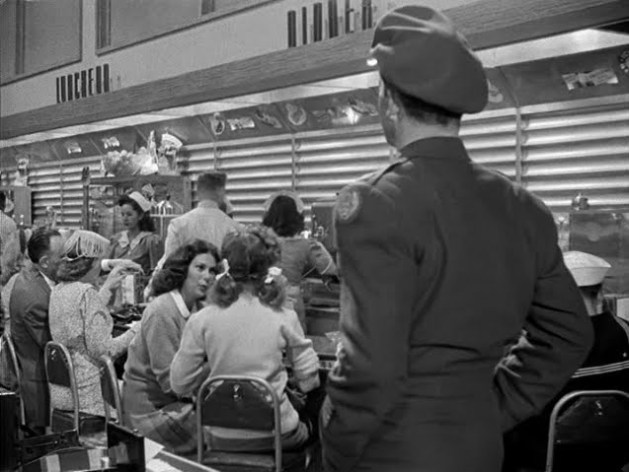


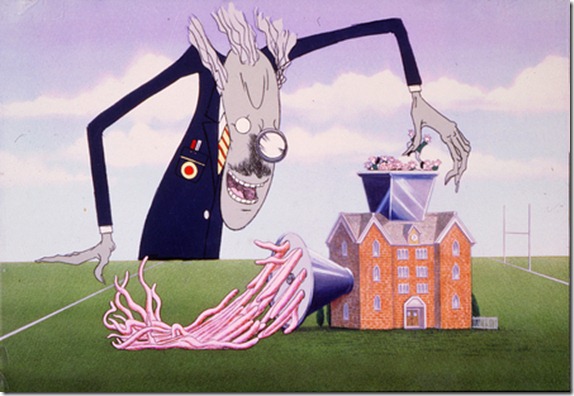


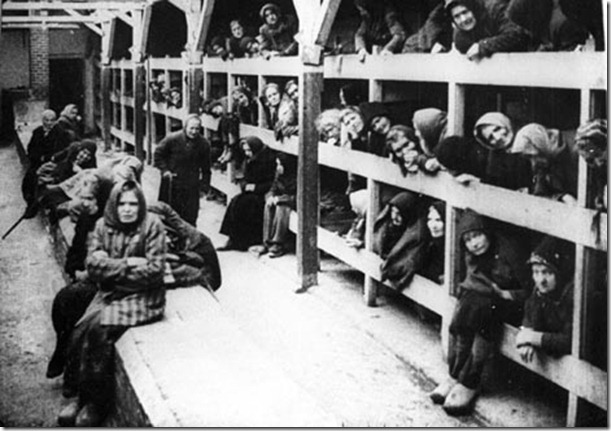


















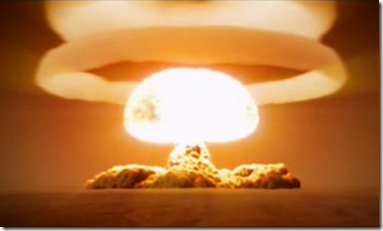






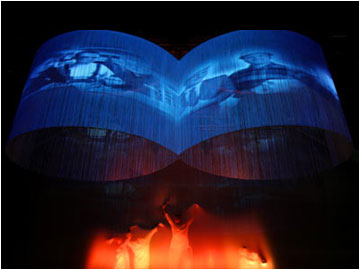









![clip_image006[4] clip_image006[4]](https://apocalypseknow.files.wordpress.com/2012/06/clip_image0064.jpg?w=615&h=242)
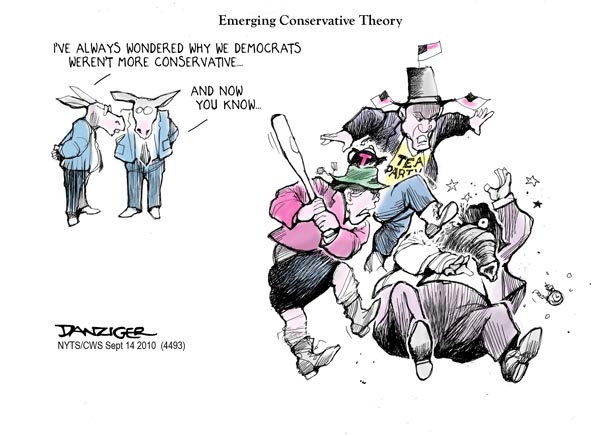















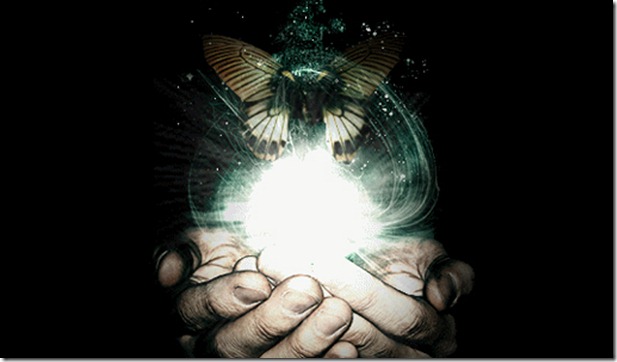














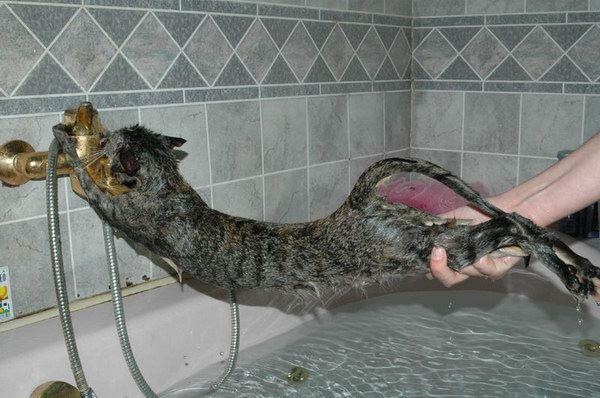



































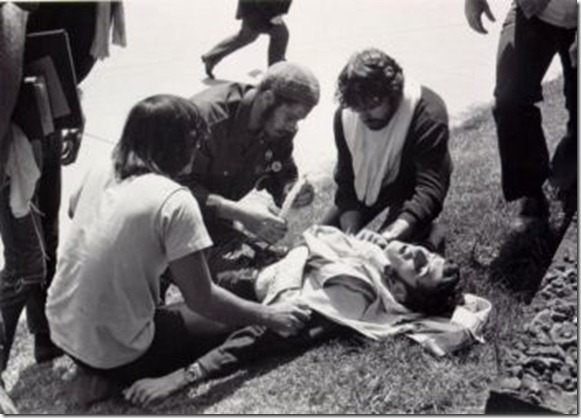































![6488199-vector-colorful-illustration[2] 6488199-vector-colorful-illustration[2]](https://apocalypseknow.files.wordpress.com/2012/05/6488199-vector-colorful-illustration2_thumb1.jpg?w=614&h=575)



























































































































































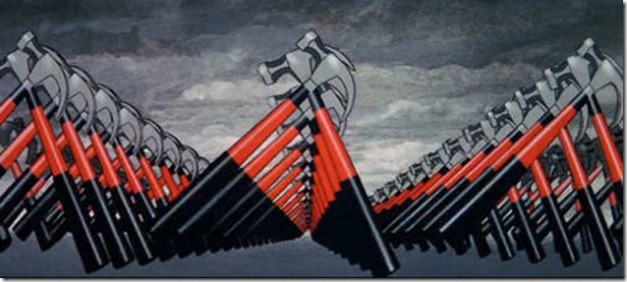






















































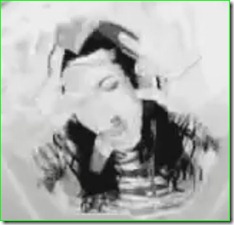




























![imageturtiyties_thumb[1] imageturtiyties_thumb[1]](https://apocalypseknow.files.wordpress.com/2012/03/imageturtiyties_thumb1_thumb.jpg?w=605&h=404)






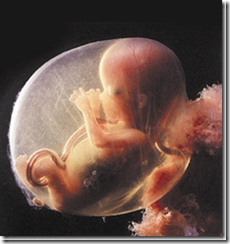





















![The Wall Movie 1982 (7)_thumb[1] The Wall Movie 1982 (7)_thumb[1]](https://apocalypseknow.files.wordpress.com/2012/03/the-wall-movie-1982-7_thumb1_thumb.jpg?w=626&h=315)





























































































































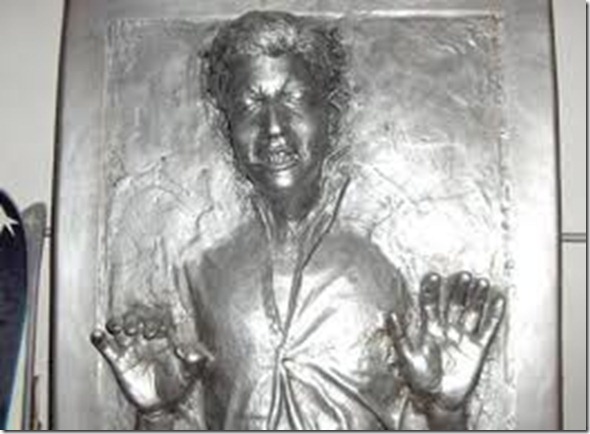
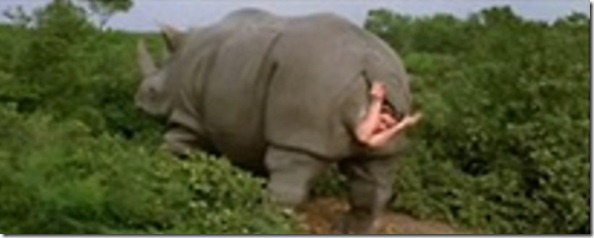


















Where There Is Hope and What Did You Expect Awakening to Look Like? Look Hard Enough, You Just Might See the Seeds of Light Amidst the Darkness Surrounding.
Posted by sillymickel in activism, authenticity, being yourself, Class, Culture, Generations, globalrevolution, History, individualism, life, meaning, nonconform, occupywallstreet, philosophy, Politics, psychology, spirituality on July 7, 2013
Chapter Ten: Where There Is Hope, Cultural Rebirthing
Societal Self-Analysis and Talk Show Soul-Searching for Peace … Sorry, I Know You Wanted to Hate Reality Shows.
The Price of Peace Is Inner Sight: Societal Self-Analysis, an Internet Reformation, and Talk Show Soul-Searching for Peace
Societal Self-Analysis
Culture War Replaced Cold War
We see the workings of these opposing tendencies to look away from problems or to embrace them by examining the reactions in America to the collapse of the Soviet Union. The disappearance of this huge object for distraction from inner unhappiness, about which one could rationalize the use of defensiveness and scapegoating, led to continued turning away through the emergence, in America, of a search for other societal scapegoats and therefore the “Republican revolution.” Culture War replaced the Cold War as the way one could be comfortably ignorant of one’s insides and self-assuredly distracted, self-righteously engaged.
This removal of a collective punching bag or scapegoat also resulted in a healthy turning toward the darkness within and a collective self-analysis in America. This reaction has brought to the fore many of our social and political shortcomings.
Talk Show Soul-Searching
We also witnessed the rise of reality shows as part of this societal pull to see beneath the covers of what is thought to be real. Now, progressives and intellectuals have lots of fun vamping about how superior they themselves are to such interests, as exemplified in reality shows. This can only be the position of elitists out of touch with the ways ordinary folks live their lives.
Sitcom Socialization
To make my point, let me back up a bit. The swagger that the Left, and intellectuals in general, display around reality shows is the same superiority they have expressed for decades concerning sitcoms. First, let me say that I consider most sitcoms and reality shows to be rather boring and a bit inane with their laugh and soundtrack framing. Yet, when I was a child, growing up in a medium-sized city in the coal country of Pennsylvania and coming from a very traditional family, it was only through such sitcoms that I had a chance to find out what a different style of family and parenting would be. Today, I would laugh at a “Father Knows Best.” But it was a step up and into socialization from the “Father Knows Little” or “Father Not Around” of many in my social stratum when I was a kid. This exposure allowed me, and many of my generation, to seek for more in our life and for better interpersonal family relationships…and eventually better parenting.
Yet, when I was a child, growing up in a medium-sized city in the coal country of Pennsylvania and coming from a very traditional family, it was only through such sitcoms that I had a chance to find out what a different style of family and parenting would be. Today, I would laugh at a “Father Knows Best.” But it was a step up and into socialization from the “Father Knows Little” or “Father Not Around” of many in my social stratum when I was a kid. This exposure allowed me, and many of my generation, to seek for more in our life and for better interpersonal family relationships…and eventually better parenting.
A Modern “Priesthood”
This is where righties have it right when targeting “hollywood” for many of the changes in our culture over the last half century…though they see that as a negative influence. But intellectuals and lefties blow an opportunity and lose support among ordinary folks through an unconscious haughtiness and a cultural snobbery they are blind to but display in their turning up their noses at popular culture. Luckily, as an anthropological social scientist, I can study popular culture and get away with it, though not without some snide commentary coming my way from progressive and professional circles. They simply will never understand an intellectual who can speak to working folks because he’s one of them. They simply don’t get my attempts to package the crucial understandings of modern science and social sciences, on which the existence of our very world depends, in words that are not primarily directed to and meant to appease the gods of academia. They consider themselves important within their tiny professional circles, thinking they are changing the world when no one even knows what they are doing beyond that constrained perimeter.
Luckily, as an anthropological social scientist, I can study popular culture and get away with it, though not without some snide commentary coming my way from progressive and professional circles. They simply will never understand an intellectual who can speak to working folks because he’s one of them. They simply don’t get my attempts to package the crucial understandings of modern science and social sciences, on which the existence of our very world depends, in words that are not primarily directed to and meant to appease the gods of academia. They consider themselves important within their tiny professional circles, thinking they are changing the world when no one even knows what they are doing beyond that constrained perimeter.
Keeping the People Down
Indeed the attitude of academics and progressives about popular culture, especially talk and reality show tv programming and although they would be appalled to ever think it, is no different from the attitudes of the Catholic church and the clergy about matters of faith during medieval times. There, too, we had an elite wanting to “keep out the unwashed.” There, too, we had a distinction between people in the know and the rabble, with the anointed ones requiring ordinary folks to go through them for matters of truth and faith. We had then also this sharp distinction between the “high culture” of the Church and aristocracy—exemplified in the chamber music of the time—and the “low culture” of the masses—exemplified by the folk music of the troubadours of that day.
Nowadays this poo-pooing of tv culture by intellectuals is the same kind of attempt to funnel reality to the masses through the filters of a new “priesthood.” The cultural purists and intellectual elites would prefer that for truth you go through them in academia, where you ‘d have to pay a toll of course, just as the priests of the Middle Ages required you to pass their way on the road to the divine.
Therapy for the Masses
At any rate throwing off the snootiness of intellectualism, I contend, allows us to notice that sitcoms, reality shows, and talk shows serve functions in society that are, overall, beneficial in advancing our culture and catalyzing increased growth. They may not reflect, yet, where intellectuals and progressives think we should be, but for many they show something beyond where they are.
We should know that they are overall helpful in our cause from the fact that conservatives want to attack hollywood and limit freedom of expression on any airwave. The fact that many reactionaries want to keep their children out of schools, home-schooled, and away from tv sets should be telling progressives something about the value of popular culture.
Rebirth Denied
American Rehab
If there weren’t reality shows, folks would have a harder time knowing appropriate ways for men and women to act with each other. The gains of feminism would not have spread so widely or as fast if they were not being modeled and reinforced repeatedly on talk and reality shows. They demonstrate parenting and social skills—“politically correct” ones, in the good sense—to folks who would otherwise not know any better than to behave crudely and abusively. They bring the world, geography, travel, and history to the masses.
They demonstrate parenting and social skills—“politically correct” ones, in the good sense—to folks who would otherwise not know any better than to behave crudely and abusively. They bring the world, geography, travel, and history to the masses.
Intellectuals quibble about the quality of that, which comes across as quite childish, for it arises as if out of a jealousy of others getting the attention they want and out of a fear of competition for informational matters around science, culture, and humanities. It strikes me as more than ironic that those on the Left who would wish people to wake up from their zombie slumber would want to push programs of literature or drama where truths are filtered through the consciousness, and unconscious, of the artist, while wishing to deprive folks of a direct look—however contrived, it is actual reality and not scripted—at the world around them and people’s actual unplanned behavior and spontaneous reactions to unusual events.
Seeing people’s behavior in some of these shows does often remind me of the dynamics I’ve seen in therapy groups, and some of the personal changes in the participants mirror some of the evolutions I’ve seen in folks undergoing deep experiential psychotherapy. The audience participation part often sounds like group therapy or an intervention. I’ve been struck by how some of the group processes in the show remind me of family day in rehab, with folks reflecting back what they see in each other and how others’ behavior has affected them. These are all things that conservatives cringe at…actually hate. Yet liberals, except for notable exceptions like Jerry Springer, are not seeing the opening they have here. Lefties are fighting rather than using these forces, which are in the direction of personal growth and, cumulatively, much needed societal change.
As a psychologist and simply someone who loves people, I am fascinated by some of the things I see in these shows. They can be heart-wrenchingly real at times. So it occurs to me that folks who disparage these shows, comparing them with literature and dramatic productions, is another thing where some are wanting to have their reality filtered, managed, and packaged for them, lest it be too “disruptive” to their prejudices of things.
The Price of Peace Is Inner Sight
The upshot of all this is to say that just as a lack of a Cold War caused both collective acting out—another war, a Culture War—and collective inner searching via television talk shows, documentaries, and such. So also the prevention of “hot” wars on an international, not just intercultural, scale and the cause of peace in general require such inner soul-searching and such confrontation with one’s darker sides. And if we must, it is better to endure the psychotic acting out of a culture war—with its battles played out on the airwaves—than an actual war.
So also the prevention of “hot” wars on an international, not just intercultural, scale and the cause of peace in general require such inner soul-searching and such confrontation with one’s darker sides. And if we must, it is better to endure the psychotic acting out of a culture war—with its battles played out on the airwaves—than an actual war.
For is there any doubt that either of these or any combinations of these alternatives, however uncomfortable and even violent…on a smaller scale…at times, is a small price to pay compared to the price of outright war and violence which, by any measurement, is a cost horrifyingly huge and unacceptable?
America Currently Refusing to Pay Such Price
The converse of this is also true: When the dramas wanting to be discussed are suppressed in the mainstream media, it is as stifling of the growth of a nation as an individual’s growth. Unfortunately we have seen this as well recently. There have been massive worldwide and nationwide Occupy Wall Street demonstrations, massive Wisconsin union outpourings, and events in Japan and about Fukushima that the American people really want to and need to know and discuss, but they are being blacklisted from being broadcasted on. There has been a change in government in Iceland, with banksters being jailed, that Americans are not hearing about; there have been demonstrations in Japan about their insane response to their tragedy, which Americans won’t be told about; there have been massive demonstrations in Israel against the colonial policies of their own government that curiously do not make it into the offerings of news programs. These are things that in the Nineties would have fed the talk on tv and stimulated the necessary societal hashing out for there to be a chance of going beyond them.
There has been a change in government in Iceland, with banksters being jailed, that Americans are not hearing about; there have been demonstrations in Japan about their insane response to their tragedy, which Americans won’t be told about; there have been massive demonstrations in Israel against the colonial policies of their own government that curiously do not make it into the offerings of news programs. These are things that in the Nineties would have fed the talk on tv and stimulated the necessary societal hashing out for there to be a chance of going beyond them.
What Is the Cost of Denial? Of Complacency?
Internet Revolution Is Another Reformation
Luckily all this is changing as the internet and social networking have upended the academic elitists, swarming around and over their petty barriers of intellectual privilege. The blogsters and “rabble” of the net have taken over the cultural dialogue of the time as assuredly as Martin Luther and the Reformation changed religion forever and helped to bring to an end the cultural stagnation of the Middle Ages and to ignite an Age of Reason and of Enlightenment.
We Could Use More “Narcissistic” Generations: Know Thyself … Let the Buck Stop Here!
Moratorium … Let the Buck Stop Here! We Could Use More “Narcissistic” Generations
“Know Thyself” ~ “Narcissistic”?
Self-Discovery, Soul-Searching, Psychological-Mindedness, Self-Analysis – Sixties Generation
“Let It All Out? No, Leave Some of It In!” – Pat Buchanan, Fifties Generation
These highly defended and fear-minded conservatives, prone to projection, are incapable of appreciating the integrity of an inner-thinking generation like the Boomers are. These outer-minded authoritarians would not get, would outright hate those who “questioned authority” in the Sixties.
Let the Buck Stop Here!
If Not Us, Who? If Not Now, When?
We had seen normal ways of doing things to be impotent and often dangerous and most importantly leading to apocalyptic endings in our near future. This understanding is what was responsible for all the “non-normal” behaviors my generation displayed—communes, confrontations, clothes, relationships, organics, alternative ways of everything…an entire counterculture. We have been laughed at for essentially being ahead of the curve on the messages of modern events. We have been called crazy for our inconvenient prophecies, virtually all of which are now coming to pass.
While I and my cohorts, to use just one example, spoke out on the dangers of nuclear energy and in particular the insanity of building plants on fault lines, the professional pundits scoffed and boasted they lived near nuclear plants. This was thirty years and more before the world ever heard the word, Fukushima. The examples like this are endless. We saw all these unworkable endings and asked ourselves, “What would be a real way of doing that?” “What would be a workable, sustainable way?” “What would be a sane and happy life, ethic, and lifestyle.” “What would be a loving, peaceful mode of being?”
While we sought to redo culture from scratch, building it on perennial and unimpeachable principles, the threatened elders and the jealous youngers, who would soon enough come behind, poked fun from within the confines of their assured and comfortable wrongness. They called us narcissistic for thinking we could look at ourselves and the world and dare to think we could change it from ancient ways. They thought we were making ourselves important that way, putting on airs, even. Actually we were shouldering responsibility we did not want—yearning for a simpler, less serious time—but which we accepted for the sake of all those who would come after, knowing their very existence depended on our actions. We took faith in the touchstone of love itself—the only thing that did not crumble under examination—and sought to bend all emerging along its outlines.
They called us narcissistic for thinking we could look at ourselves and the world and dare to think we could change it from ancient ways. They thought we were making ourselves important that way, putting on airs, even. Actually we were shouldering responsibility we did not want—yearning for a simpler, less serious time—but which we accepted for the sake of all those who would come after, knowing their very existence depended on our actions. We took faith in the touchstone of love itself—the only thing that did not crumble under examination—and sought to bend all emerging along its outlines.
What others will never get is that our “overexamined life,” our “psychological-mindedness,” our perinatal propensities, and our soul-searching and self-analysis were not about being narcissistic. It was about needing to start everything anew as a rational response to the horrors we saw about us in our culture and in the world… horrors which we were correct in trying to address at the time. For their existence today, because of our inability to be completely successful in remedying them, are bringing about all the political, economic, and environmental armageddons I’ve been discussing in this, and its related, books. And we knew, and still know, that only some change huge and radical will help us, and for that we need to find and stand upon the deepest and firmest of ground within us. That is what we’ve been looking for, are still looking for…only now we have lots of company .
Better Hitler Had Jumped Into Mosh Pits: A Drive to Healing, the Hard Rain Fallin’, and Millennial Promise
A Drive to Healing and What Did You Expect Peace to Look Like? Better Hitler Had Jumped Into Mosh Pits
A Drive to Healing
We cannot expect that everyone will heal their birth traumas when they arise into consciousness during periods of peace. However, we can expect—especially now that there is understanding of these dynamics and there are techniques and modalities available for healing them—that some people will!
Furthermore, even the more ritualistic and superficial yet blatant regressions to infancy, birth, prenatal, or even prior to that—for example, as Mayr and Boelderl describe in Europe—are not the indication of a “death drive” or “death instinct” as these researchers claimed. [Footnote 3]
What Did You Expect Peace to Look Like?
Better Hitler Had Jumped Into Mosh Pits
What Might We Expect?
Millennial Promise
“A Hard Rain’s Gonna Fall”
From the roads and TV screens of America the scenery can often appear bleak. Sure, heavy changes are coming down…but what should we expect? “A hard rain’s gonna fall,” sang Bob Dylan. And that’s what it takes to blossom the spring. Look hard enough, you just might see the seeds of Light amidst the darkness surrounding.
Evidence in Our Collective Dreaming
Next we will take a look at one of the projective systems of our society, specifically, our cinema, to see if it shows evidence of the change of consciousness that we have here been describing as necessary to derail the cycles of war and violence that have plagued our species for millennia uncountable and have led us to the brink of extinction.
Films are both the collective dreams of our society as well as the only truly widely shared method of collectively experiencing a nonordinary state of consciousness. Thus they are telling, in the messages they contain, as well as powerful in their impact on the audience, who in this mild nonordinary state of consciousness are more open to suggestion and to receiving mental impressions and information.
widely shared method of collectively experiencing a nonordinary state of consciousness. Thus they are telling, in the messages they contain, as well as powerful in their impact on the audience, who in this mild nonordinary state of consciousness are more open to suggestion and to receiving mental impressions and information.
We will look to examples from films of the last few decades for indications that our collective consciousness is actually changing and that there are grounds for hoping that we will be able to stave off apocalypse…creating instead the quantum leap to an Earth rebirth.
Footnote
1. For “overexamined life”see Keniston, op. cit., 1965; for “psychological-mindedness” and “self-analysis” see Keniston, op. cit., 1968, especially p. 81.
2. Davis, op. cit., especially Ch. 7, “The Great Society and The Youth Revolt.”
3. Mayr and Boelderl, op. cit., p. 149.
Continue with Apocalypse – No! Chapter Eleven: Control Versus Surrender … Heaven Leads Through Hell
Return to Apocalypse No! Chapter Nine: Regressions in the Service of Society — Messy Healing
Invite you to join me on Twitter:
http://twitter.com/sillymickel
friend me on Facebook: https://www.facebook.com/sillymickel
Share this:
50s, 60s, 90s, abyss, academia, act out, activism, activist, activist youth, Adolf Hitler, Age of Enlightenment, Age of Reason, airwaves, alternative, alternatives, Alvin Lawson, America, Anita Hill, anita hill clarence thomas, anointed ones, Anthropology, apocalypse, aristocracy, Arthur Janov, artist, Baby Boomer, bankster, behavior, Bill Clinton, Birth, birth trauma, birth traumas, Bob Dylan, cable news networks, Carl Jung, Catholic Church, Catholic priests, Celebrity Rehab, chamber music, child, child-caring, child-rearing, children, cinema, civilization, Clarence Thomas, clarence thomas hearings, clergy, climate, clinton lewinsky scandal, cold war, collapse of the soviet union, collective regression, college students, commentary, commune, complacency, confrontation, Consciousness, conservative, conservatives, contemporary society, control, coul country, counterculture, craziness, crazy, culture, Culture War, current-events, death, death drive, death instinct, defensiveness, delegated release, denial, derogatory, die, disease, dissociation, distraction, Divine, documentaries, dreams, dynamics, echo generation, ecology, Ego, elders, elites, elitists, enemy, Environment, Europe, Evolution, experiments, extinction, faith, family, fascism, Father Knows Best, feminism, fetus, feud, Fifties, Fifties Generation, film, filthy rich, folk music, freedom, freedom of expression, Frontline, fukushima, generation, generations, God, group therapy, growth, hard rain, hate, healing, healing crisis, health, healthy, high culture, History, hollywood, home schooling, horror, humanities, Iceland, ignorant, infancy, inner exploration, integrity, intellectualism, intellectuals, internet, introspection, japan, Jerry Springer, Kenneth Keniston, know thyself, lefties, let the buck stop here, liberal, life, literature, love, loving, low culture, Martin Luther King, masses, matrix, Mayr and Boelderl, media, medieval times, Middle Ages, middle class, Millennial Generation, MLK, modalities, Moratorium, mosh pit, mosh pits, movies, mystical quest, narcissism, narcissistic, nation, Nature, Nightline, Nineties, nonordinary state of consciousness, nuclear, nuclear energy, nuclear power, nuclear power plant, O. J. Simpson, Obama, occupy wall street, orgy, overexamined life, overpopulation, ows, pacifier, pain, parenting, parents, Pat Buchanan, peace, Pennsylvania, perinatal, planet, Planetmate, Politics, pollution, popular culture, prejudice, prenatal, prenate, pretensions, price, price of peace, priesthood, professional, progressives, projection, projective systems, prophecy, psychodrama, psychodynamics, psychogenic mode, psychological mindedness, Psychology, psychosis, psychotherapy, punching bag, purist, quantum leap, quest, question authority, rabble, race relations, reactionaries, reality, reality show, rebirth, rebirthing, reformation, regression, regression in the service of the ego, rehab, relationships, Republicans, researcher, responsibility, revolution, righties, ritual, rituals, rock concert, sane, scapegoating, scenery of healing, schools, science, self, self discovery, self examination, self-analysis, self-destruction, self-righteousness, sexual abuse, sexual harassment, sigmund freud, sitcoms, sixties, snobbery, snootiness, social networking, social rituals, social science, socialization, socializing, society, soul searching, Soviet Union, spanking, spare the rod, spiritual, spiritual quest, spontaneity, spouse abuse, suggestion, SUPERIORITY, Survivor, sustainable, symbol, talk show, television experiential psychotherapy, terrorism, the Left, The Right, The View, therapy, trauma, troubadour, truth, tv, unconscious, understanding, unhappiness, union, unwashed, values, violence, vision, war, wisconsin, womb, working class, youth, zombies
Leave a comment